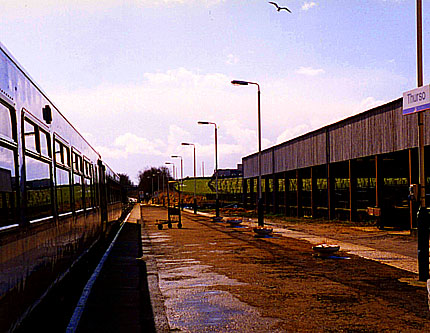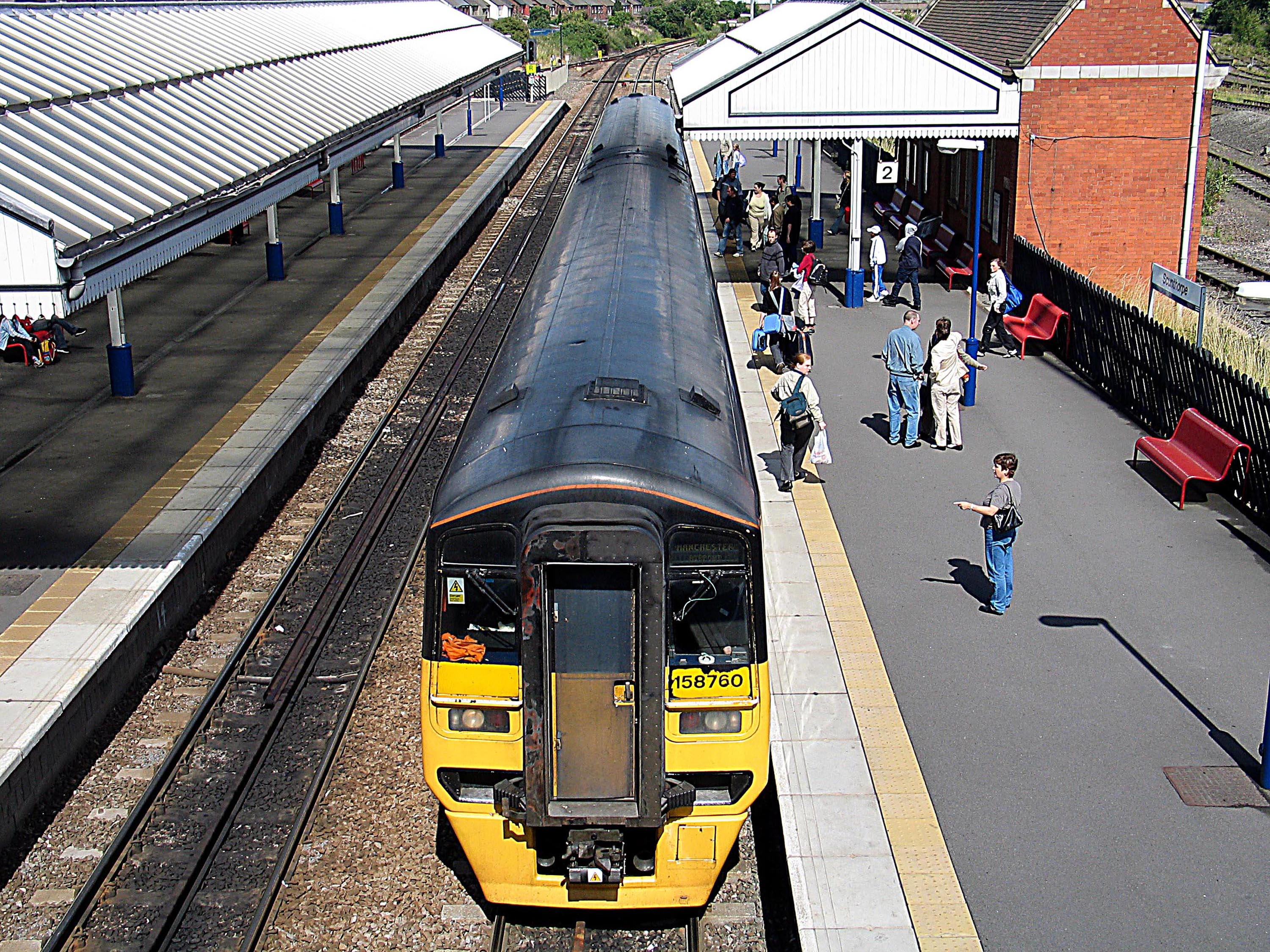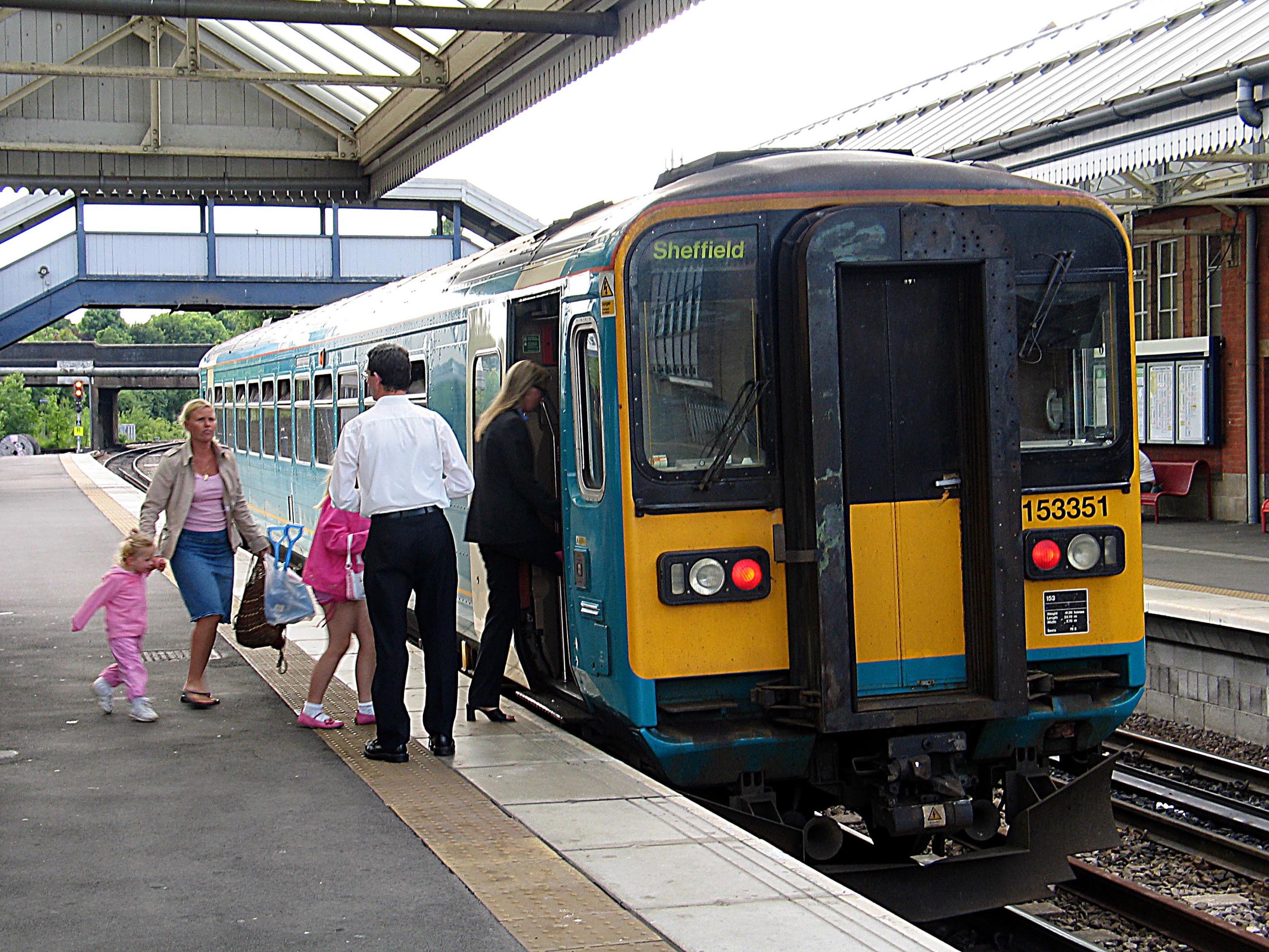Most main stations are quite impressive, which is not always the case with smaller ones. Yet, in my opinion, there are some quite exquisite small stations and a few of those I will identify below. Similarly the slow trains that use the small stations are not as dramatic as the express trains that pass them by, but they are not without interest. The arrival and departure of a train, happening a thousand times each hour at thousands of stations, is a beginning or an ending, a greeting or a farewell in every traveler's story.
Here is a random peek at life's "brief encounters" at small stations...
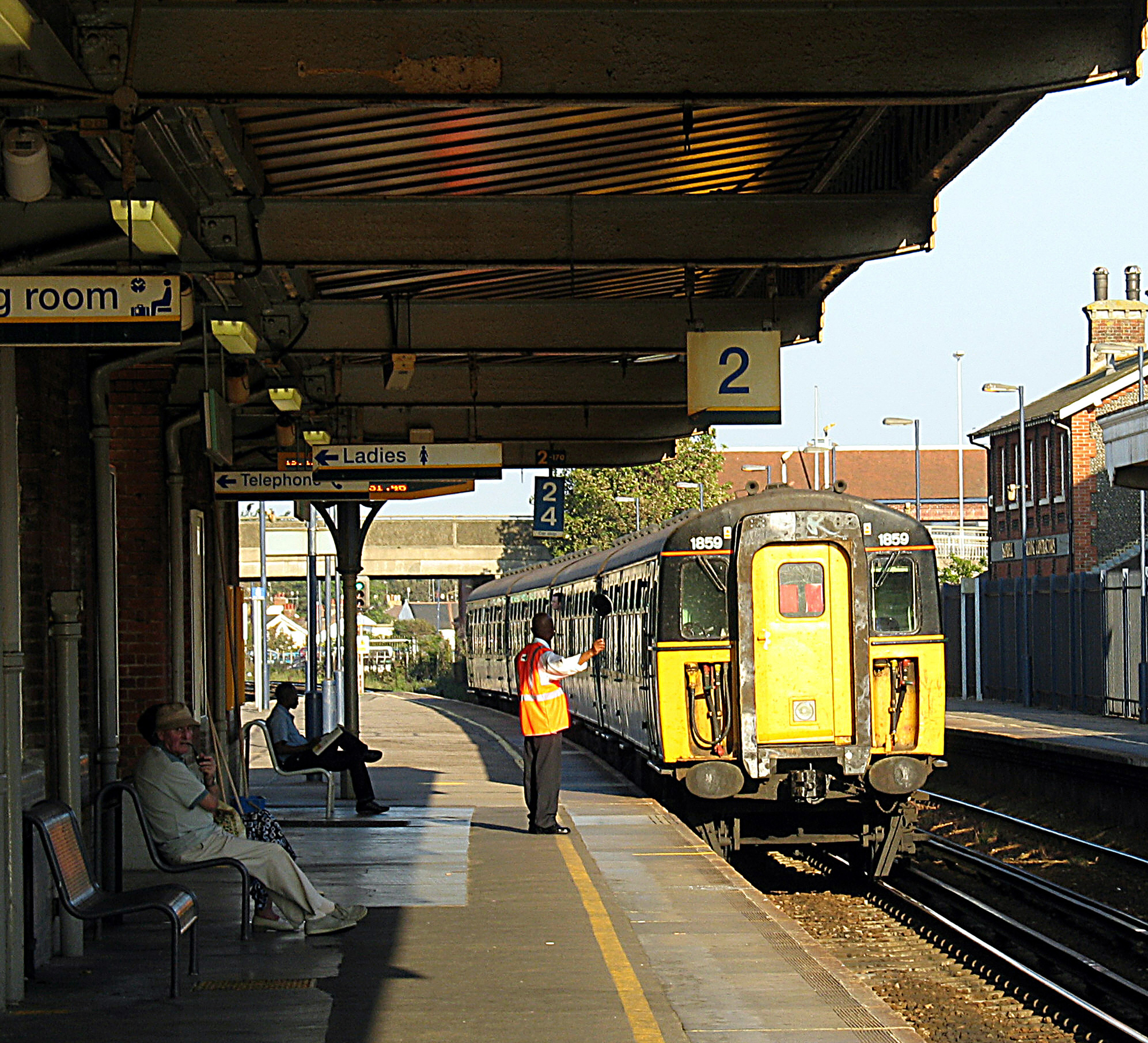
This is the scene on a peaceful September afternoon at Worthing station. The platform dispatcher has just waved off the stopping train to Brighton and holds his pose for a moment. Passengers waiting for the London train enjoy the sunshine but show little interest.
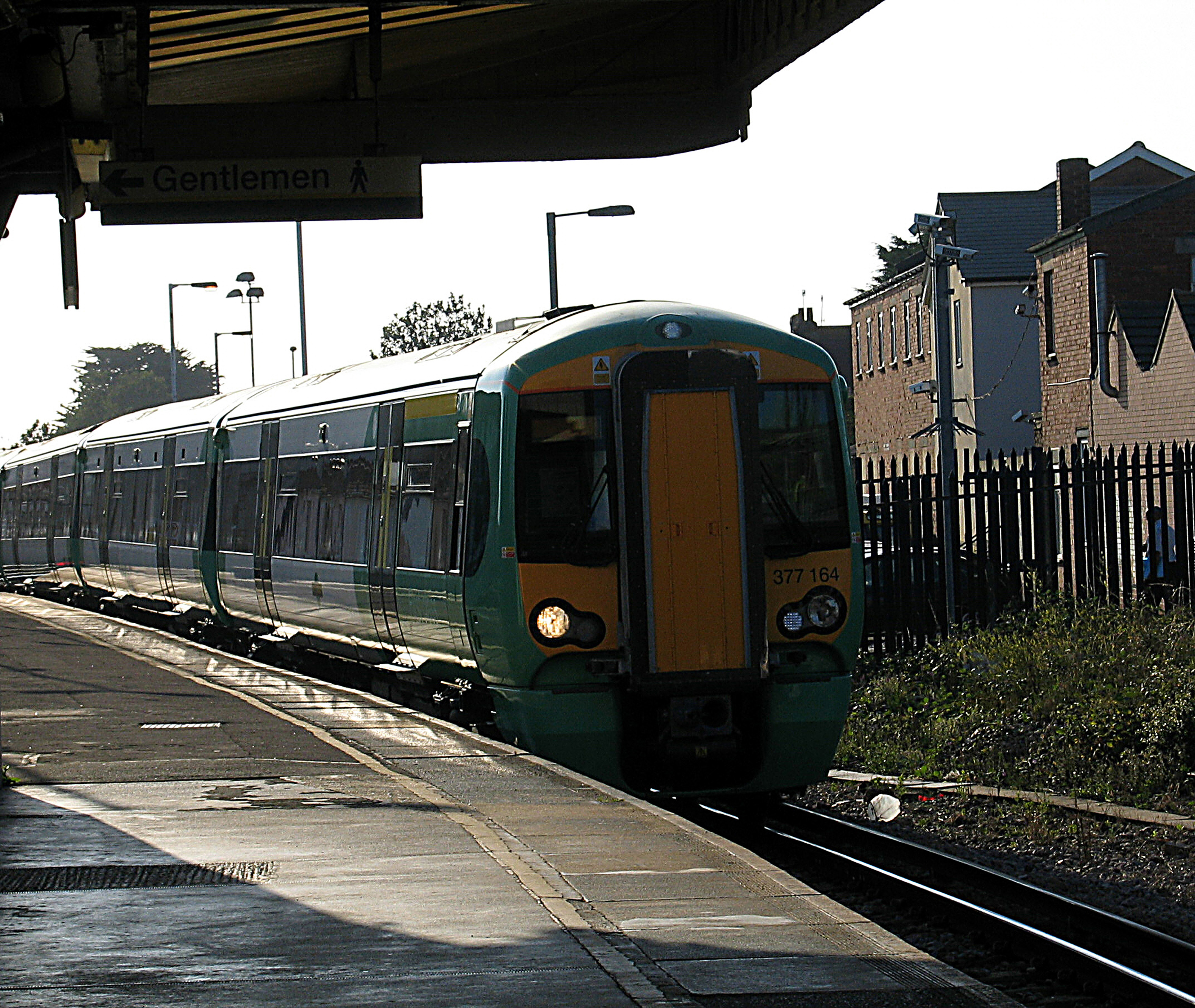
Elsewhere on Worthing station the London train arrives on time.

A stopping train to Bristol calls at Freshford. These trains which combined minimal space with heavy demand became so unbearably overcrowded at peak times that the passengers had a fare strike a few years ago. Overcrowding does not seem to be too much of a problem on this occasion.
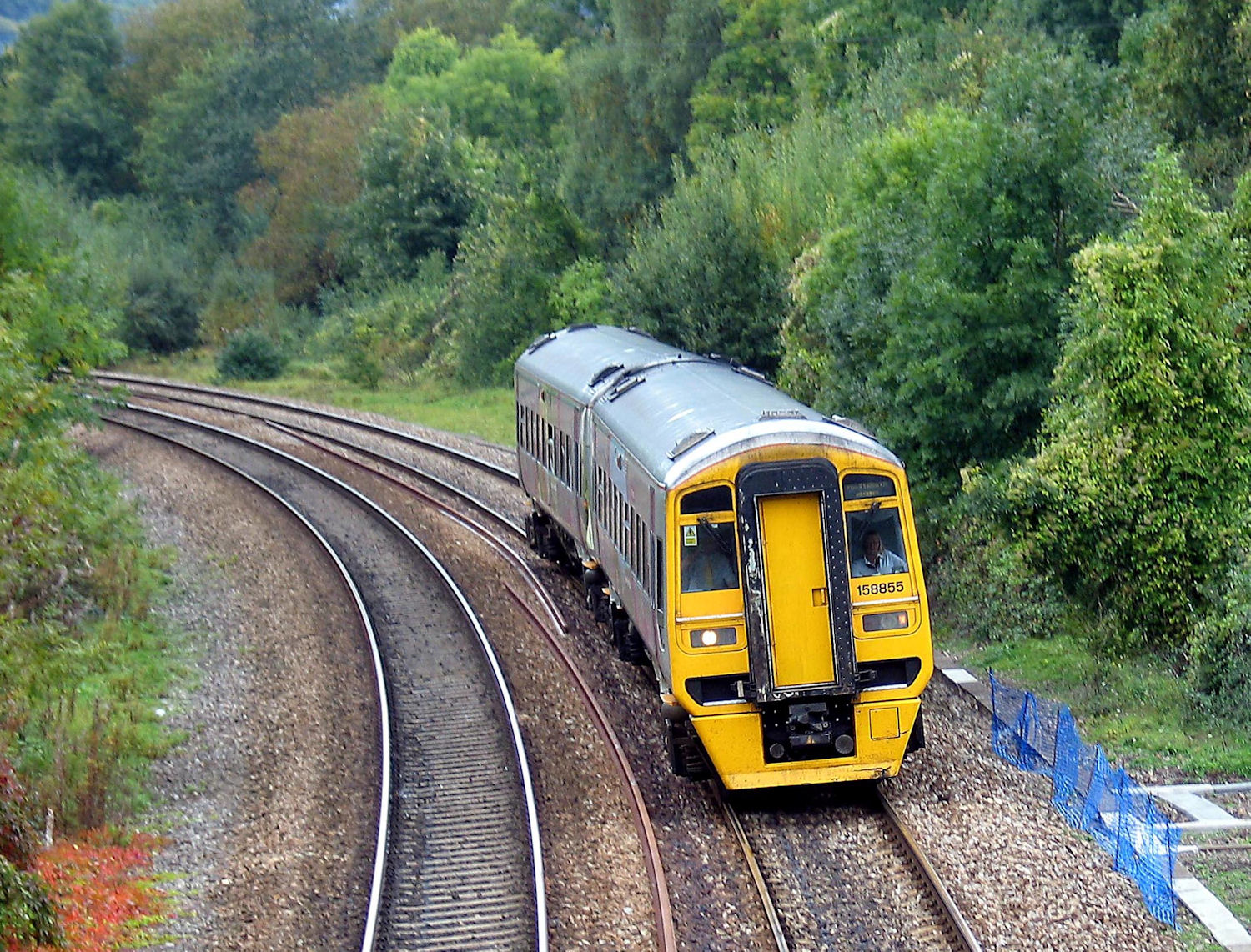
A Portsmouth train, approaching Freshford at speed is twice as long but often equally crowded.
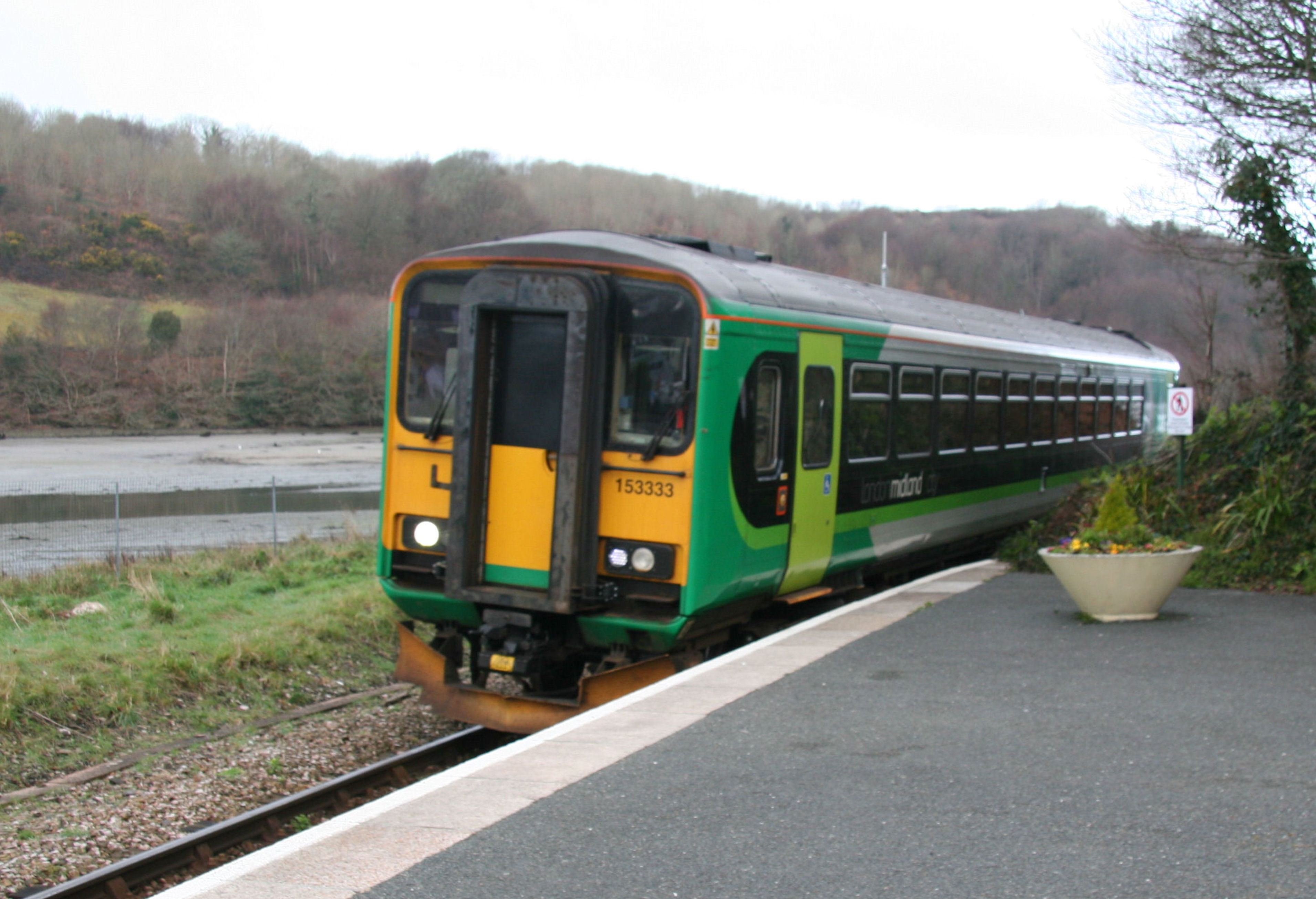
A branch line, where single coach trains are more appropriate, is the one between Liskeard and Looe, where this train is arriving.
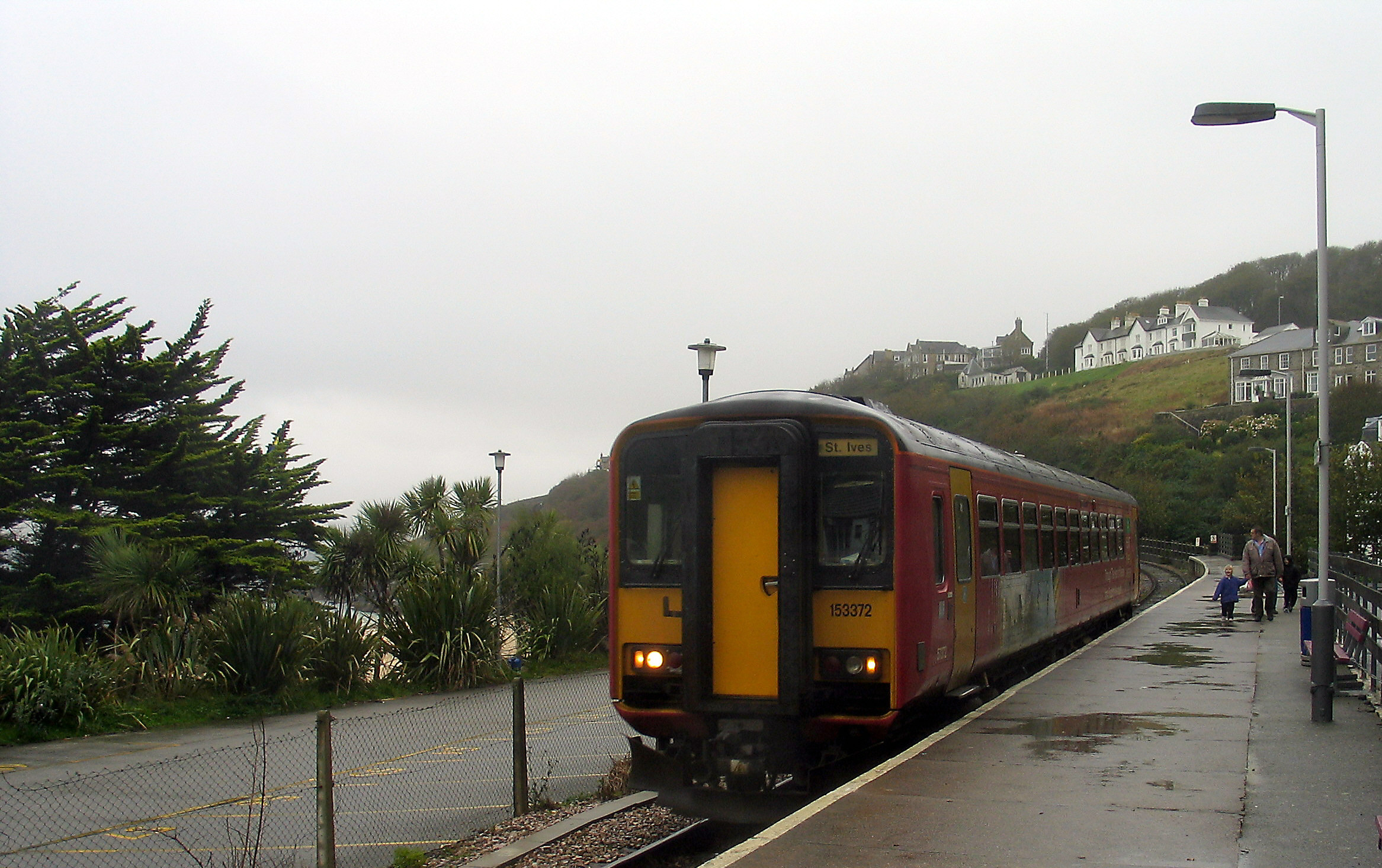
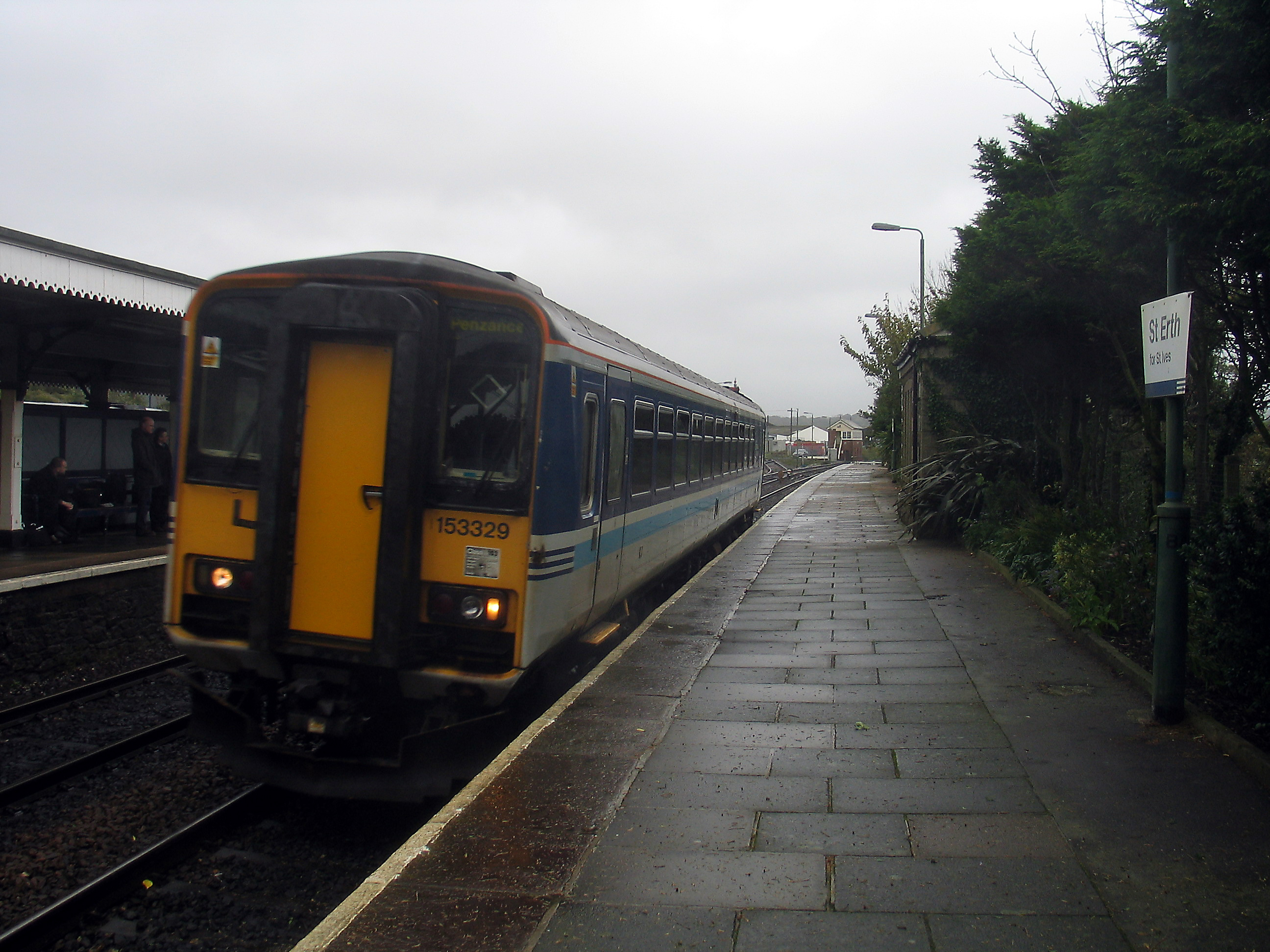
The attractive branch line between St Erth and St Ives is adequately served by single coach trains most of the time. St Ives' original station has been demolished to make room for car parks. St Erth is as originally built and much more pleasing.
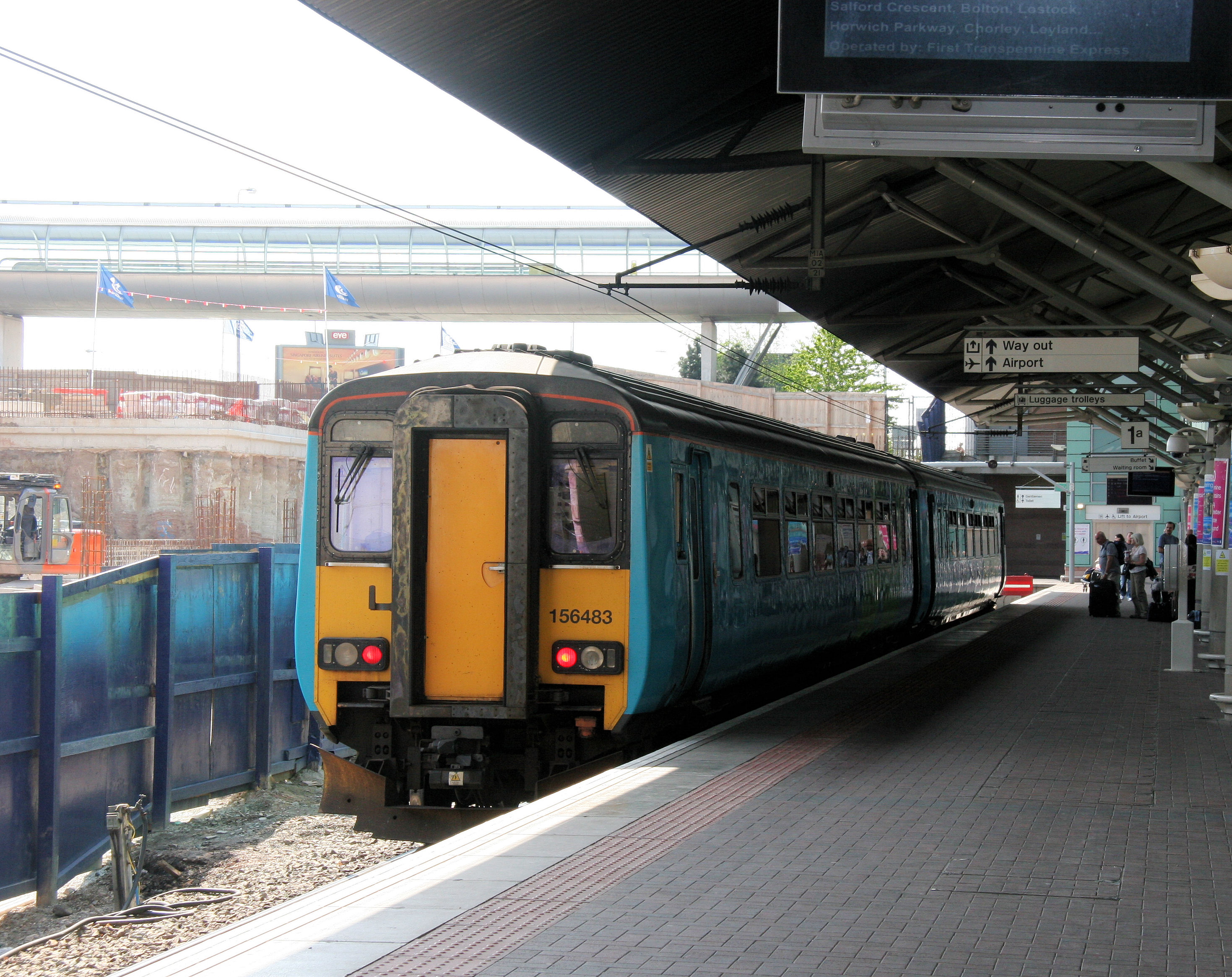
The rather unlovely Manchester Airport terminus.
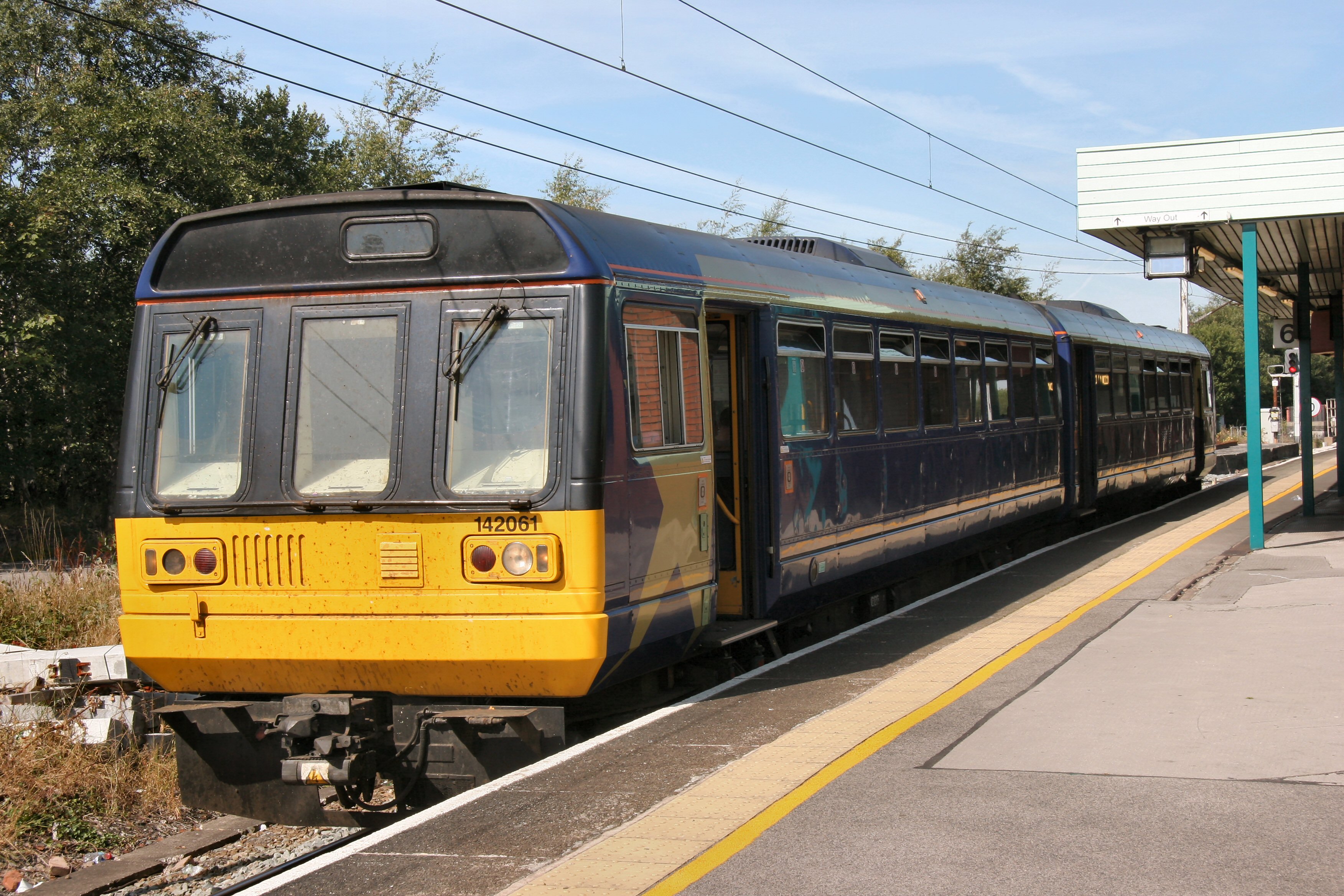
An unidentified train waits at the equally unlovely Wigan North Western. This train is a "Pacer" unit, basically a bus adapted to run on rails. If your brief was to build a vehicle that pays no particular attention to passenger comfort and gouges out the maximum income from a minimum investment, then something like a "Pacer" is what you would design. When the customers have no other options for their travel needs and have become resigned and compliant, it is the ideal money making situation for the share holders. In reality it is the exploitation of a monopoly.
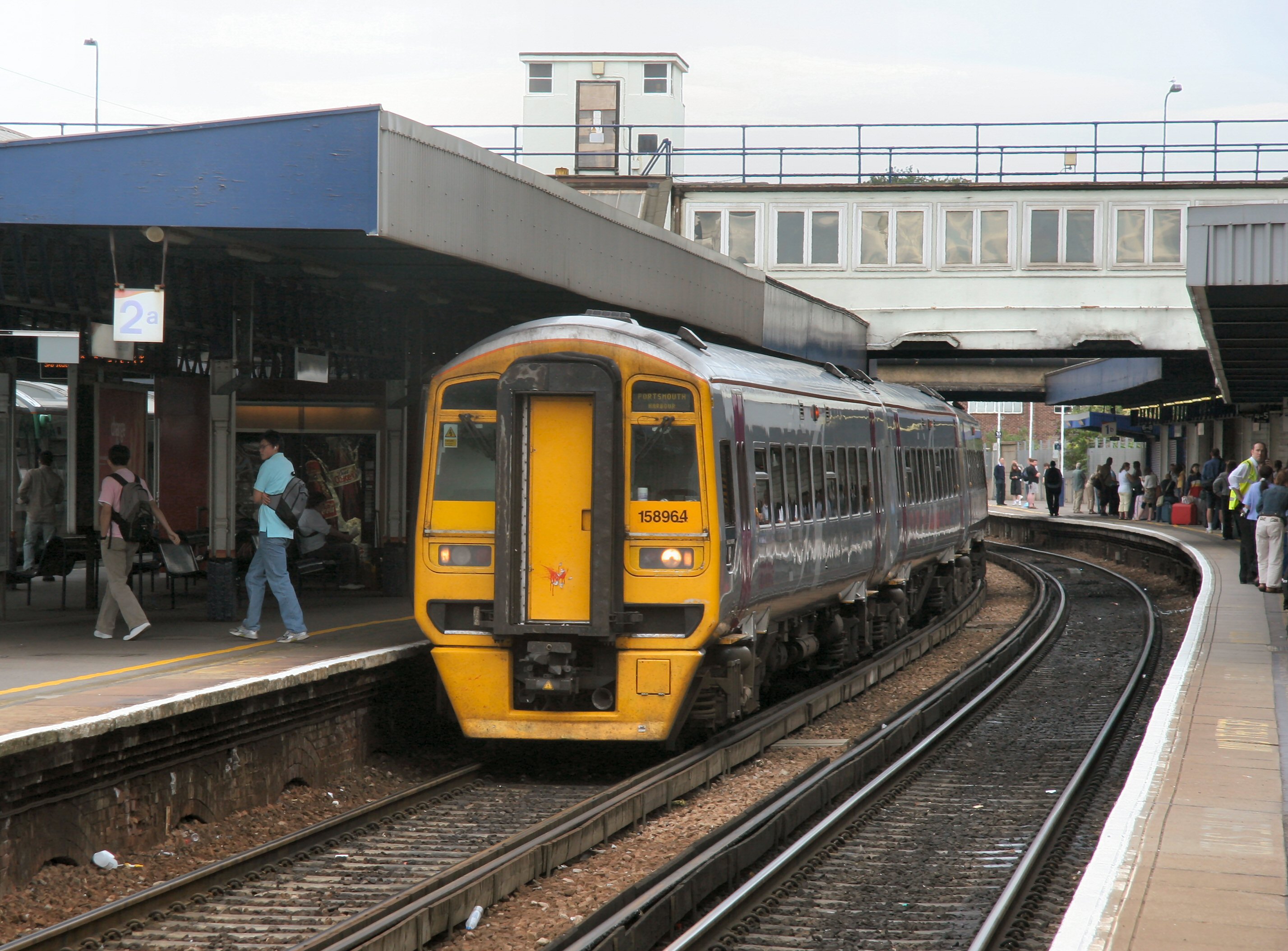
A train for Portsmouth harbour at Clapham. The Southern Region has the ugliest trains.
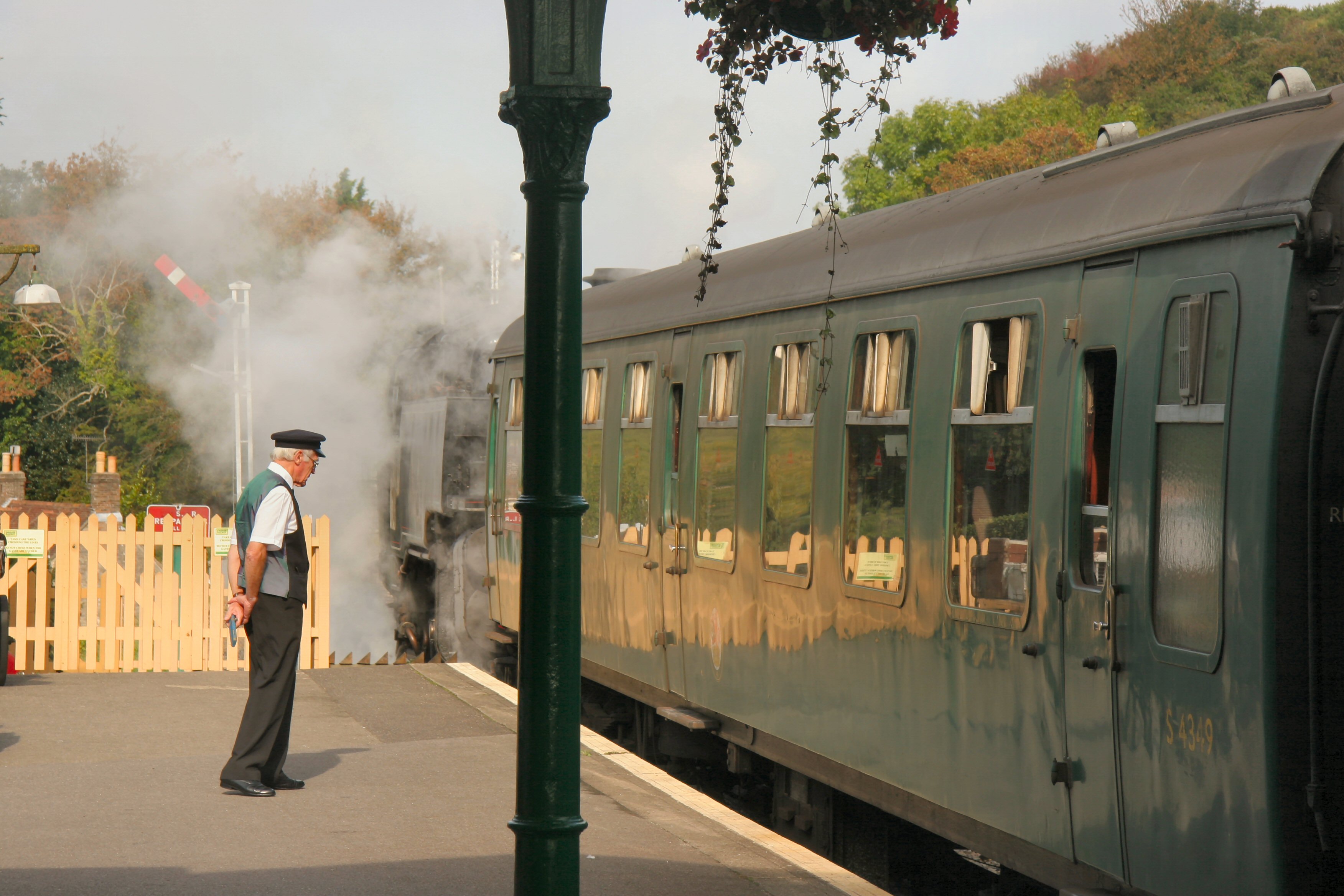
..which was not always the case.
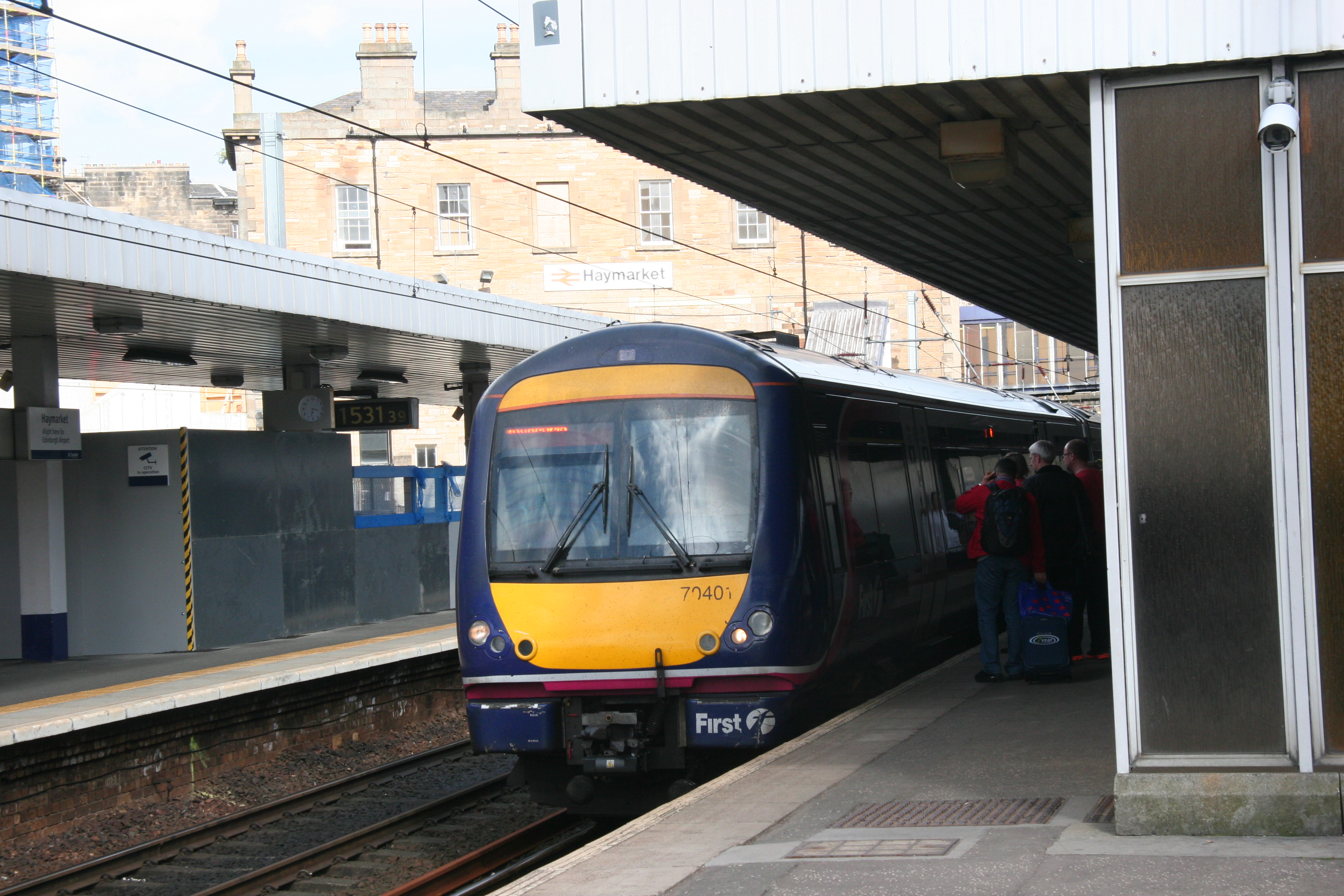
A Fife Circle train picking up at Haymarket.
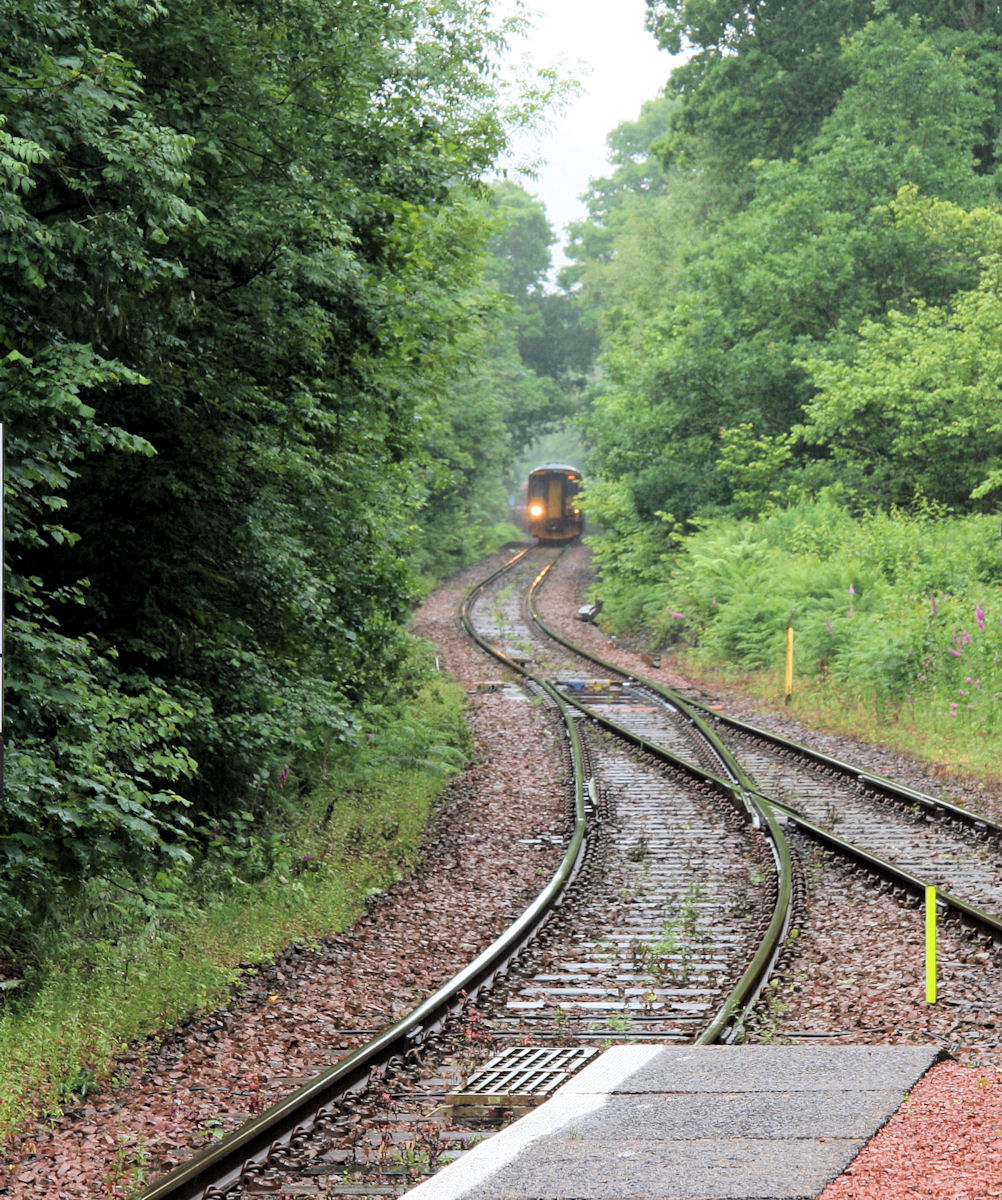
A train from Glasgow to Fort William approaches Ardlui on the West Highland Line.
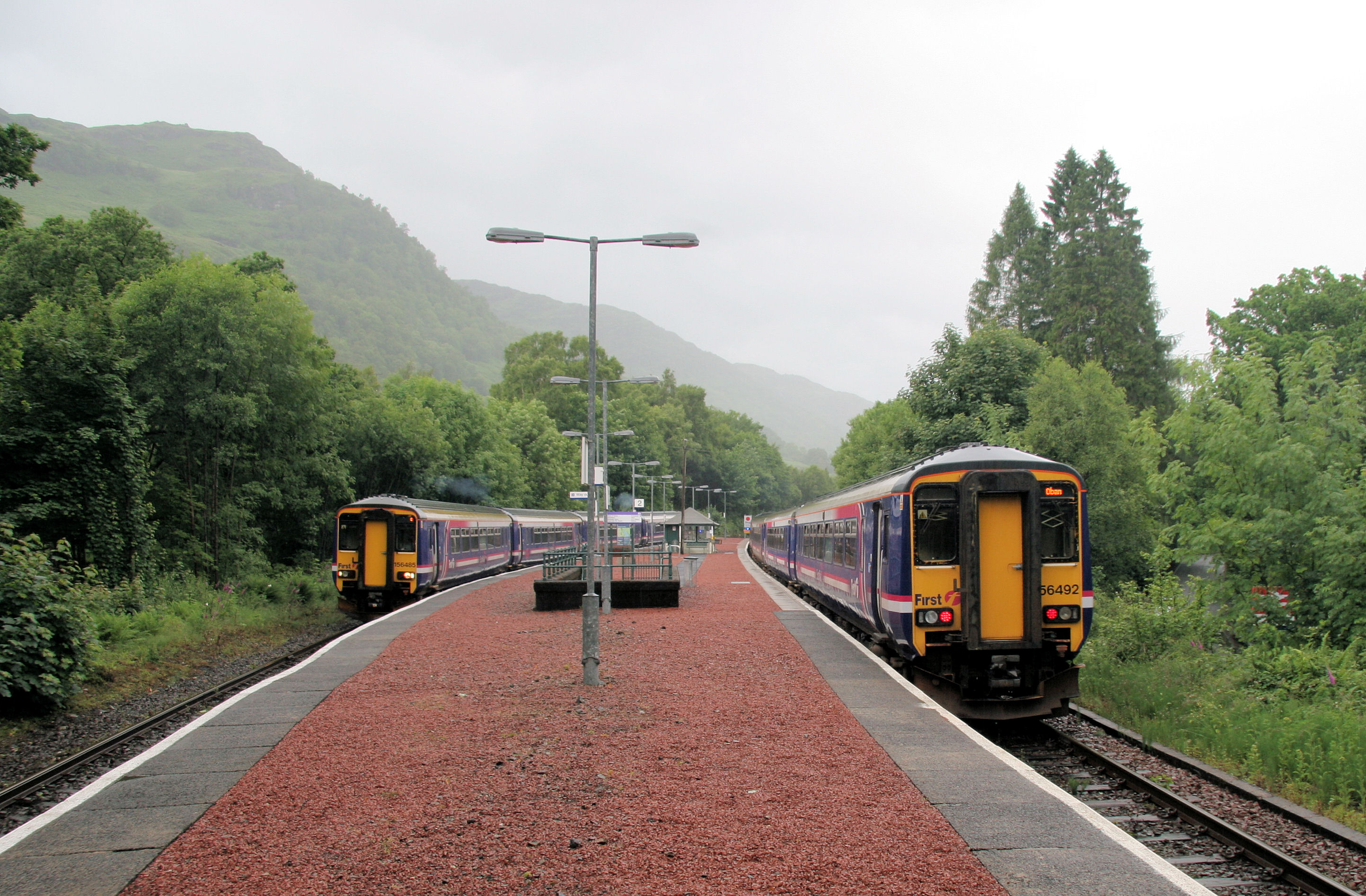
At Ardlui it passes the Oban to Glasgow Queen Street service
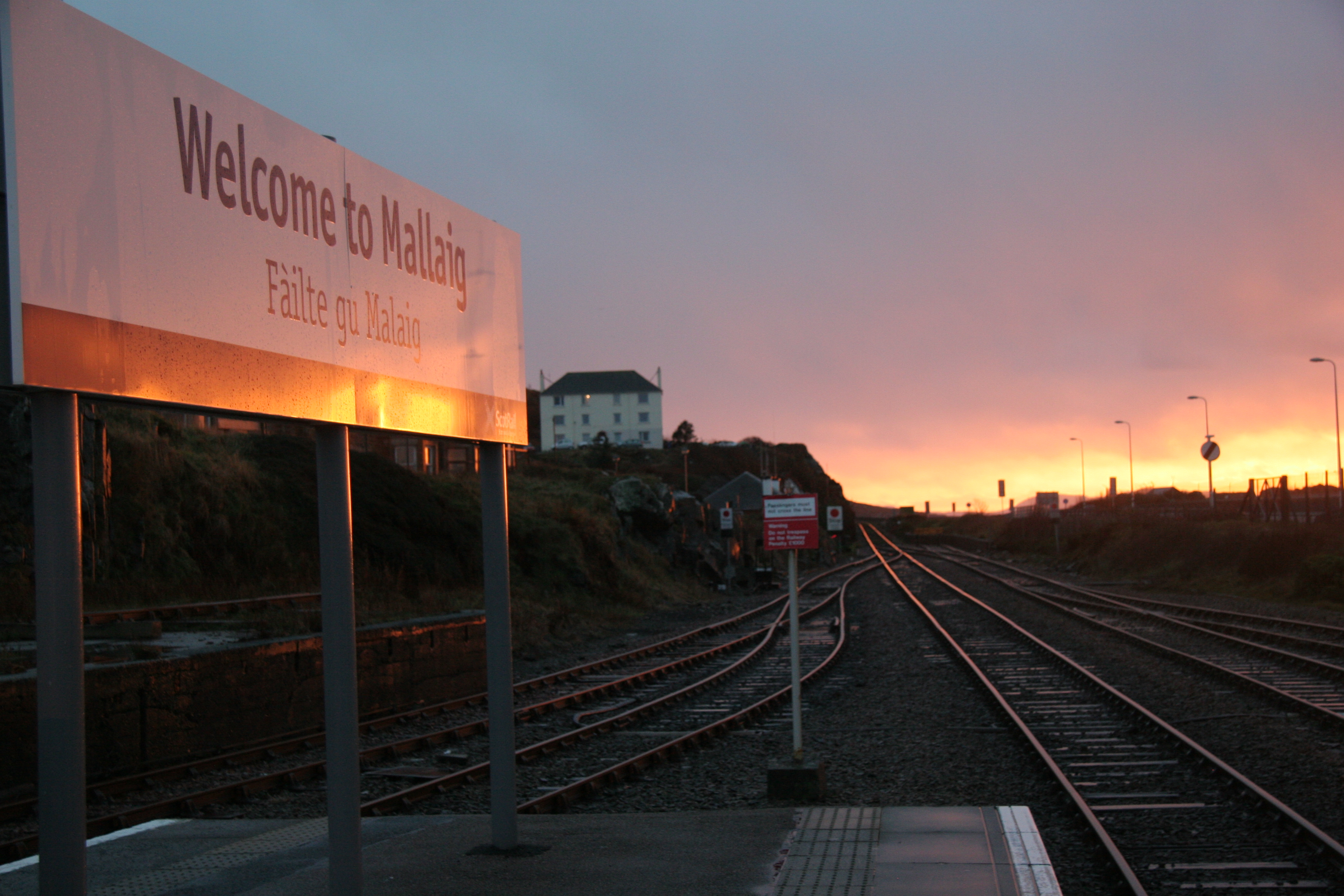
At the very end of this line is Mallaig where, after the rainiest of rainy days, the skies clear at the end of the day.
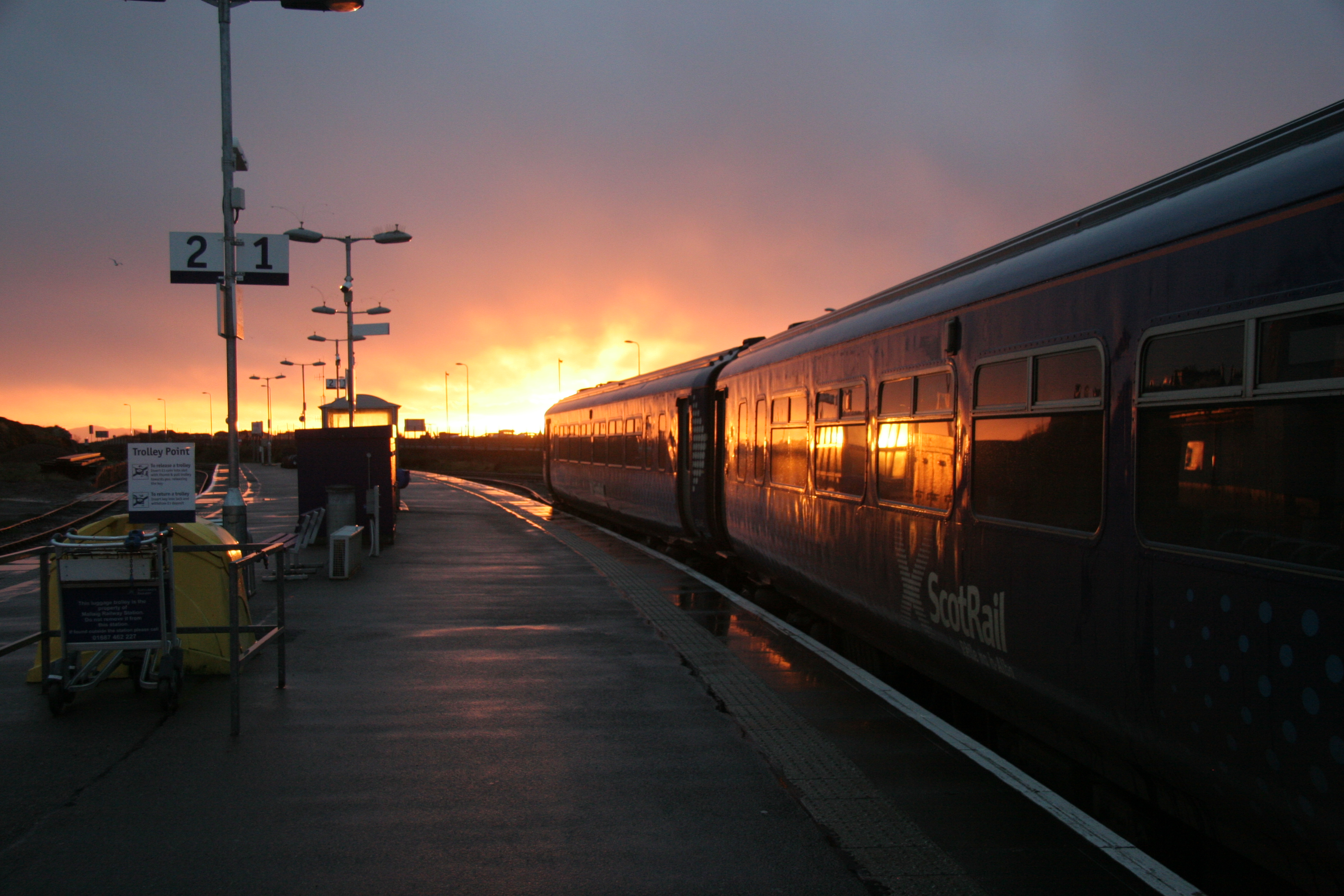
The last train back to Glasgow sets off in a difficult light for the driver.
The end of the line, literally!
I have a theory that Scotrail has done a deal with Richard Branson because I am sure I used to see trains like these coming in and out of Euston. This however is North Berwick and the train to Edinburgh is about to leave. Mainline engines and coaches give this commuter branch a fast and comfortable service.
The original station at North Berwick has been razed to the ground and its acreage given over to car parking. This sacrifice at least keeps some cars from the chaos of Edinburgh's streets. A single platform with minimum shelter now serves the commuters.
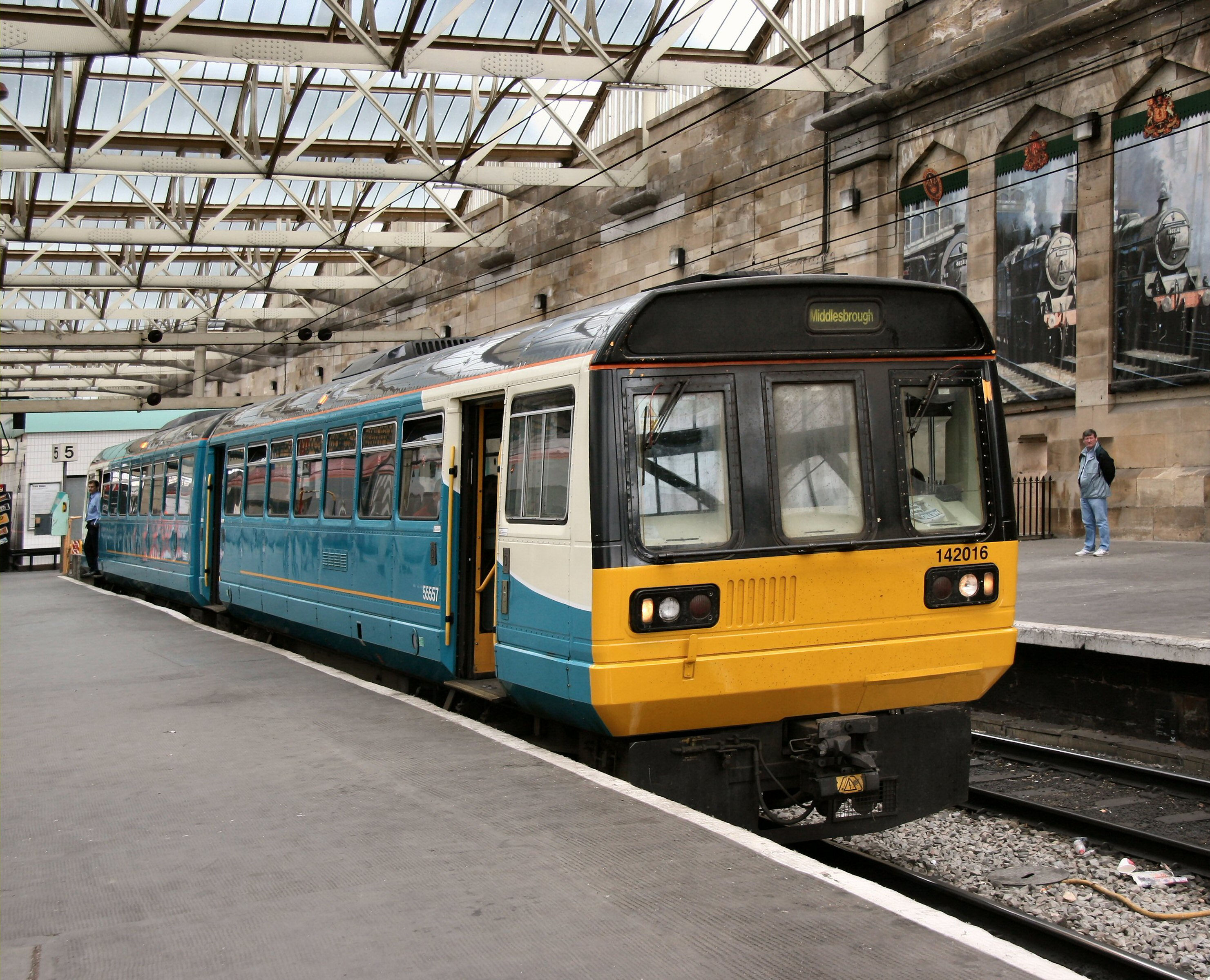
Another "Pacer" at Carlisle, about to cross the Settle Carlisle route. These trains are found mainly in the North - perhaps a tribute to the stoical character of Northerners.
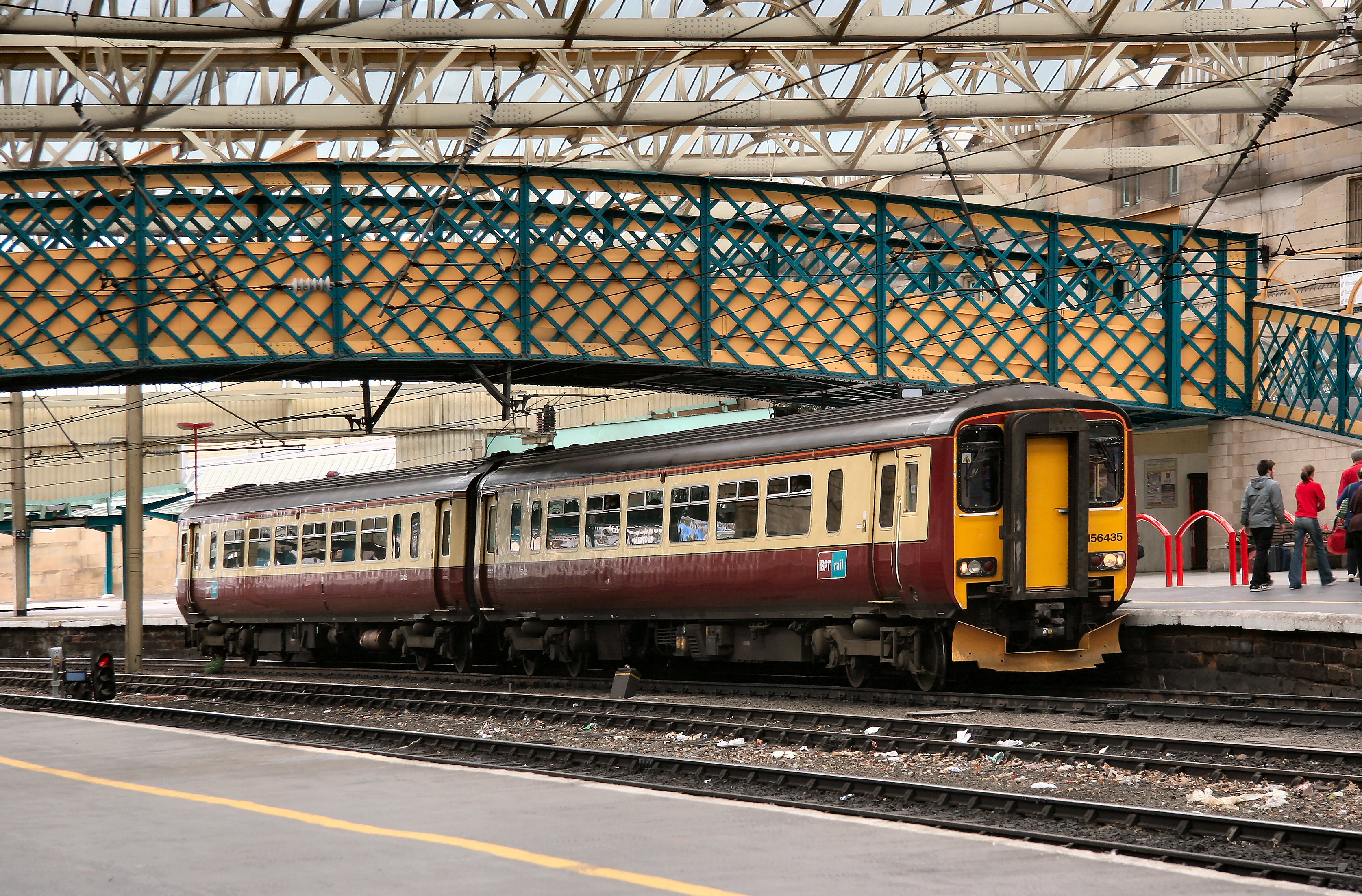
Also at Carlisle, this train has arrived from Whitehaven.
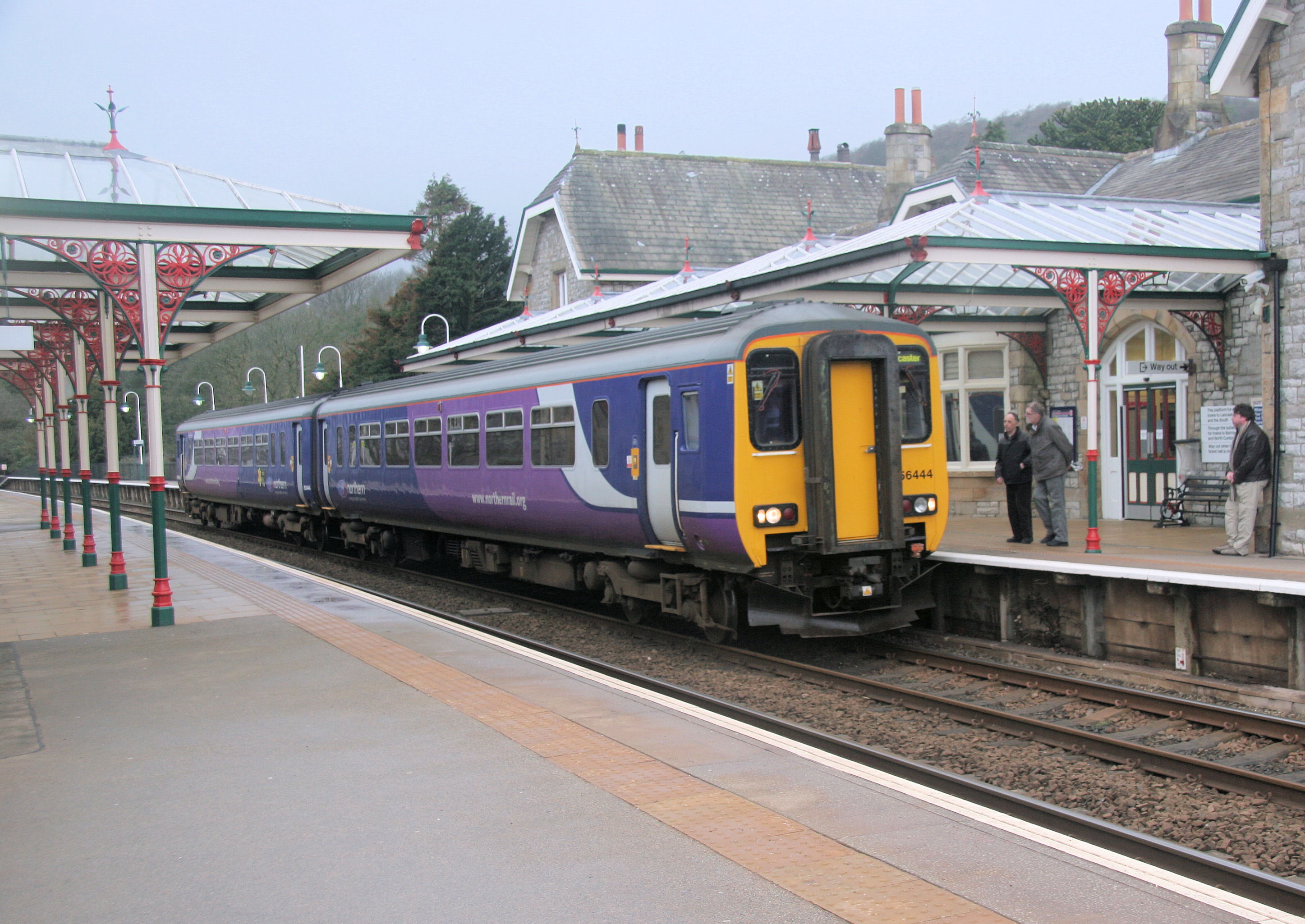
Further along the line around Cumbria, is Grange over Sands which has a lovely station. This is a service to Lancaster.
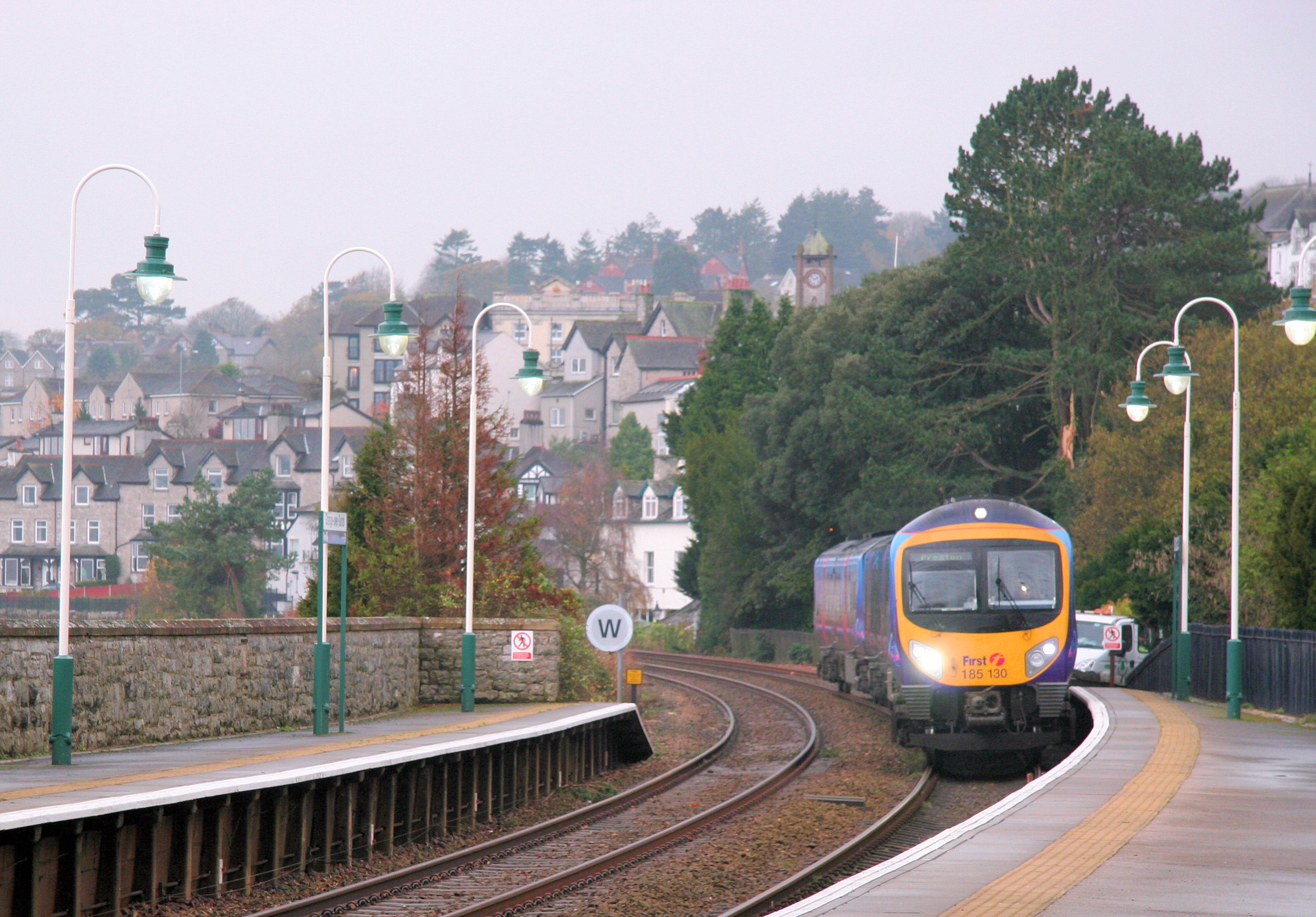
Approaching Grange over Sands...
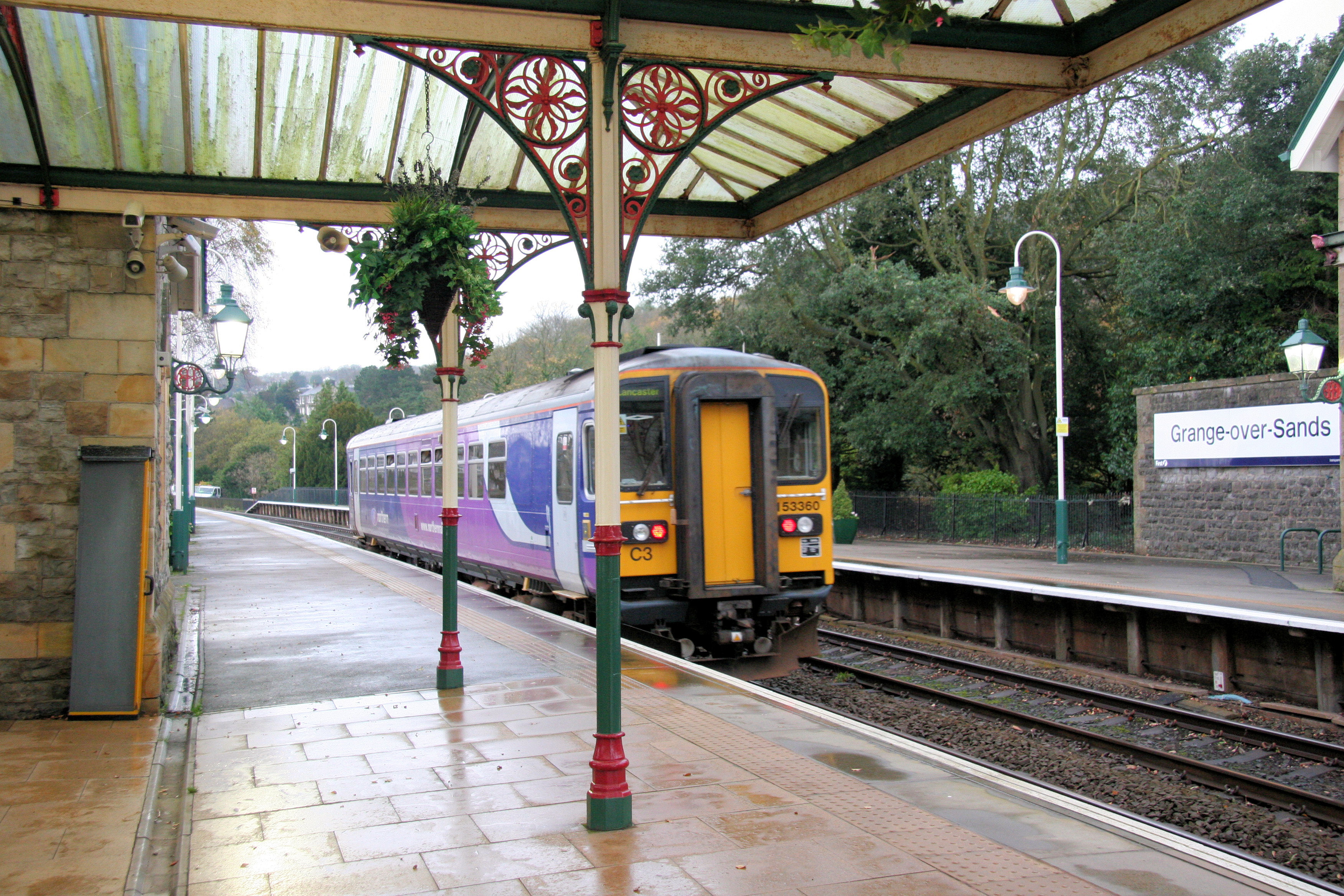
...and departing. This is a train from Workington
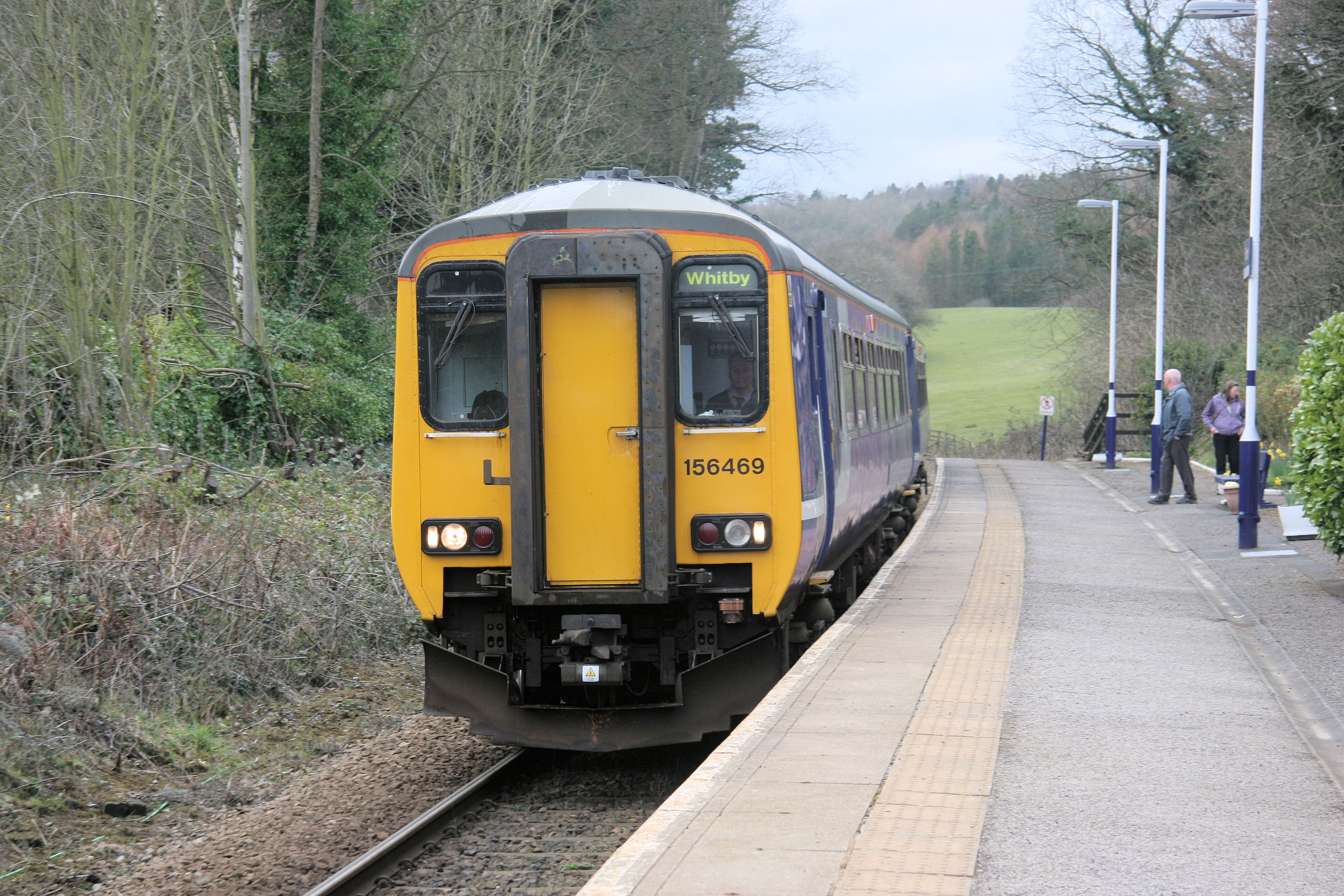
Whitby Station was once a very busy place. Trains of three or four red coaches, pulled by little tank engines would be coming and going every few minutes - to Redcar through Sandsend and Staithes, to Scarborough via Robin Hood's Bay, to Pickering, Malton and York (longer trains these, with proper engines and sometimes a through coach for London) . The fourth and only line still working today runs up the Esk Valley to Middlesborough, diverging from the old line to York at Grosmont.
The Esk Valley line was so nearly closed. It somehow escaped the Beeching axe and hung on by its fingernails for years and years. I remember reading once that it would be cheaper to pay for everyone who used it to go by taxi than paying to keep it open. But it is still here! And today seems to be doing a lot better. This is one of the numerous halts on the line at Castleton.
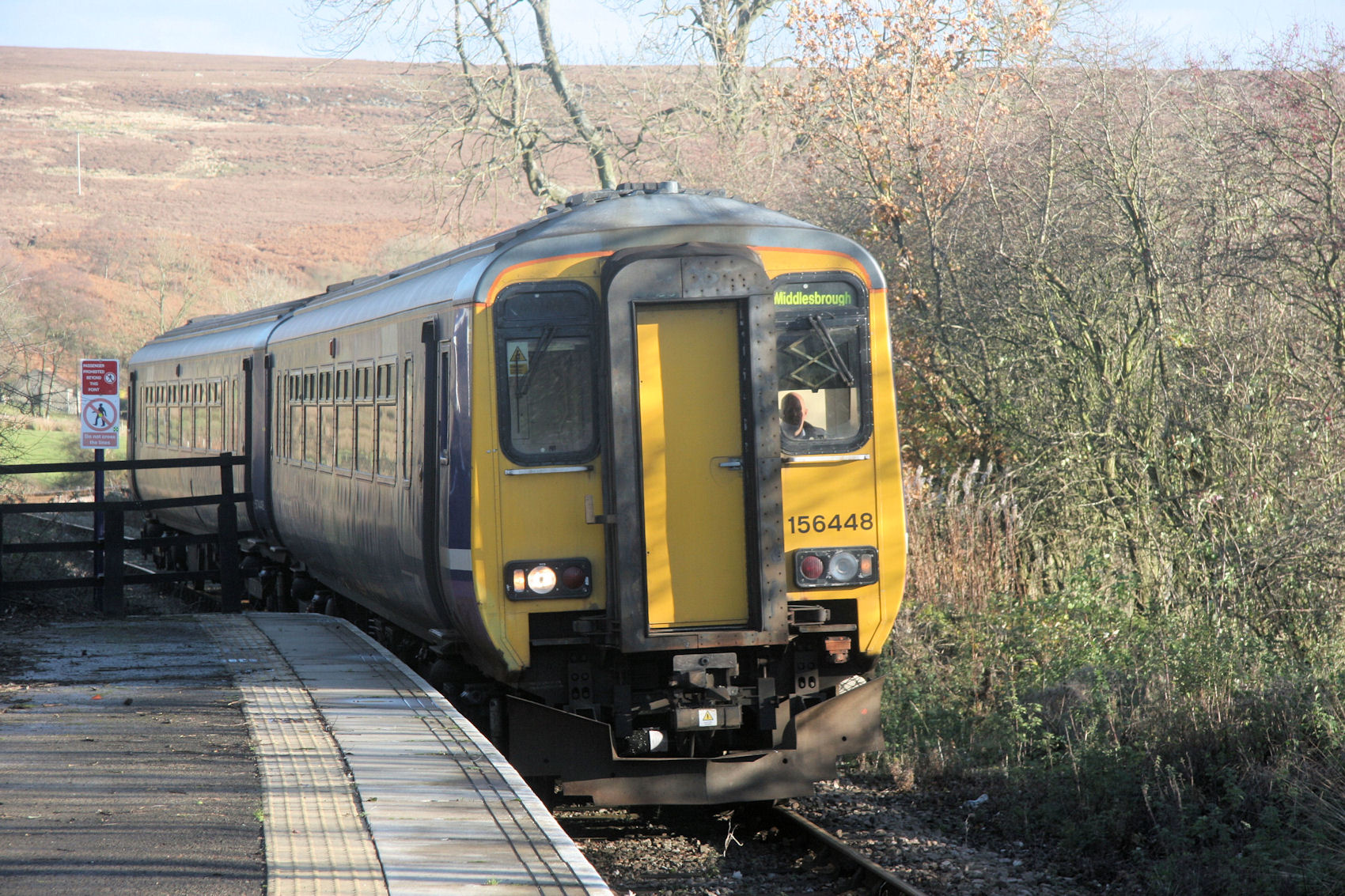
The Esk Valley line goes through a beautiful area. There are endless routes through which a walk out and the train back can provide a combination of exercise and nostalgia in glorious scenery.
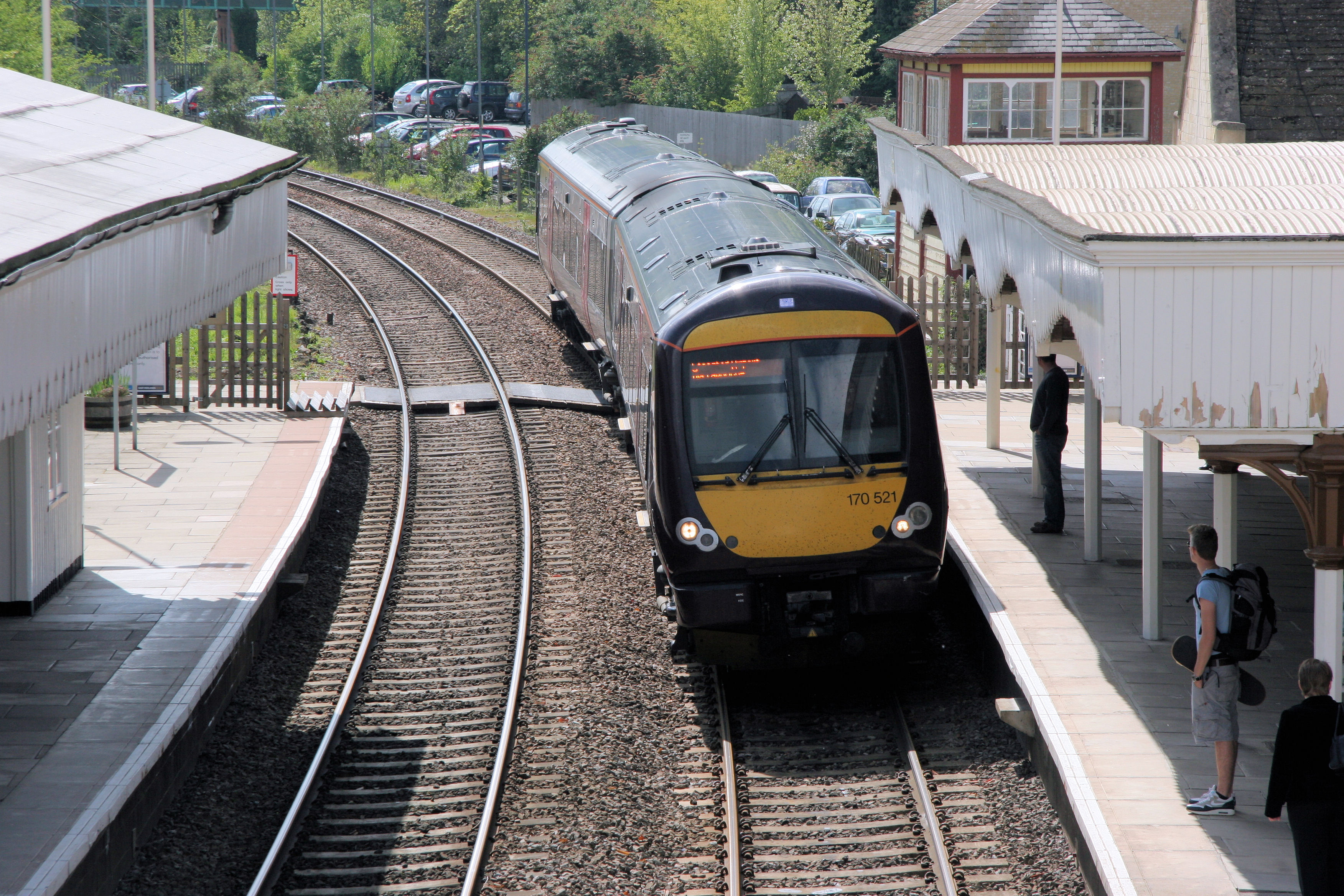
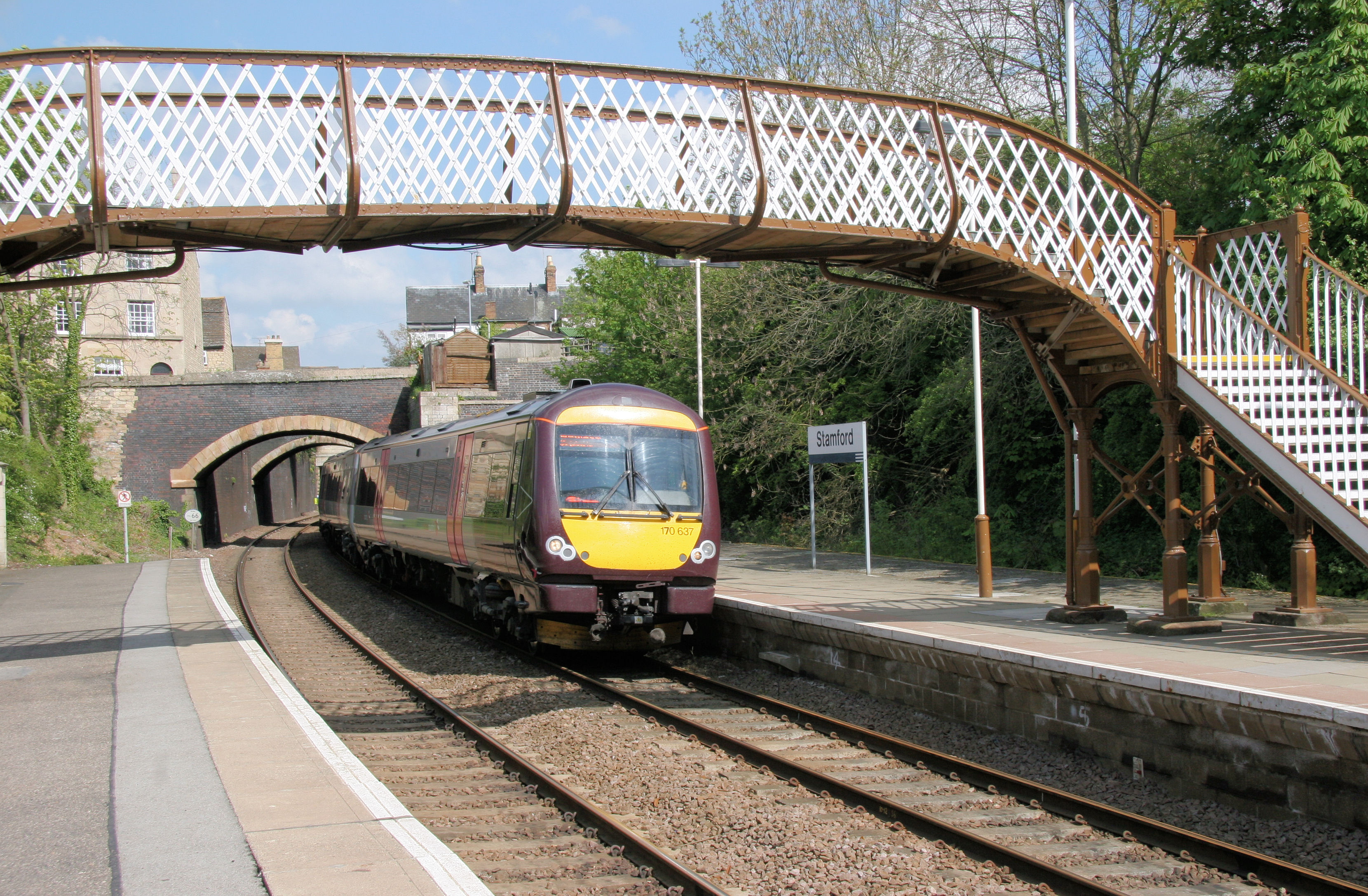
Two views of the attractive Stamford Station.
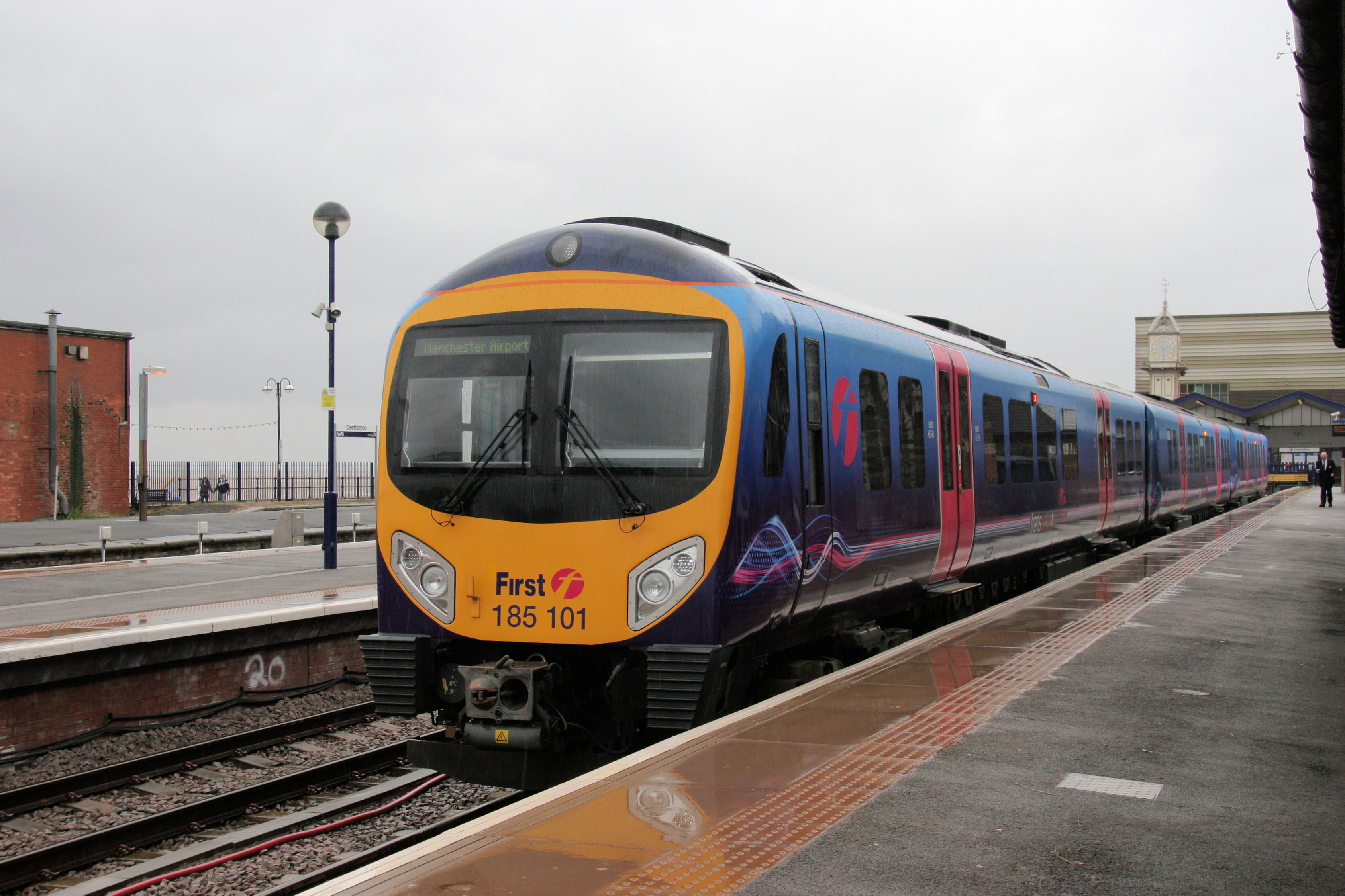
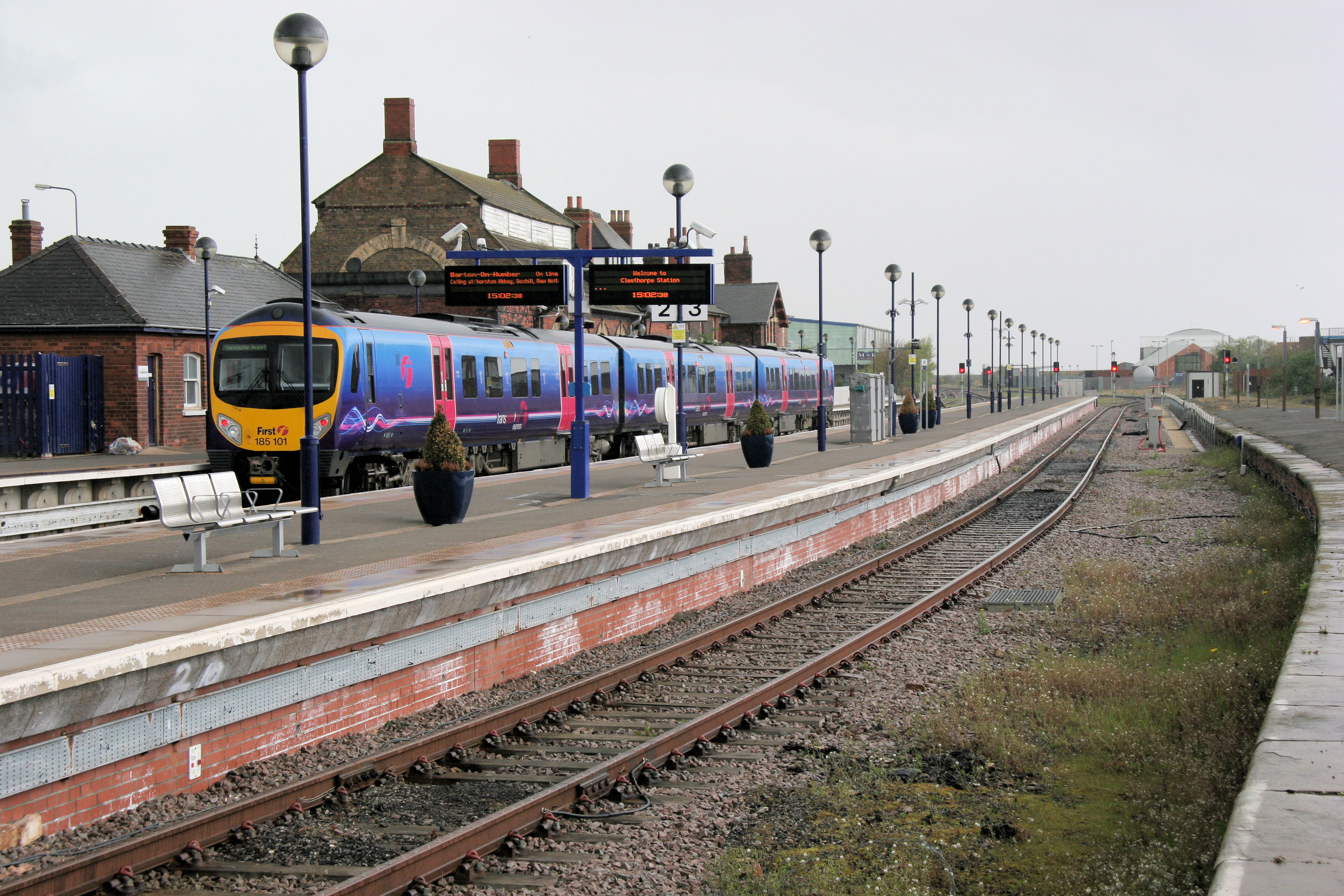
Two views of Cleethorpes station. There was a time, on a summer Saturday when this station with its six long platforms would be full of "specials" with B1s steaming in front and other trains, until the evening return time, waiting in the extensive sidings beyond. The beachfront would be packed with day trippers from Doncaster, Sheffield, Leeds., Nottingham, Lincoln and the rest of region.
Today the station reflects the state of the town, of which the best that can be said is that it has seen better days.
One of the lines out of Cleethorpes continues to Doncaster through Scunthorpe. Much has changed around Scunthorpe as the steel industry has shrunk - notice the tree growing in the once extensive marshalling yard. The station, however, is a little time capsule with every detail as it was when it opened in 1928, having moved from an earlier site half a mile to the east.
A Scunthorpe to Sheffield stopping train.
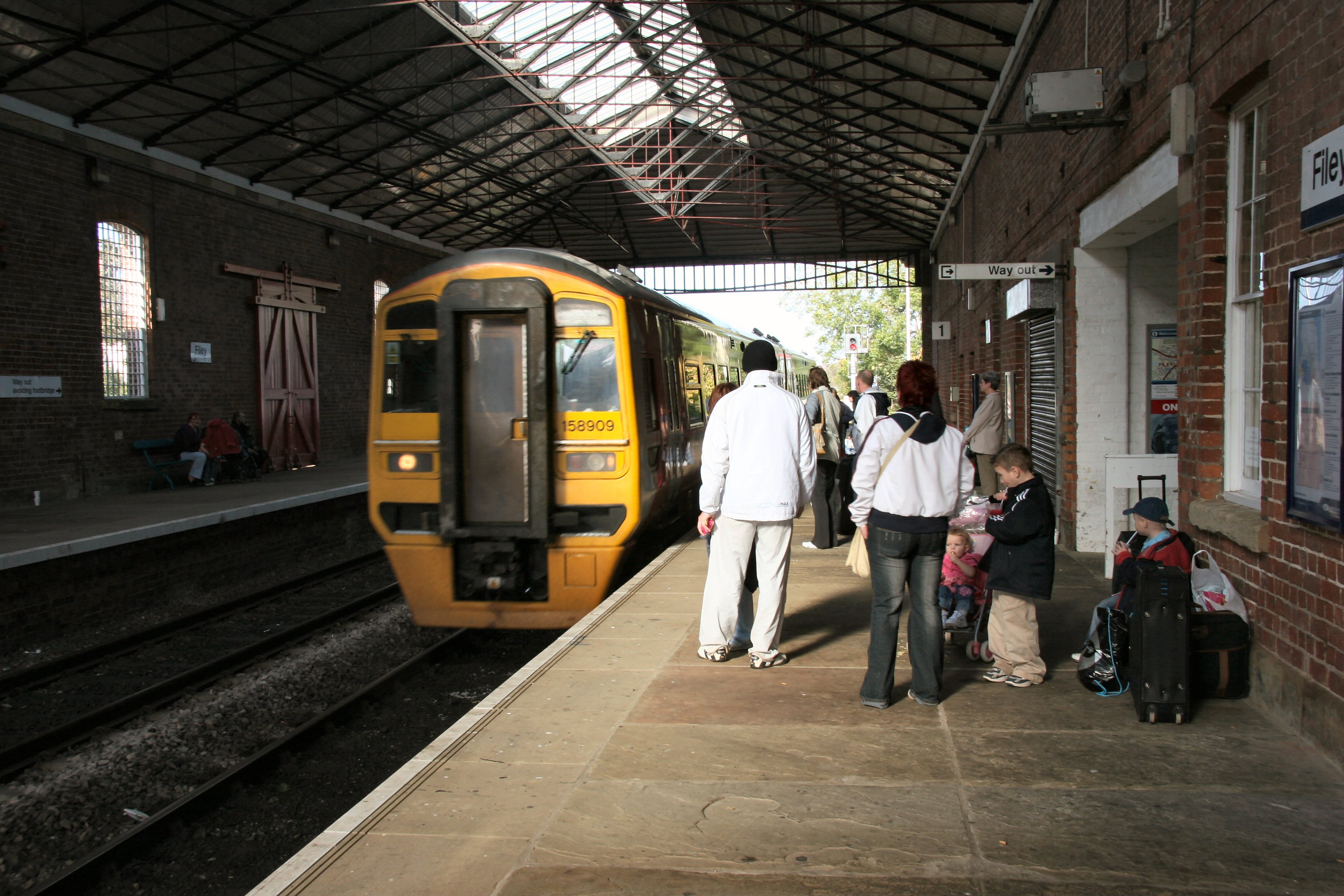
I am not sure if this young family, with their suitcase, are returning from a holiday in Filey. I would like to think that it still happens. In the 1950s my family did exactly that many times, though back then the platform would have been quite crowded and a long steam hauled train would have been arriving to pick us up. This station is still exactly as it was.
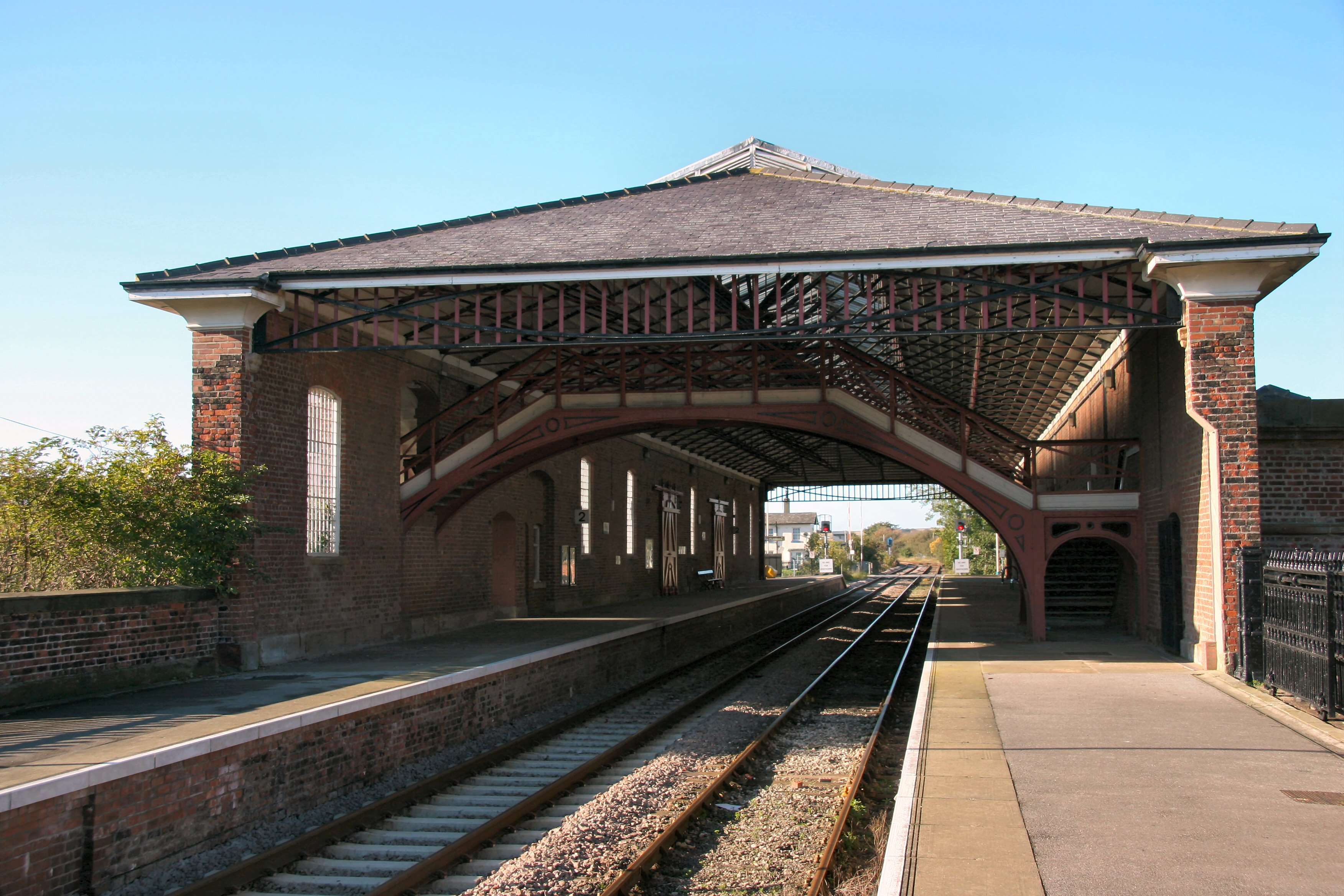
A view of the station looking north. Waiting on the platform for the train from Scarborough to arrive, one knew it was imminent when the level crossing gates closed - in those days the big white five barred gates rather than the descending barrier of today.
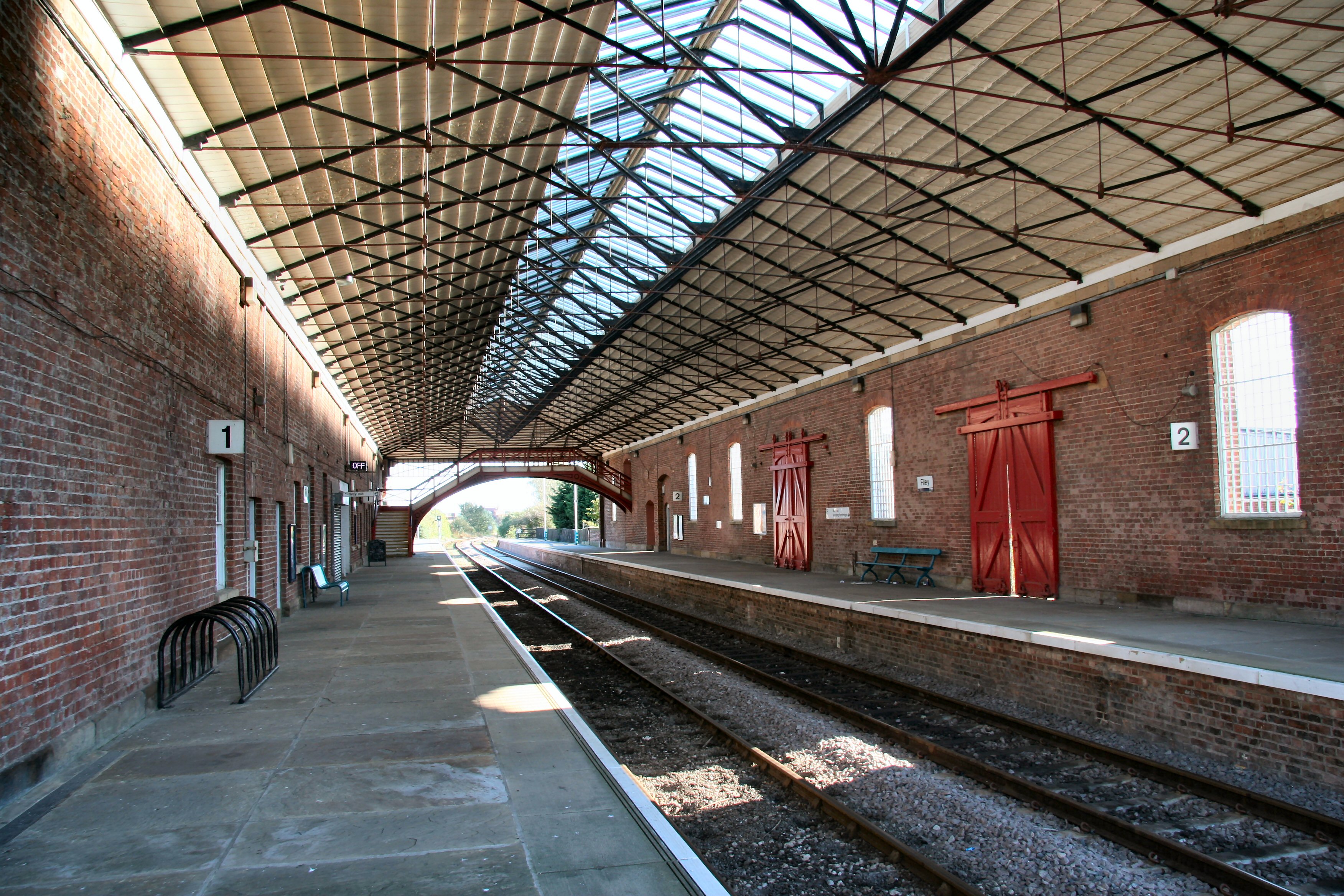
Filey station looking south. Very few small stations have retained their roof and even though it is now an unmanned, clearly some care and maintenance is being carried out.
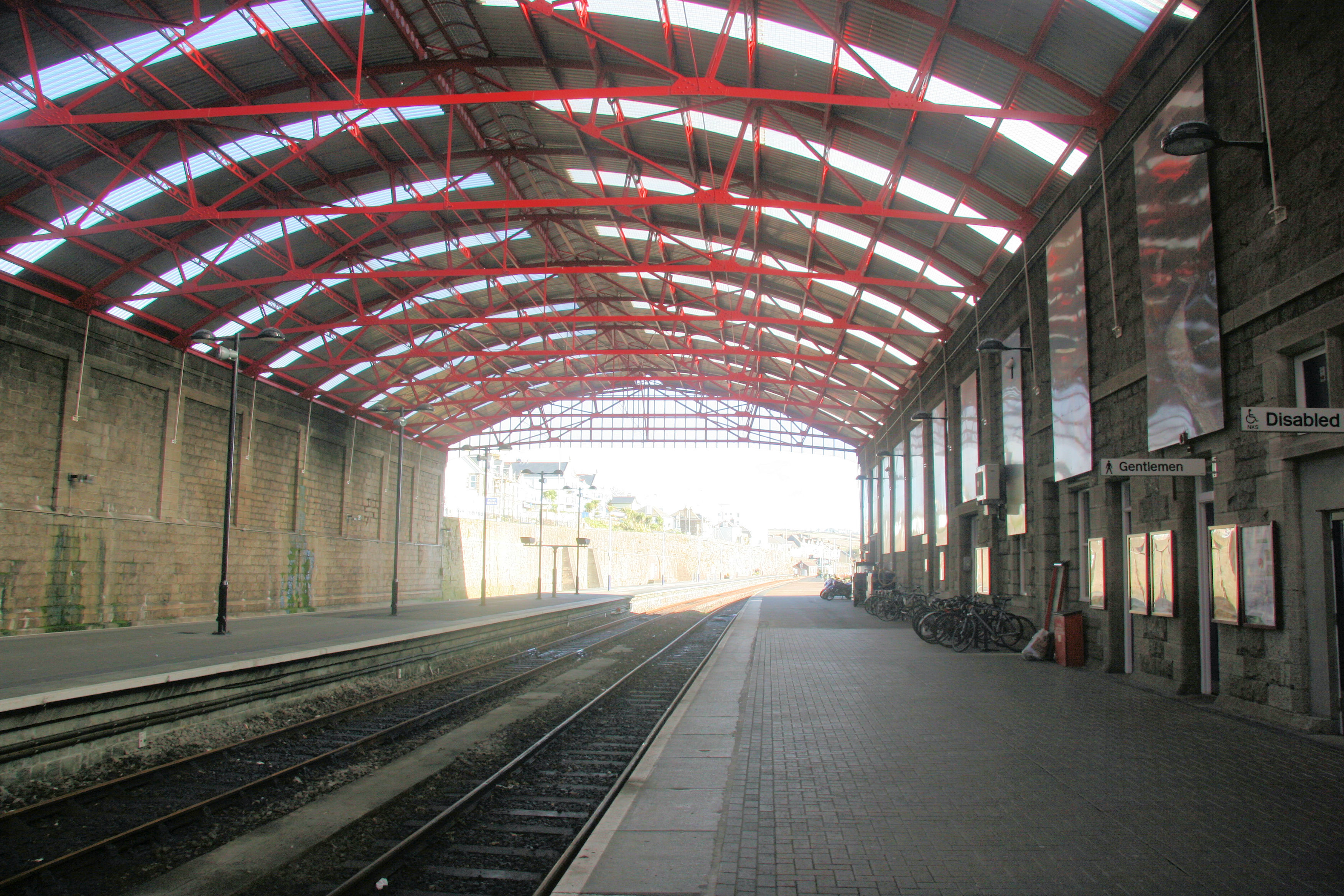
The only comparable train shed I can think of is at Penzance.
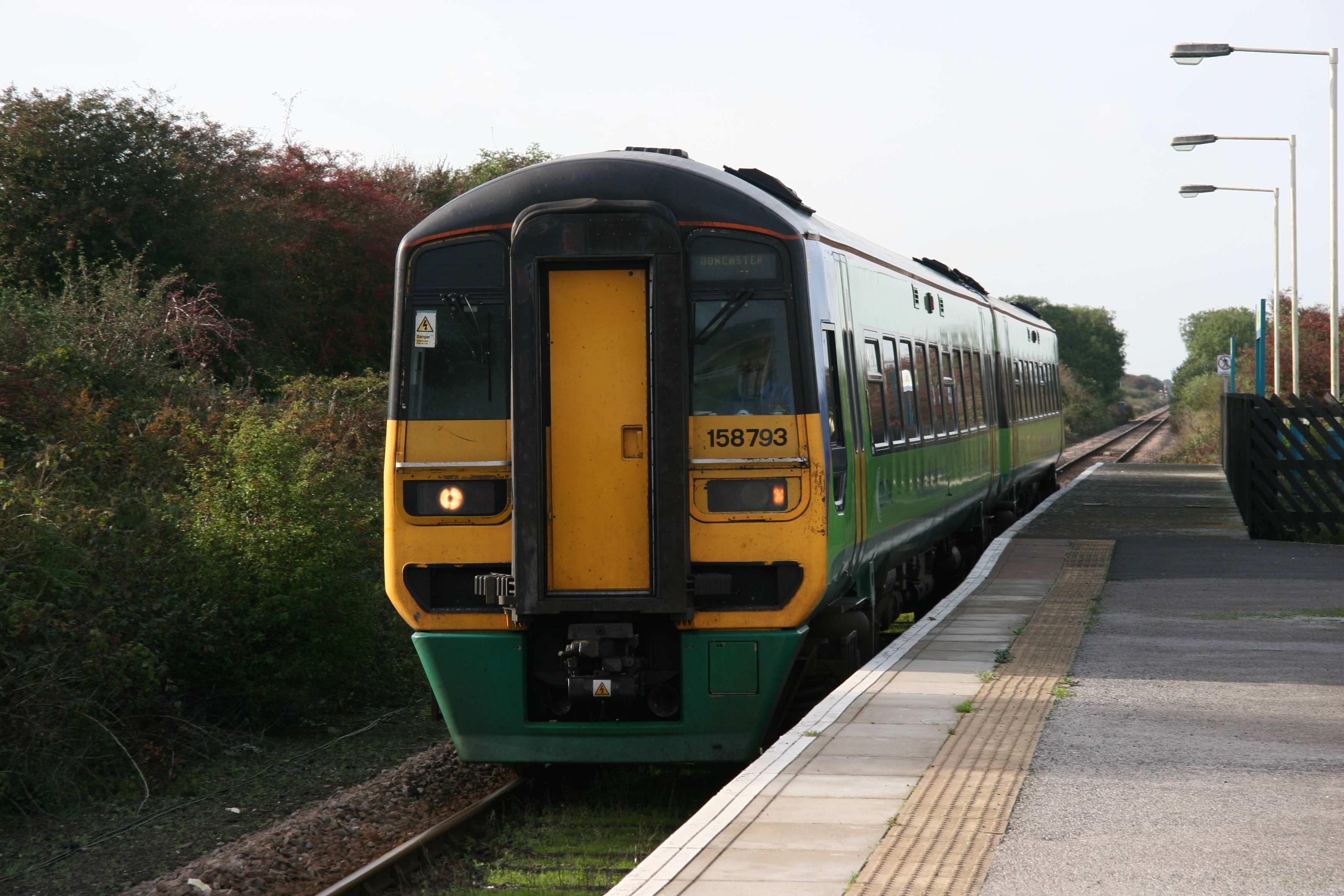
The line through Filey was once all double track, but this is now gone. Stations have become unmanned halts...
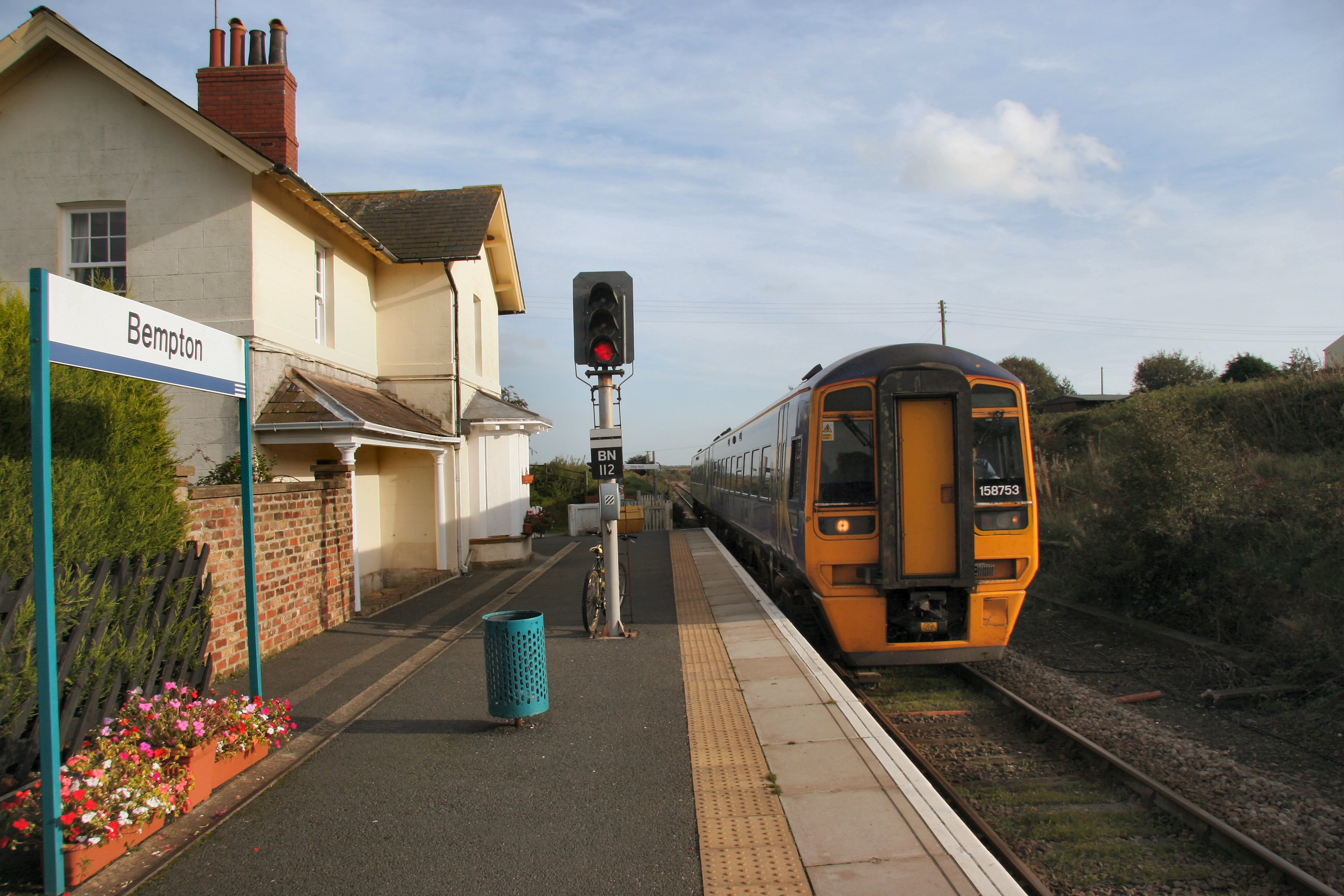
...and the station buildings have become private dwellings.
I have an anecdote about Bempton station. We had walked along the cliffs from Filey and caught the train back. As we were pulling out of Bempton the guard pointed out that I had left my walking stick on the platform. "Don't worry, " he said, "if it is still there when I come back I will pick it up and leave it at the booking office in Bridlington." And that is exactly what he did.
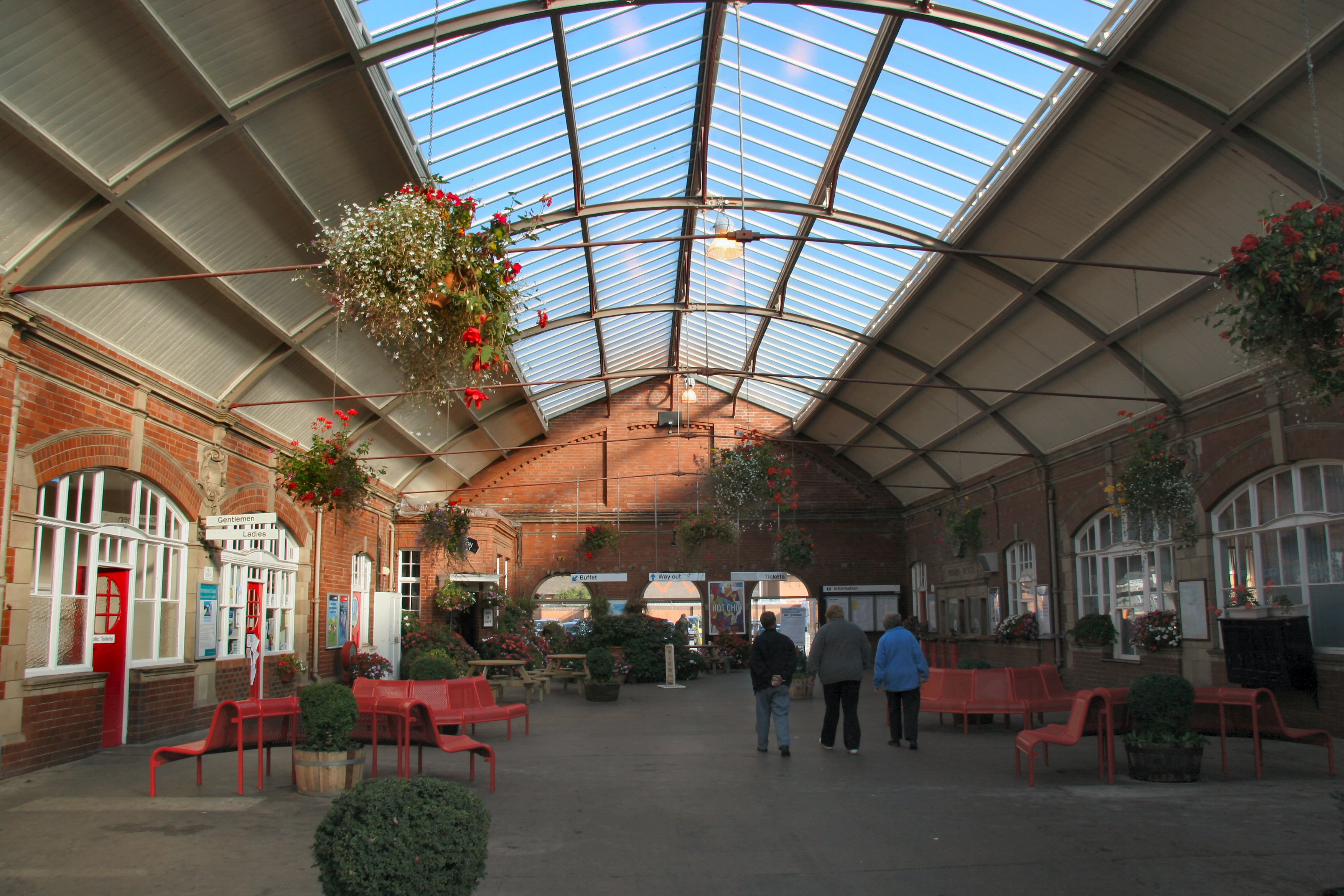
This of course meant a trip to Bridlington where there is another absolute gem of a station. This splendid large concourse reflects the busier times when the sort of people who came to Bridlington in their droves, did not own cars. It is good that it has been so beautifully maintained despite being far bigger than present use could justify.
There is also a very nice little pub in the left hand corner!
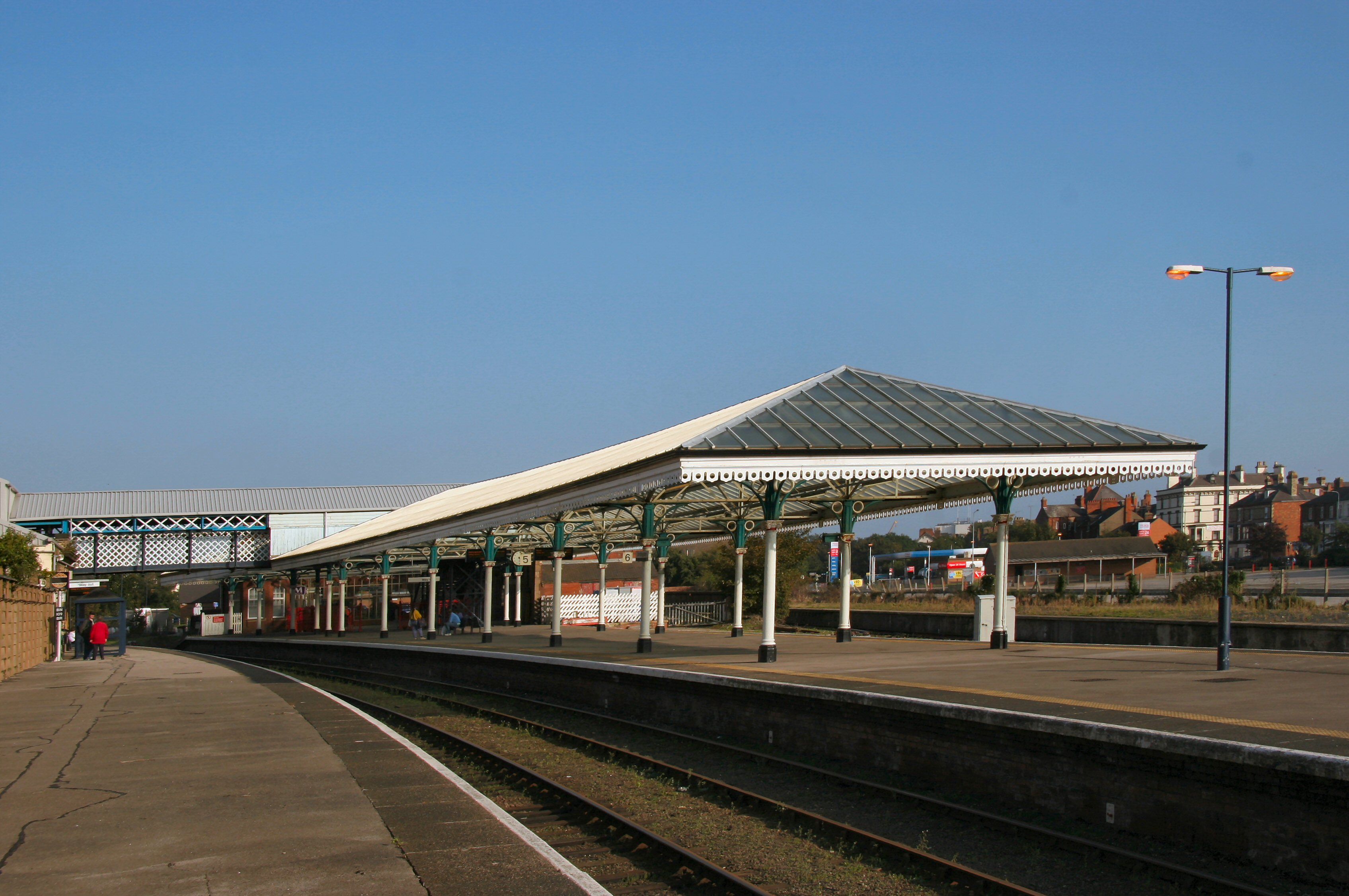
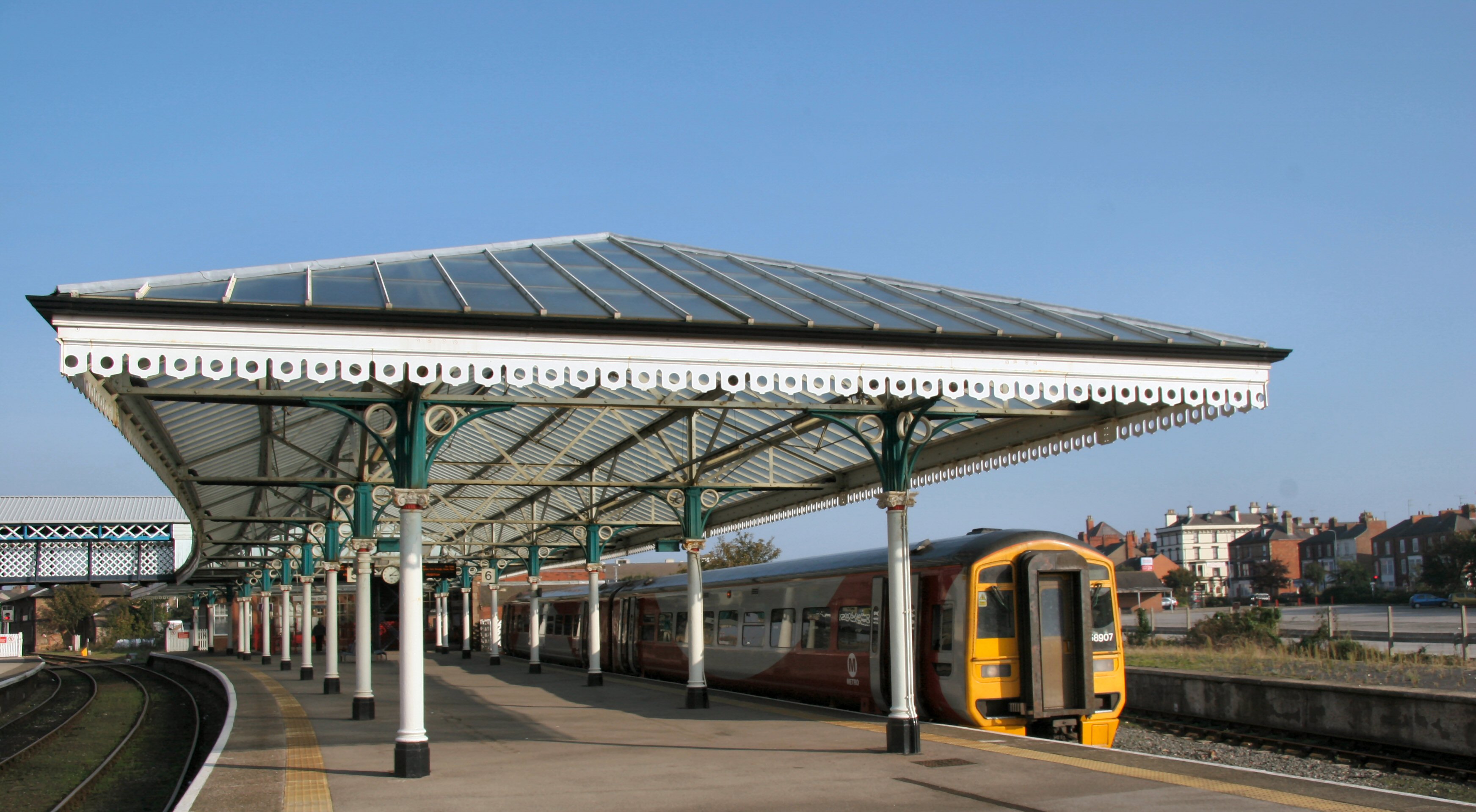
The rest of the station is equally attractive.
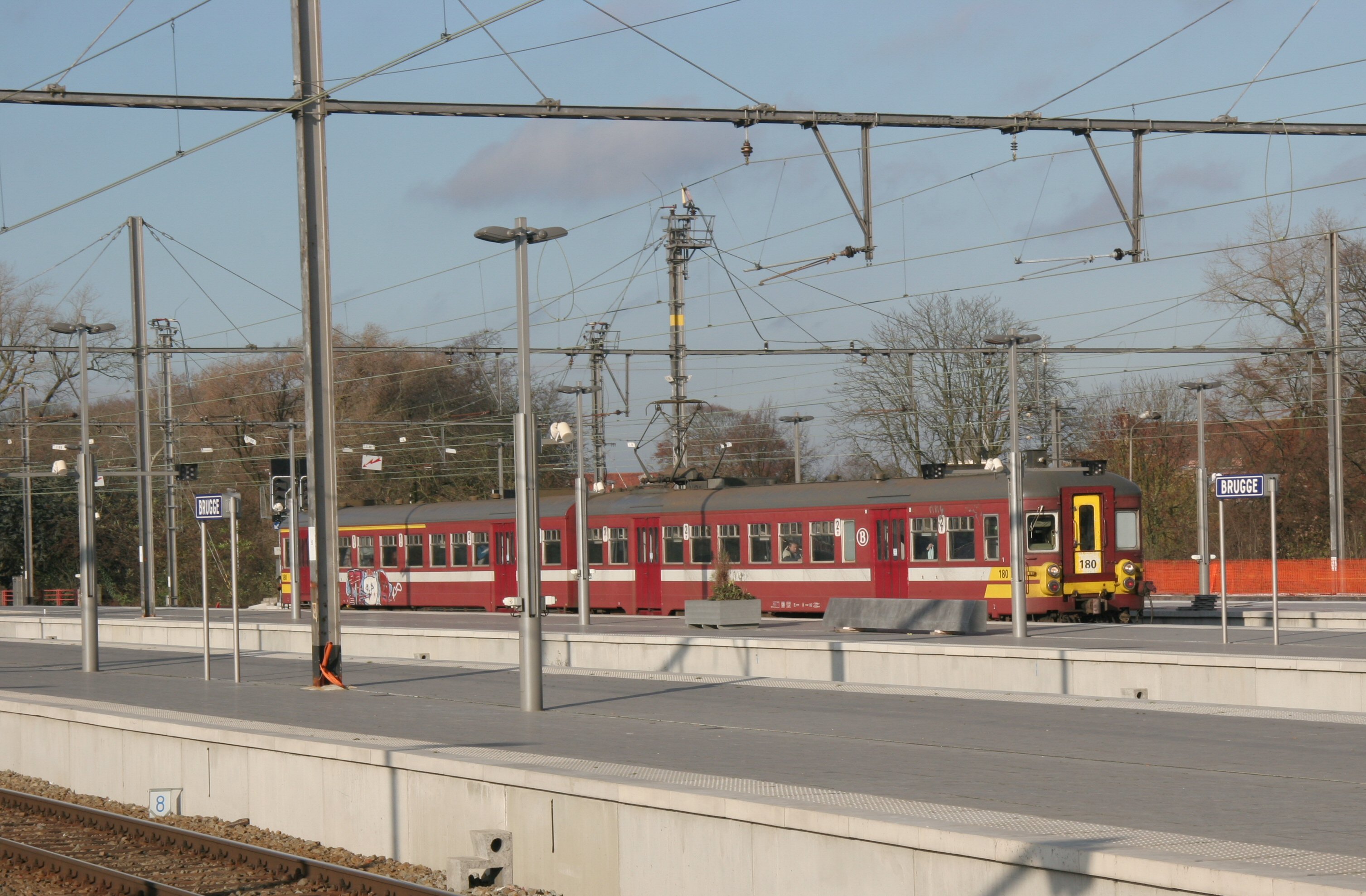
A look at the slow trains abroad, not always in small stations.
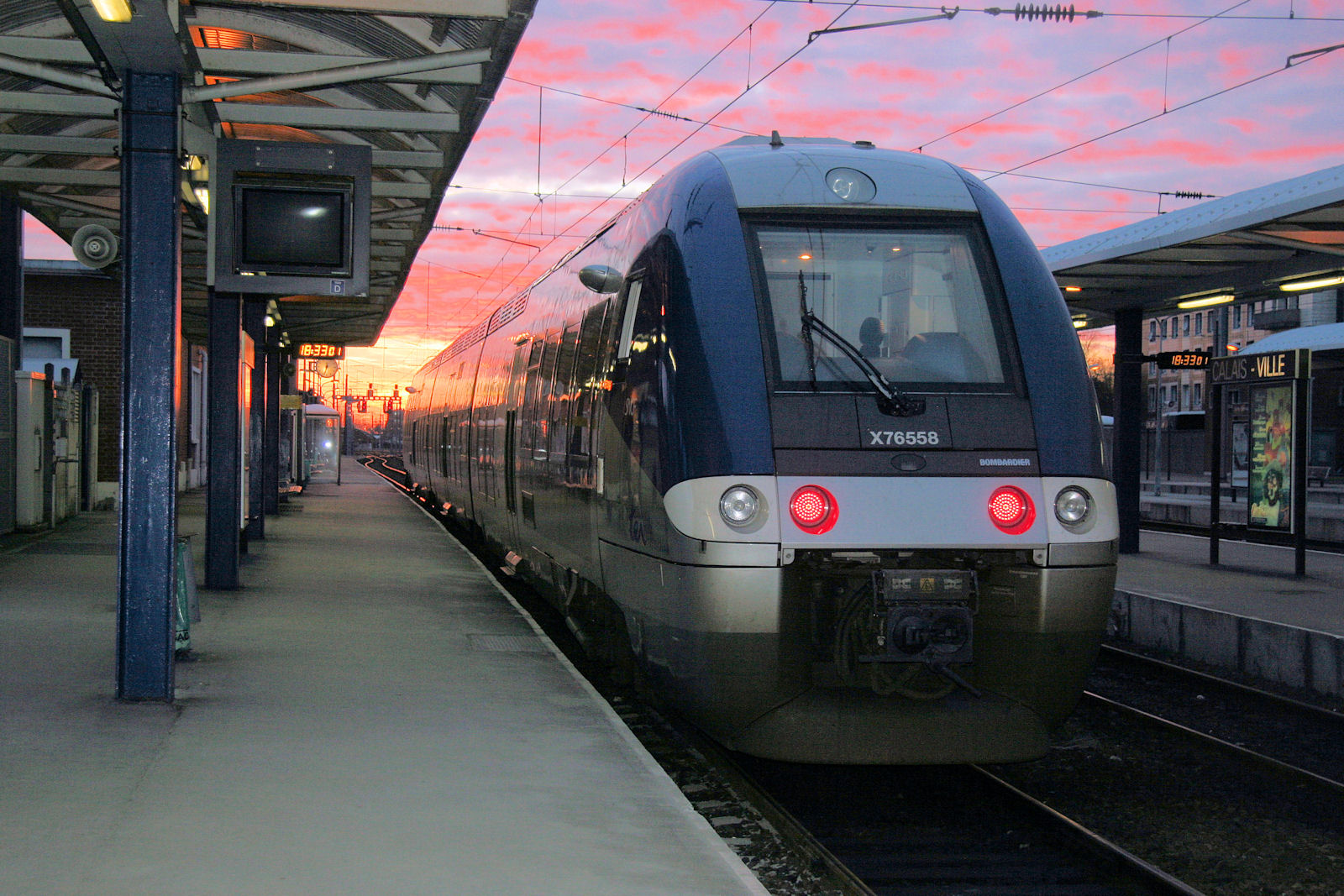
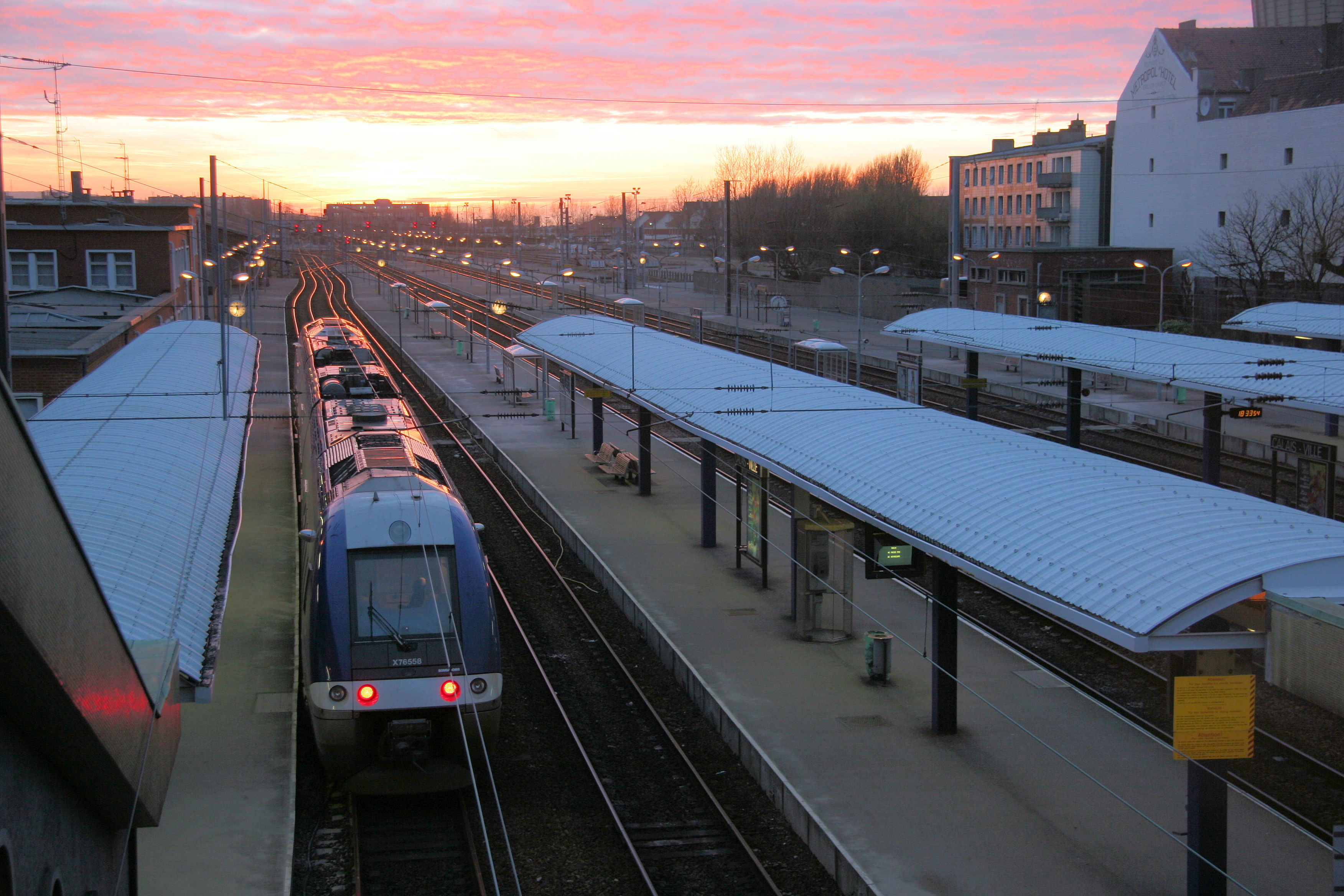
Two views of Calais Ville.
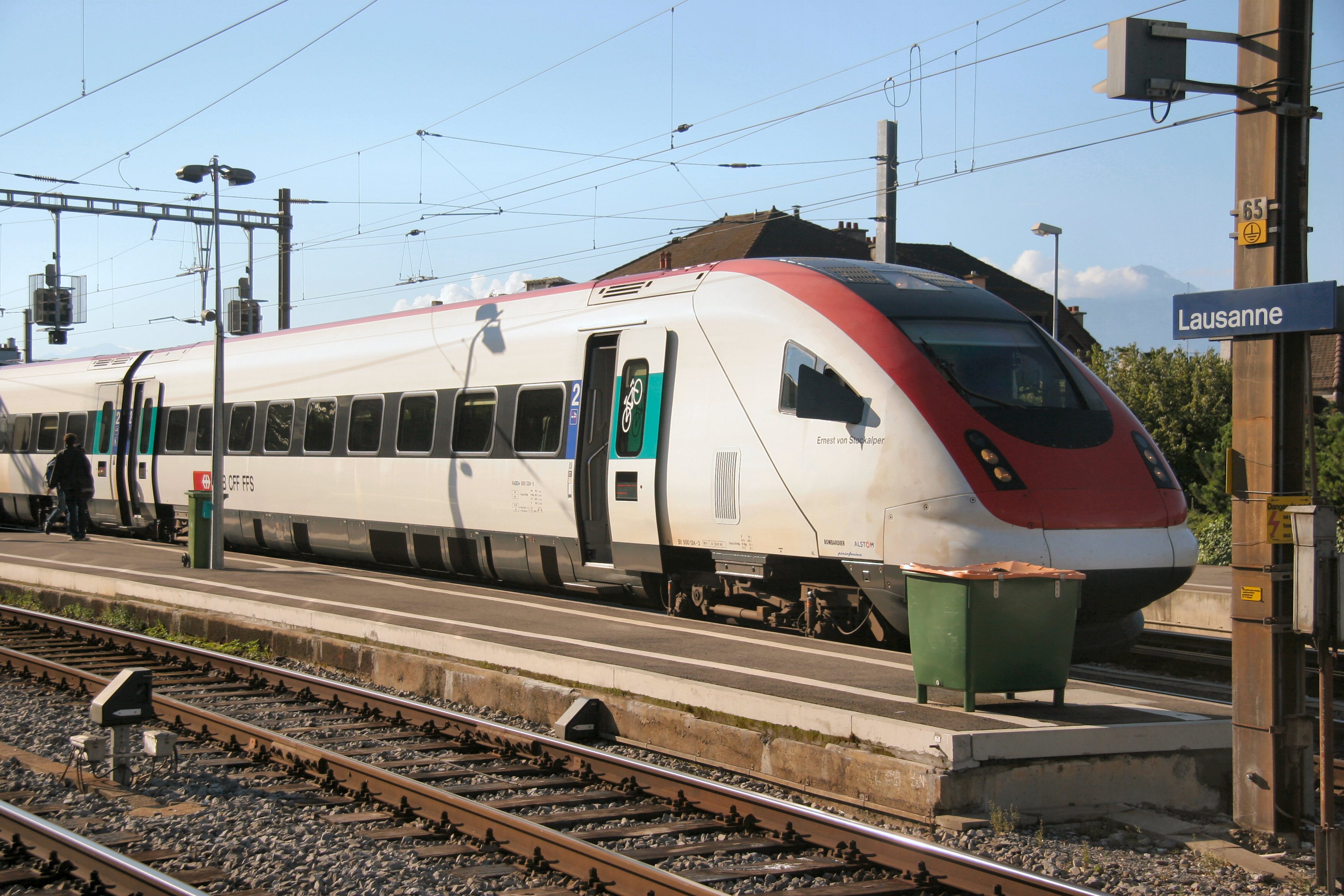
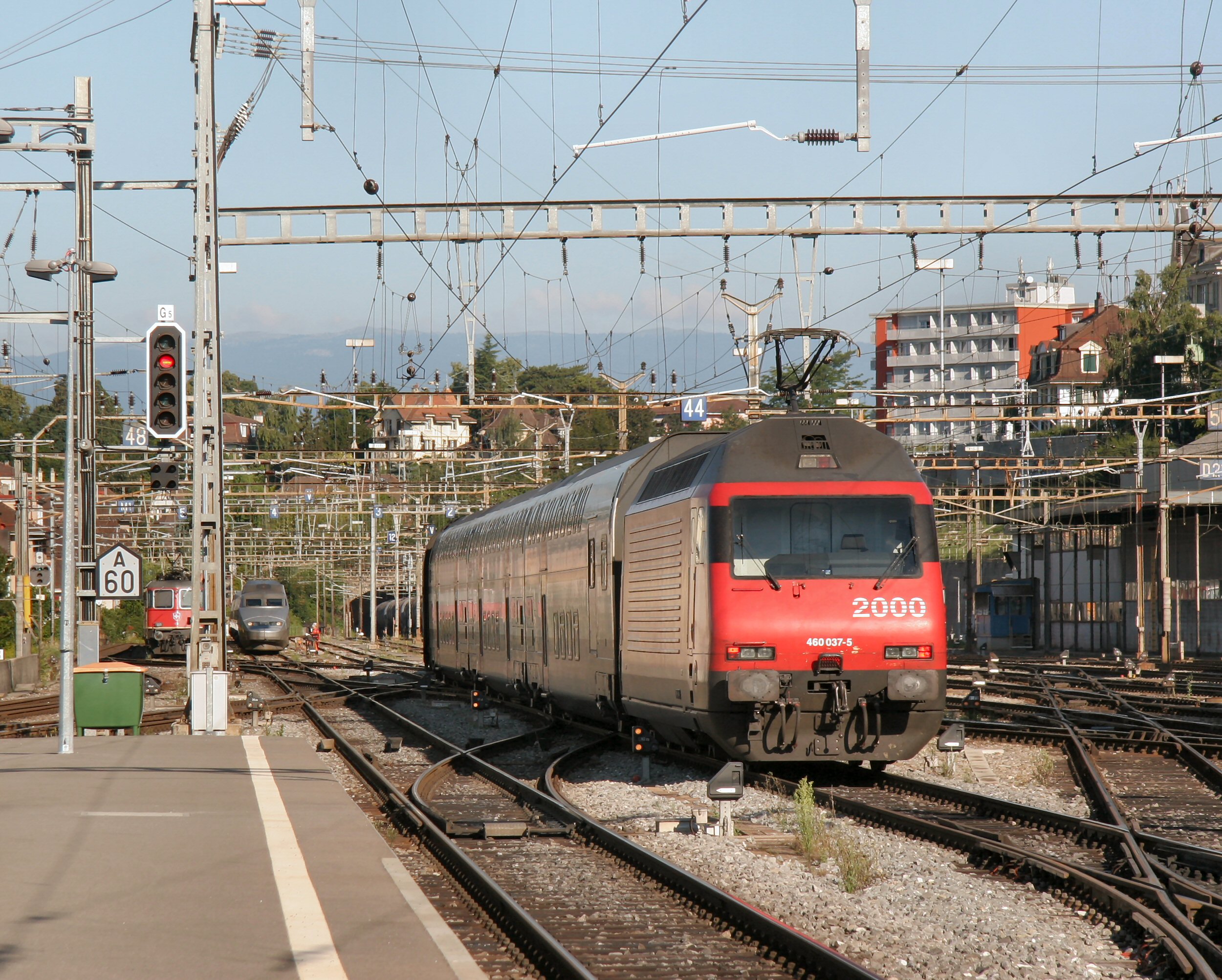
Two Swiss local trains, the second in Geneva.
Today modern railway stock is becoming more standardised, being built by global companies to supply the world's railways. Slow trains so far have tended to maintain their local individuality. Compared with Britain the continental slow trains seem much sleeker: if they were cars they would be BMWs, while ours are Austin Allegros.
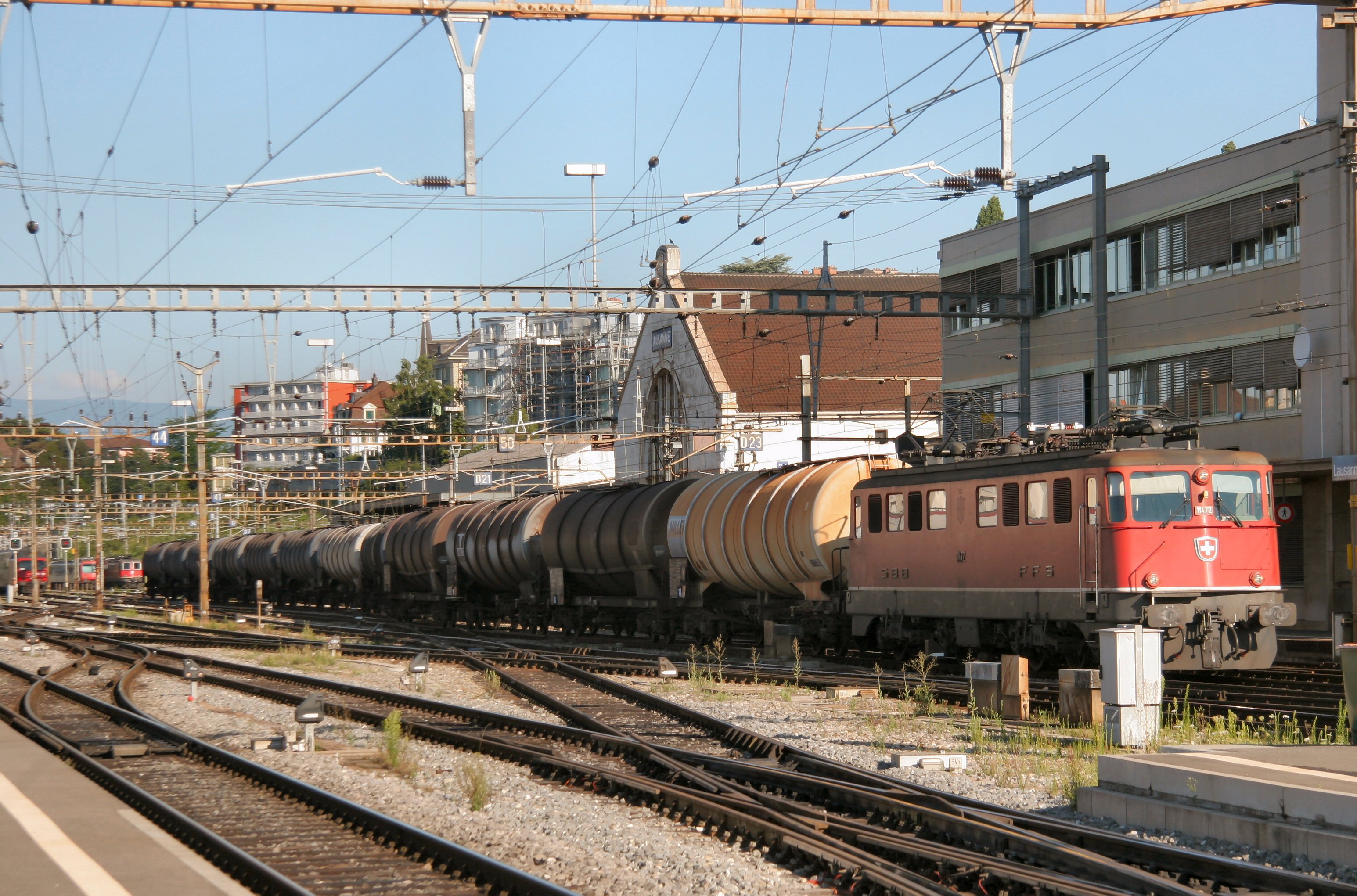
To be fair, I did once see a scruffy Swiss train...
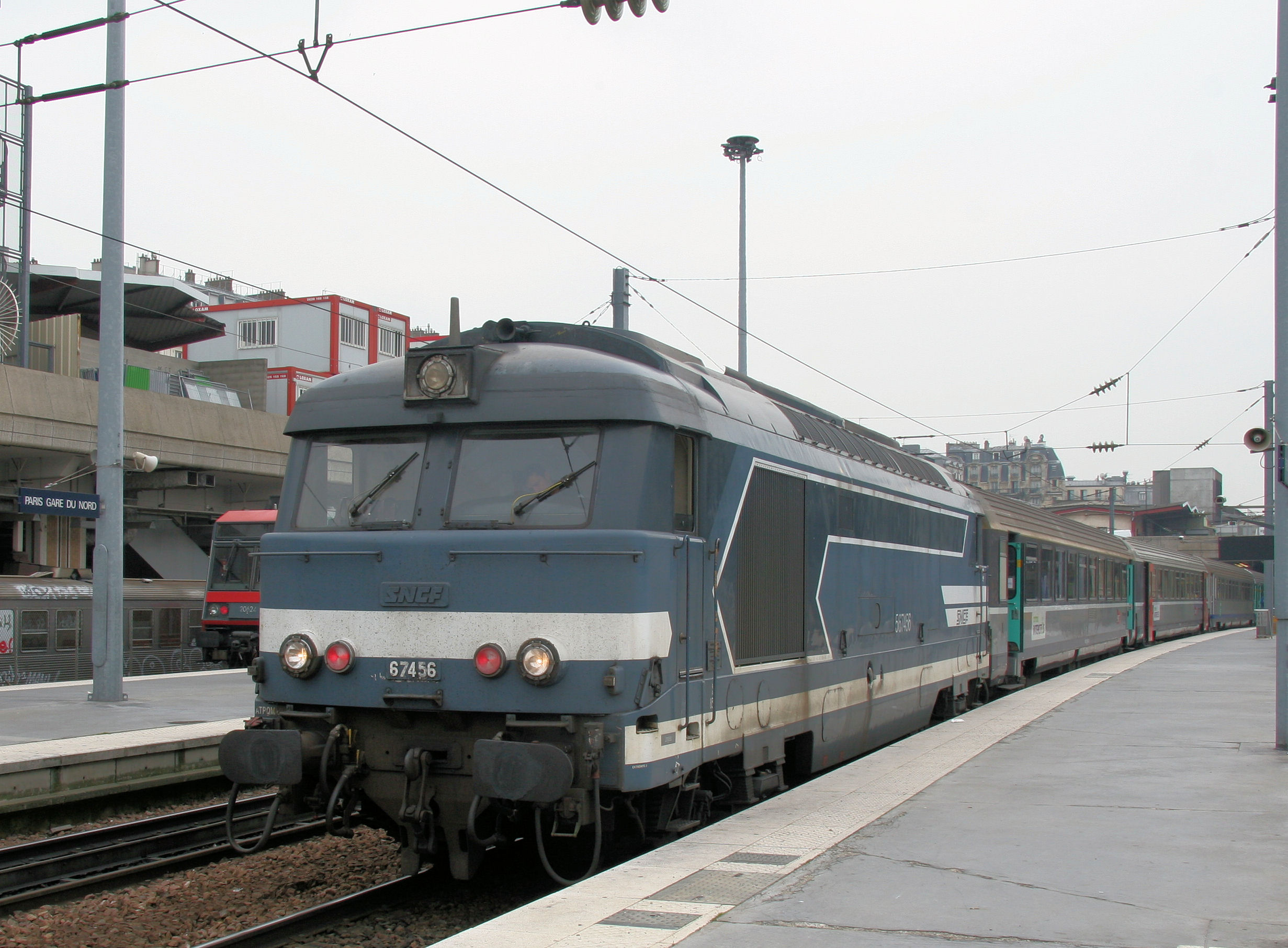
French slow train from Soissons: no need to cram everyone into two coaches here.
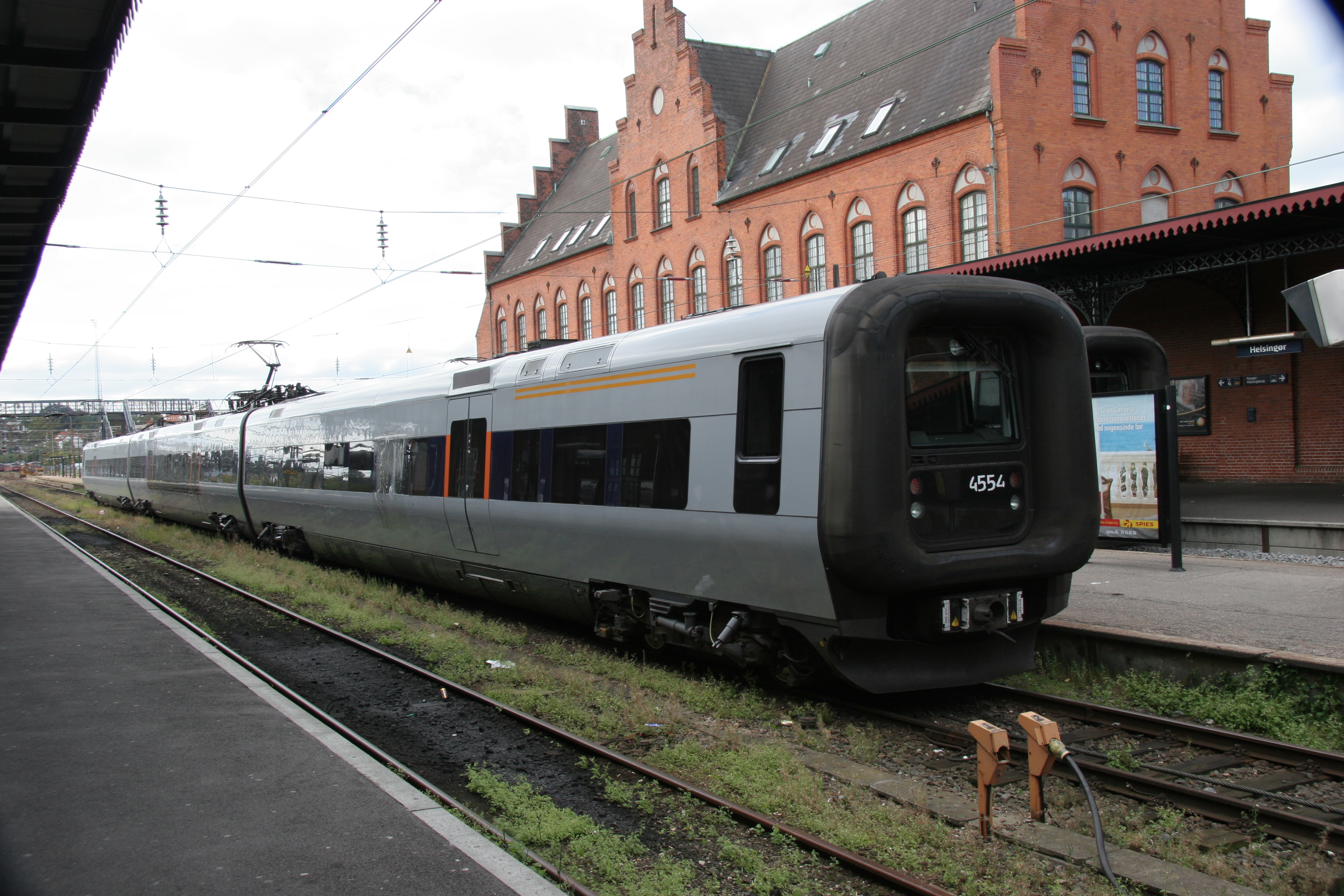
Copenhagen to Helsingor train. One advantage of continental railways compared to a large part of our southern network is that they have an overhead power source and are not trapped in a "third rail" technology - perhaps the VHS of railways...
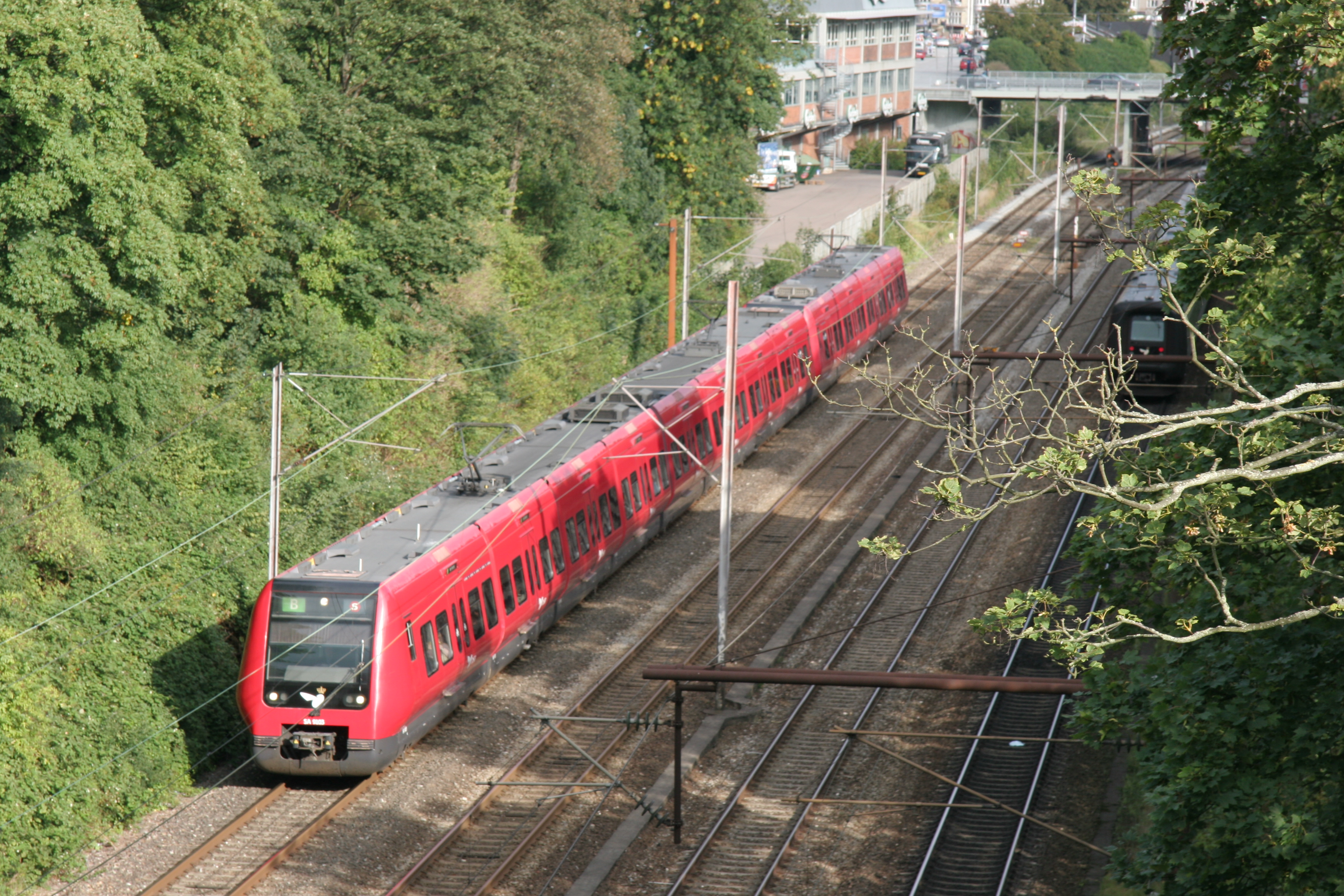
Commuter trains near Copenhagen.
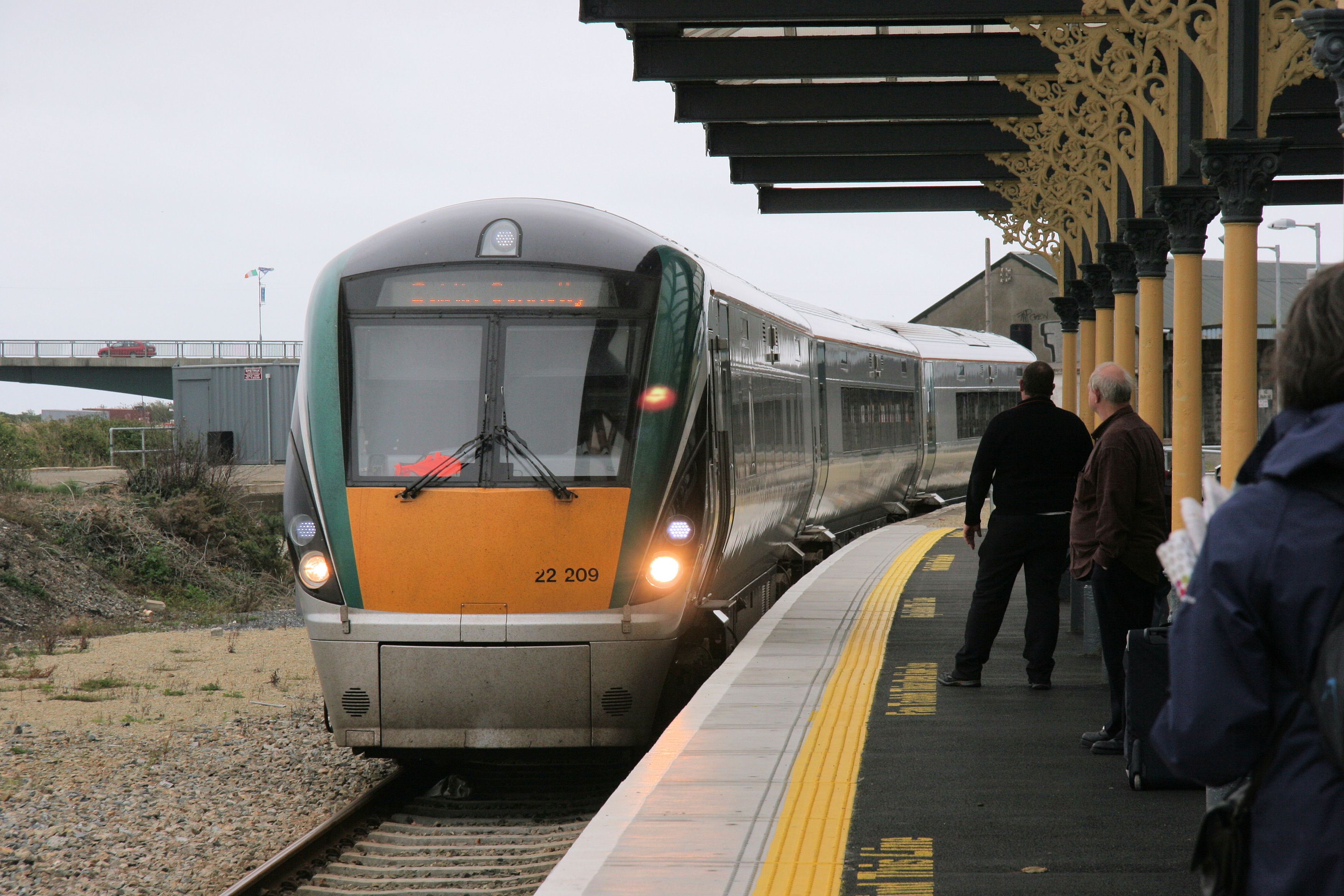
Rosslare to Dublin train arriving at Wexford's attractive station.
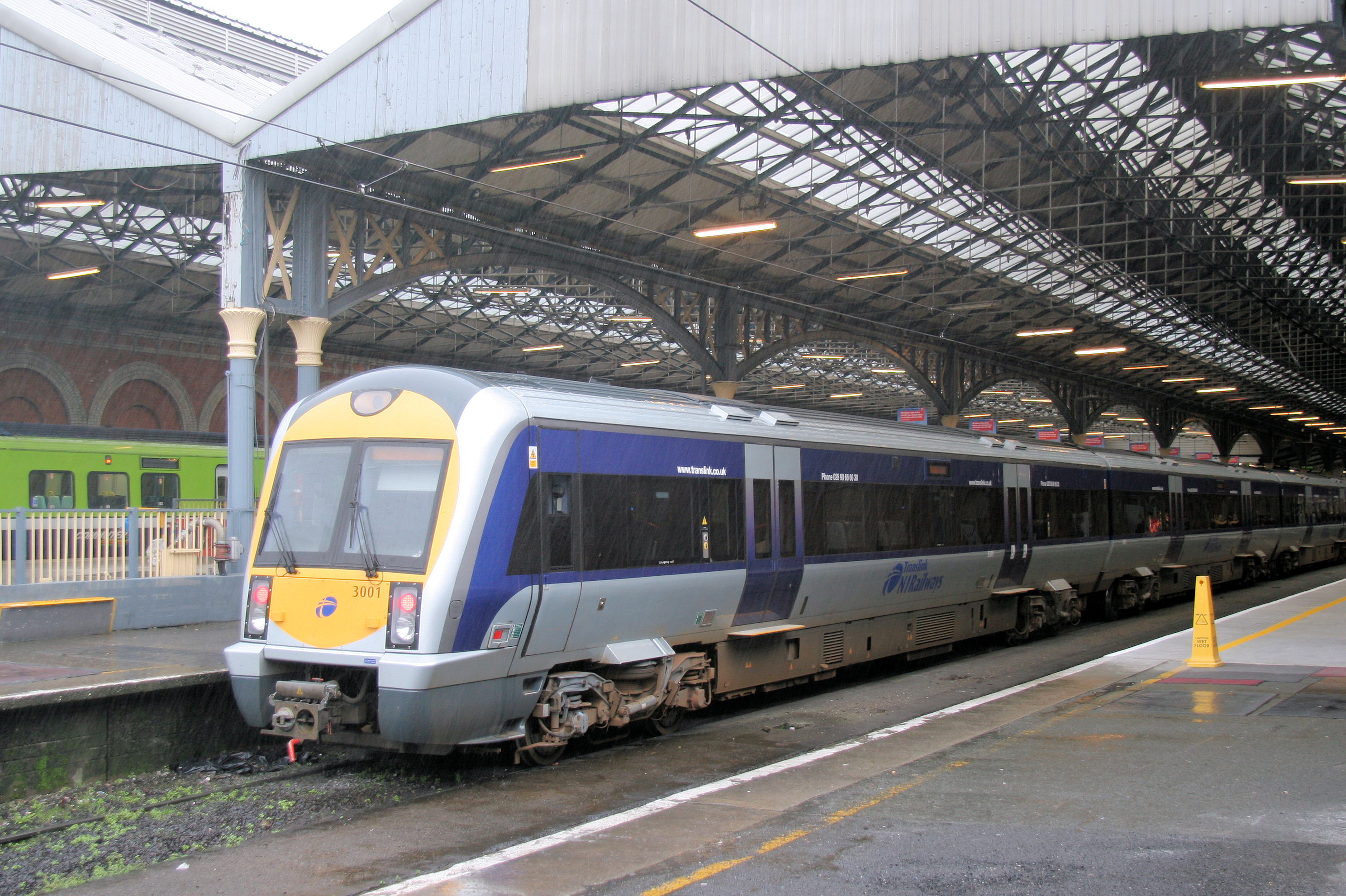
A train for Belfast waits at Dublin Connolly.
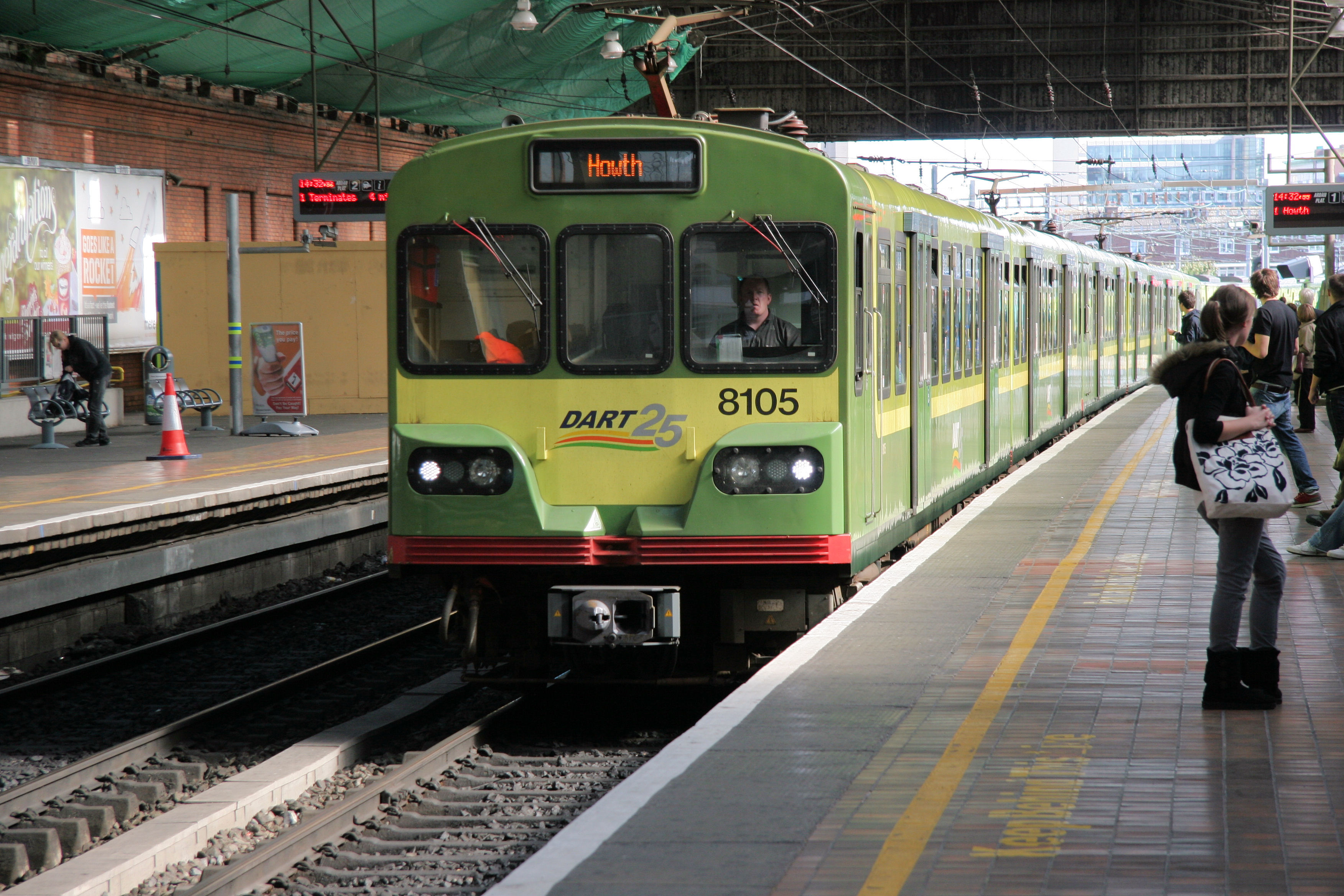
A train on Dublin's suburban network.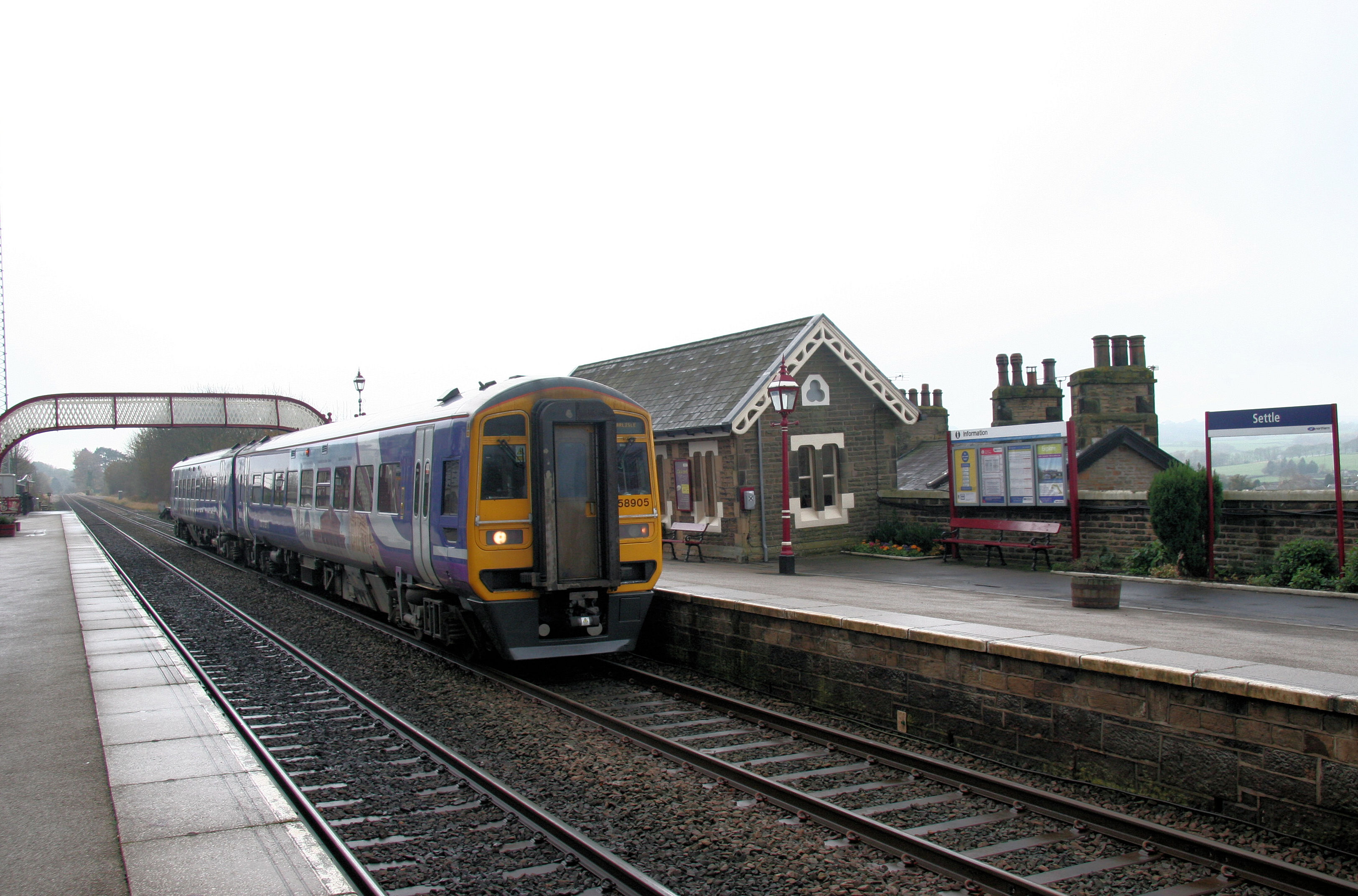
The continuing existence of the Settle and Carlisle line is a triumphant example of public resistance railway management skulduggery. They were determined to close it. To this end they closed stations, installed an inconvenient timetable, overestimated repairs to the Ribblehead viaduct and generally allowed the line to decay. In the end it was Michael Portillo, with loud public support behind him, who was able to persuade an indifferent Margaret Thatcher that the line should be saved.
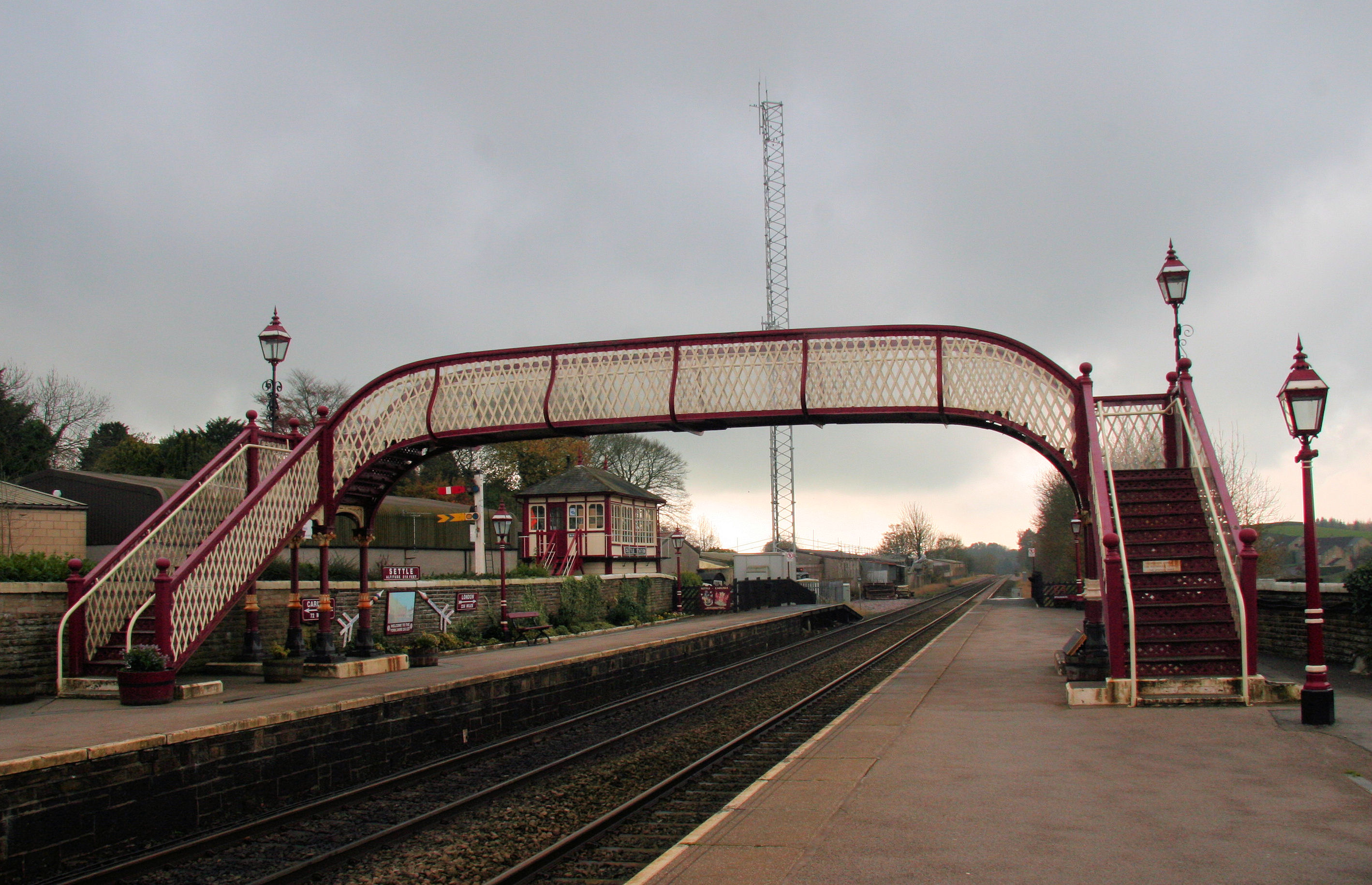
Today all the stations have been reopened and beautifully restored. The trains are busy and the line now carries significant amounts of freight. Well done Michael!
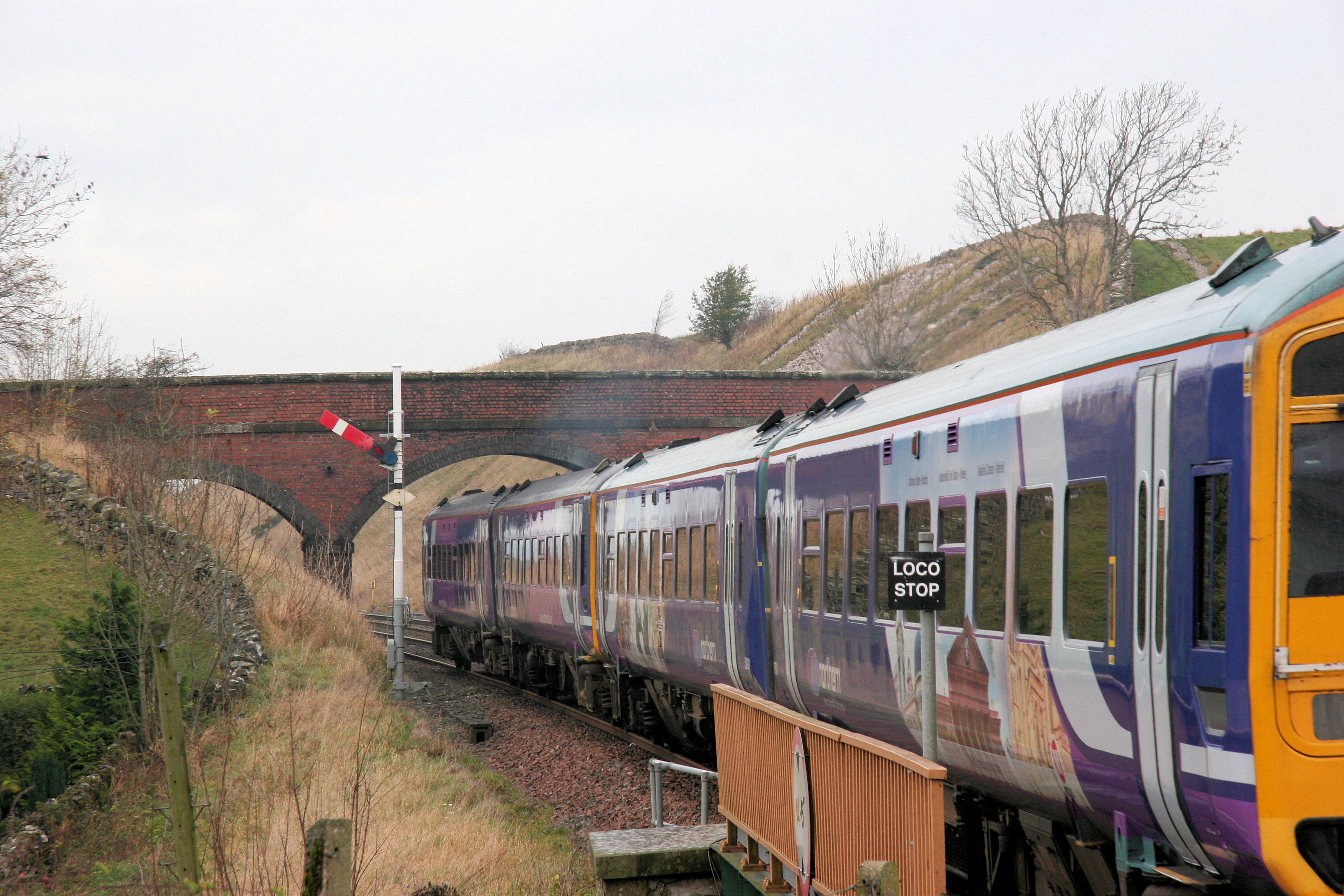
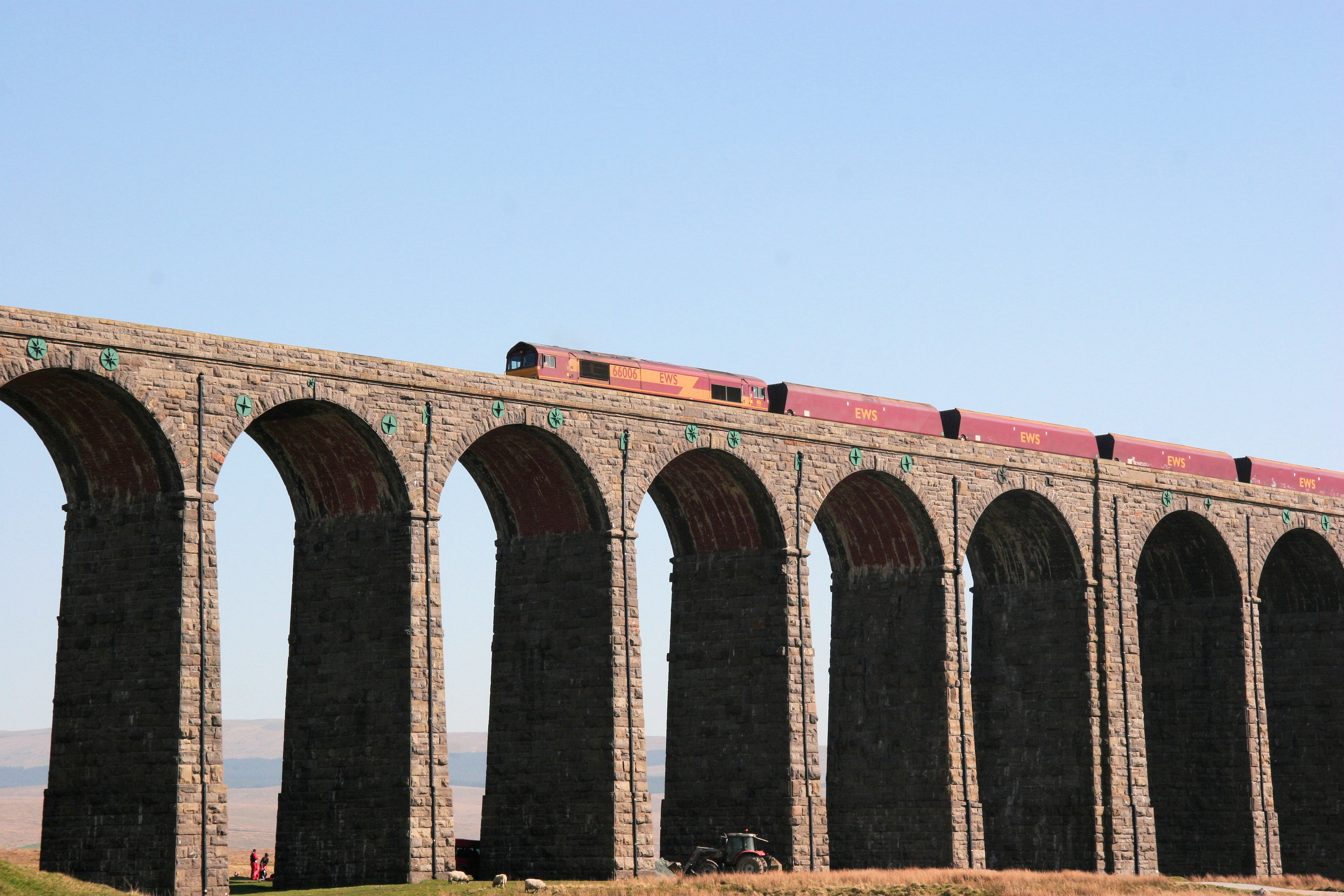
The Ribblehead viaduct, which was the main argument for closing the line, was repaired at a fraction of the original false estimate
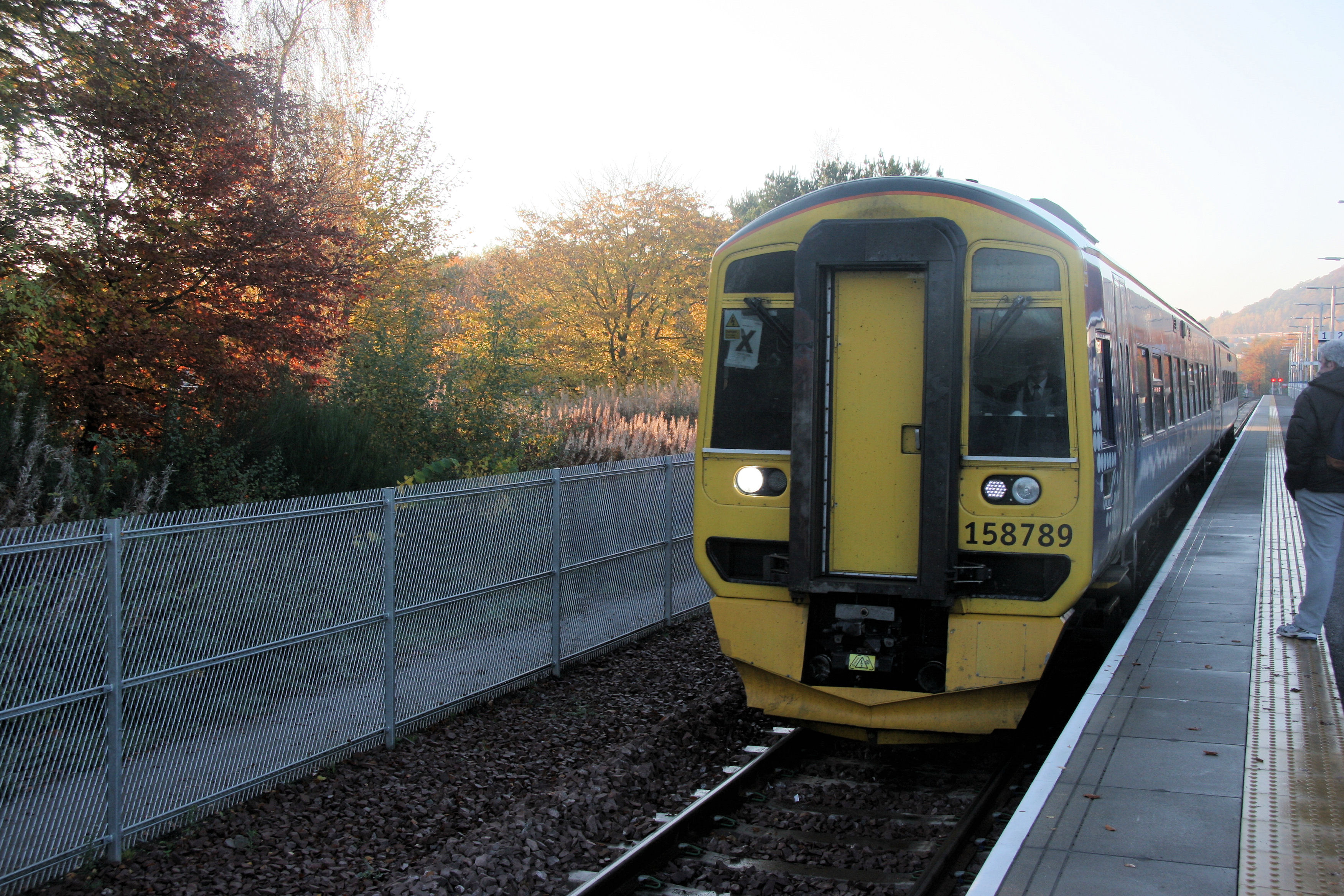
This is the rather ugly, functional station at Tweedbank, the terminus on the newly opened Border Railway from Edinburgh. It is great that lines are being reopened and perhaps this rather abrupt and strangely sited stop is merely a temporary halt before extending the line through Melrose, Hawick and perhaps even through to Carlisle.
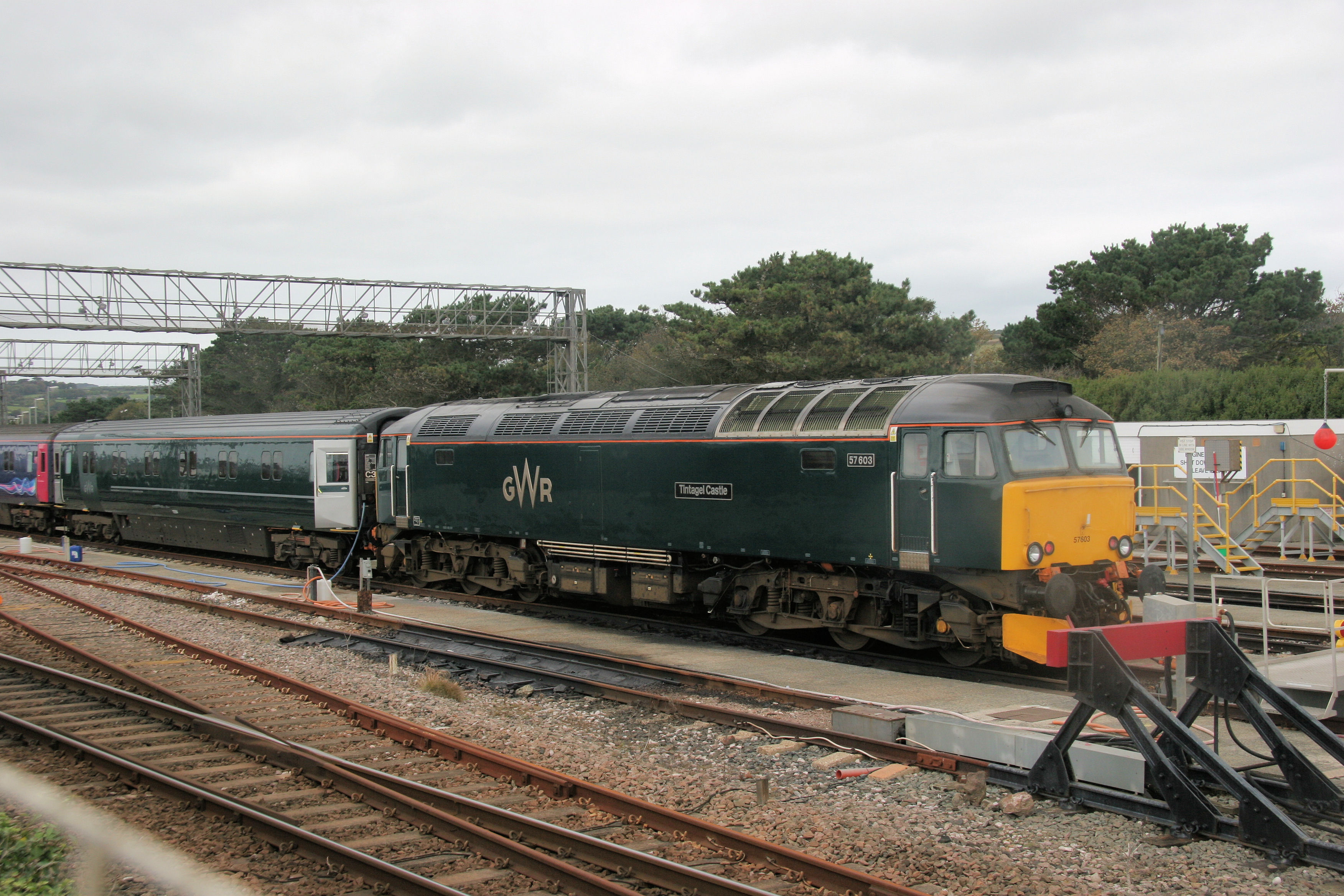
A rare sight! There are only two routes left with sleeper trains in Britain. This is the sleeper for London being seviced at Penzance.
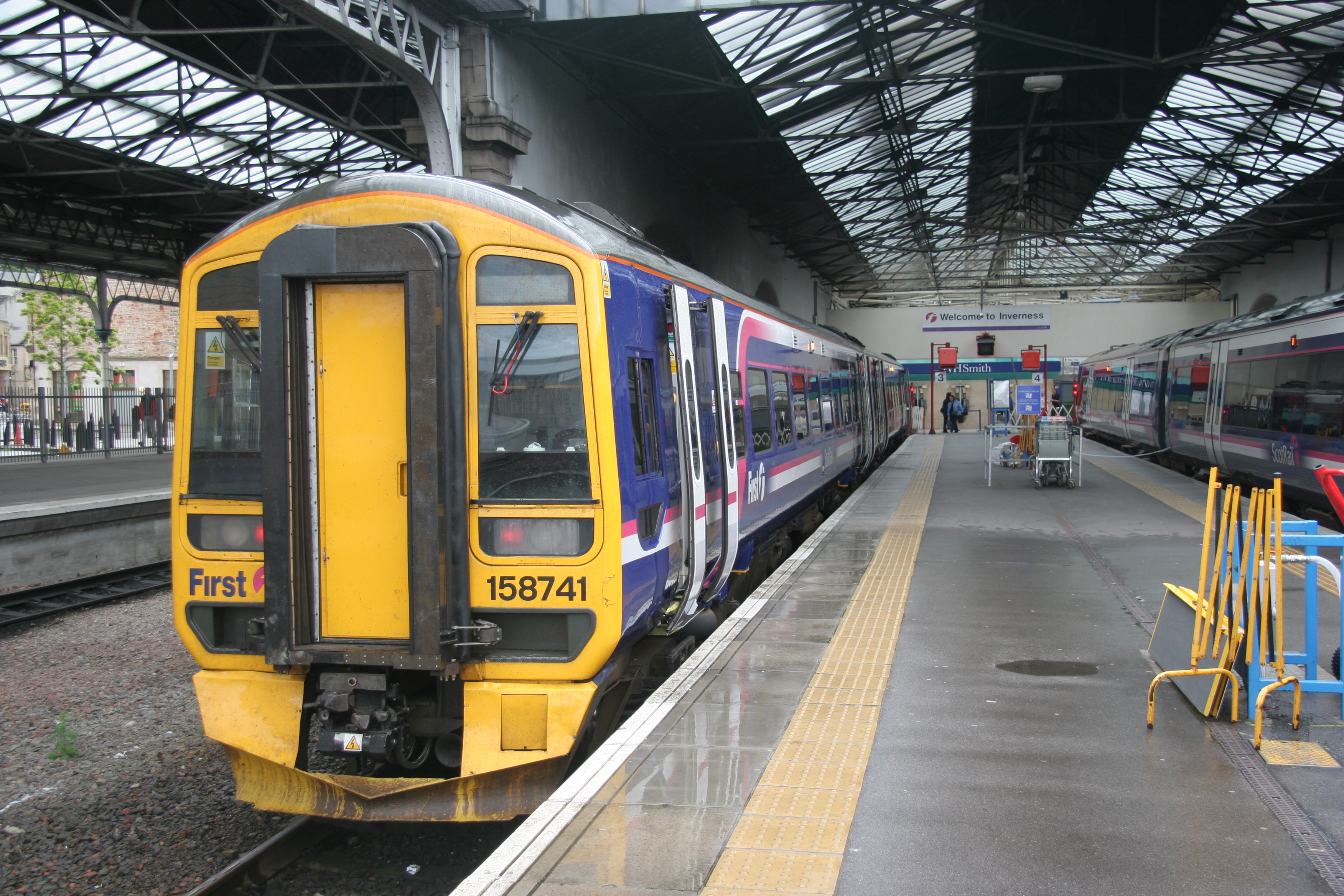
An Aberdeen train at Inverness
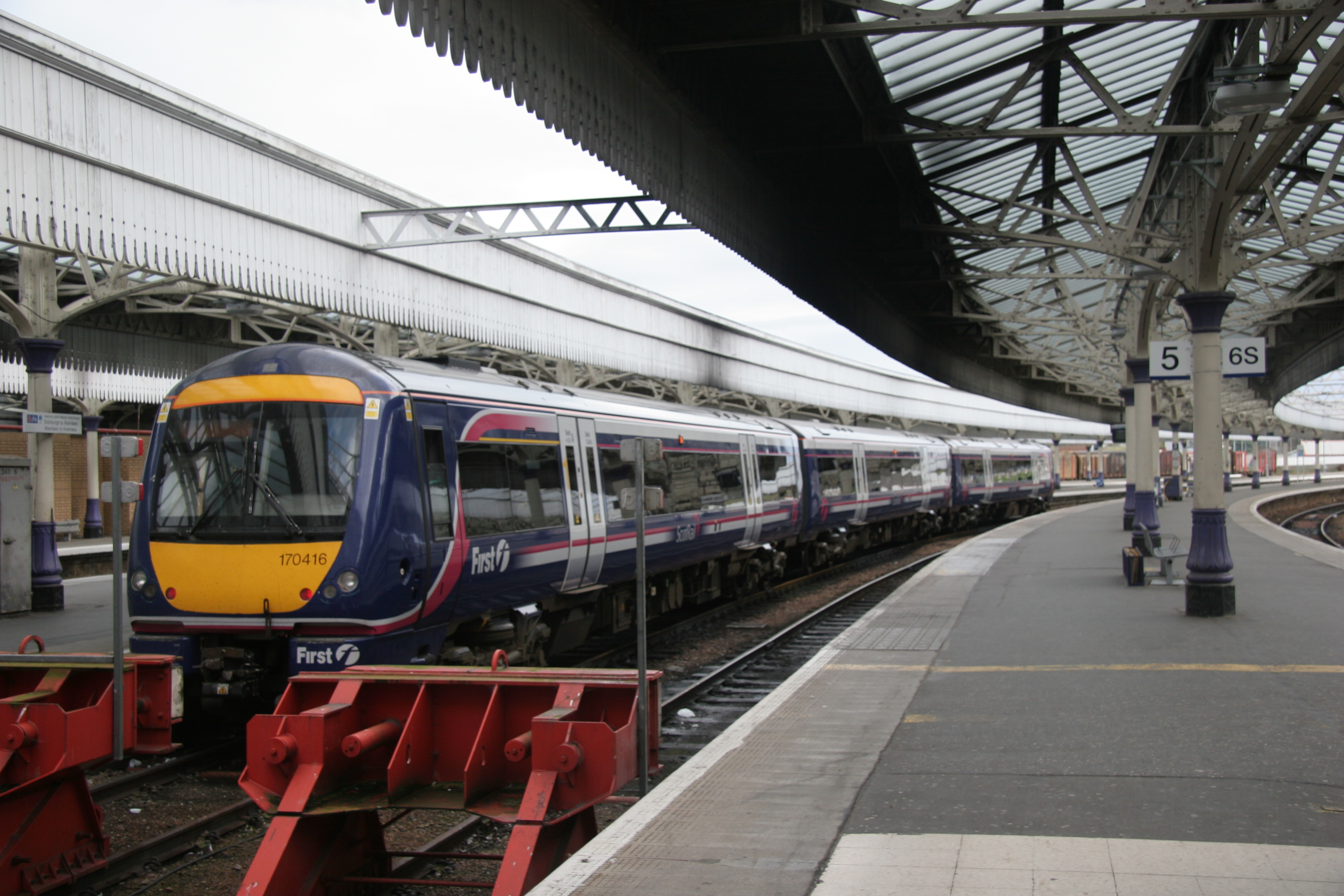
An Edinburgh train at Aberdeen
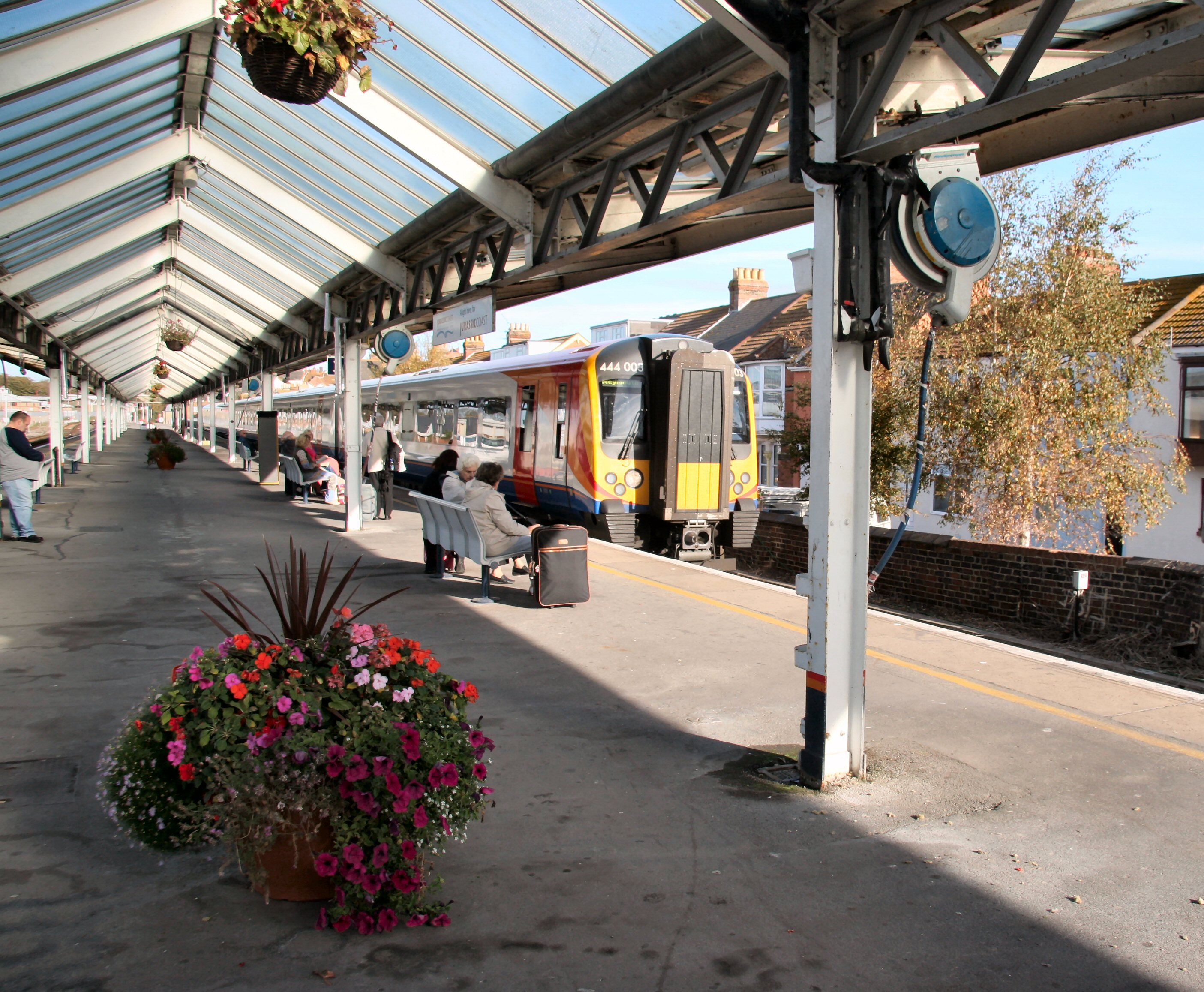
Weymouth station.
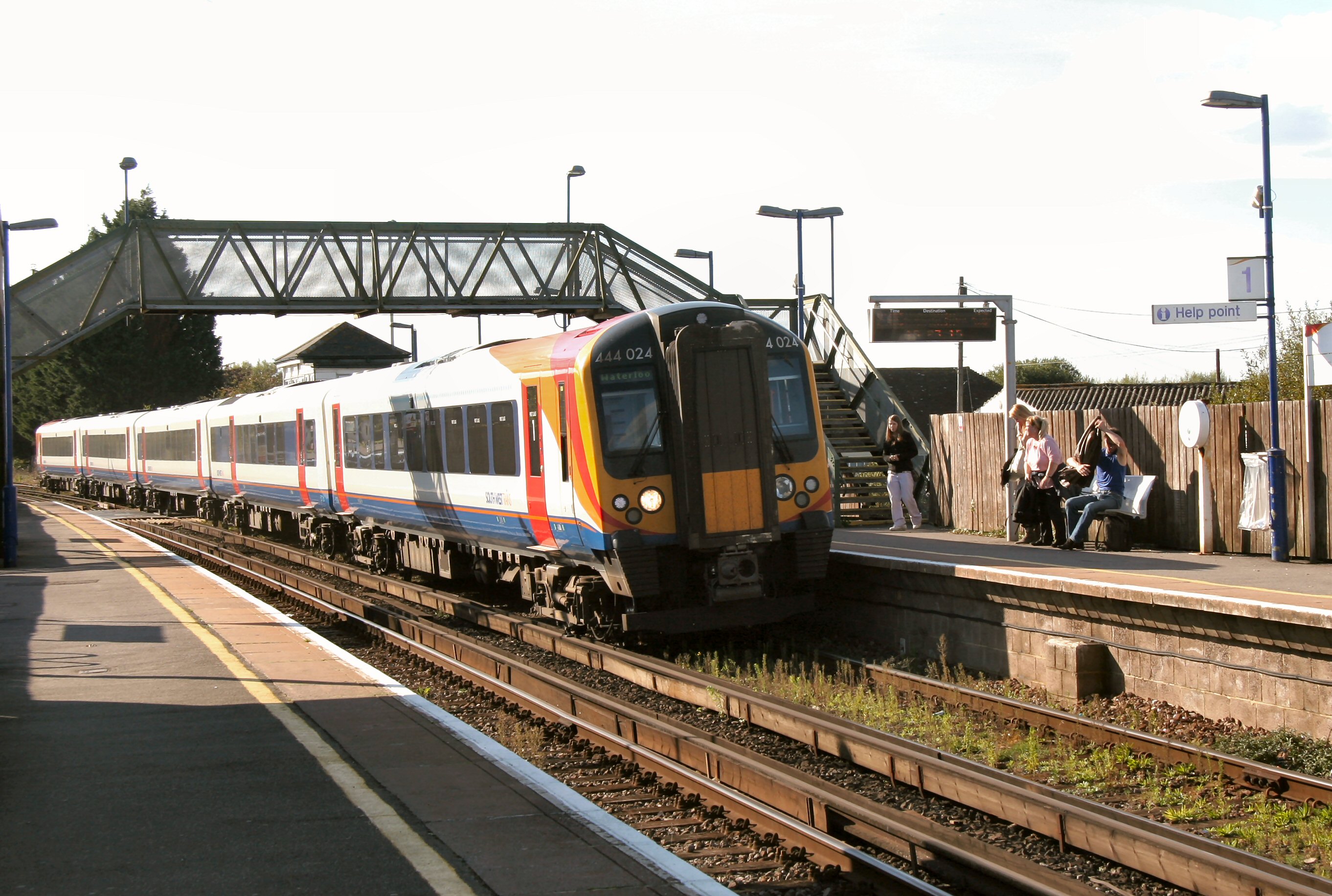
A Weymouth to Waterloo train calls at Wareham.
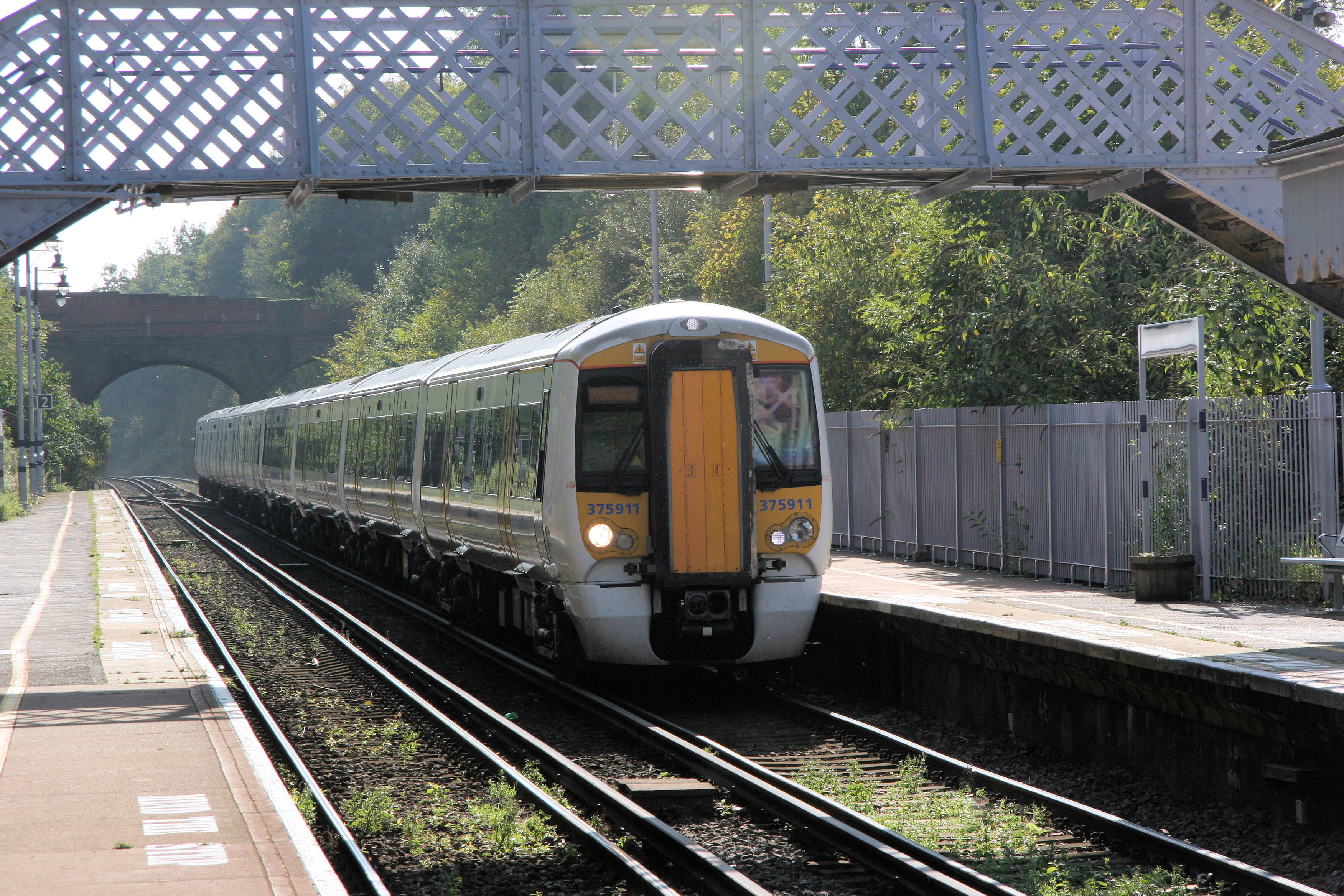
Battle
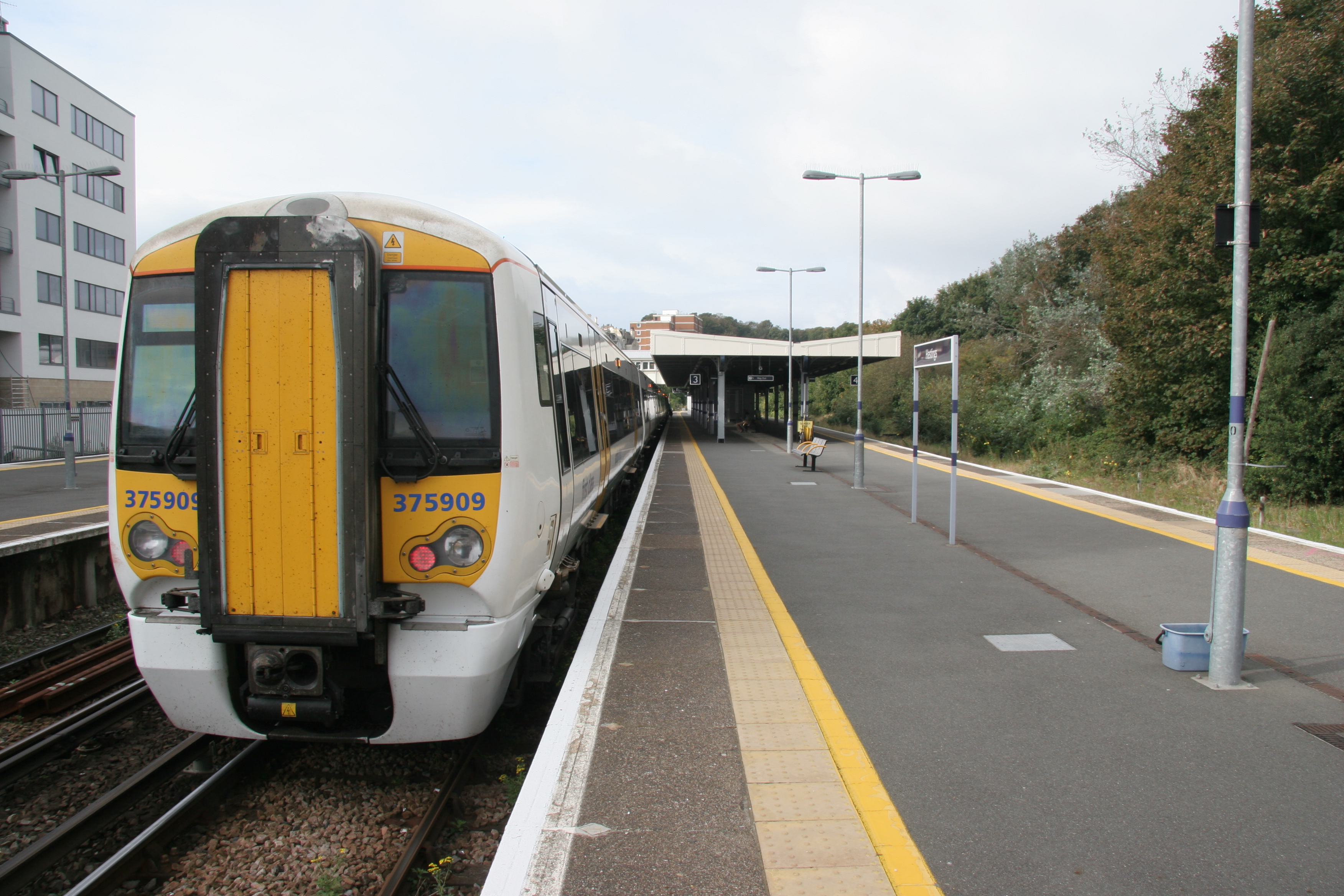
Hastings station is rather unmemorable.
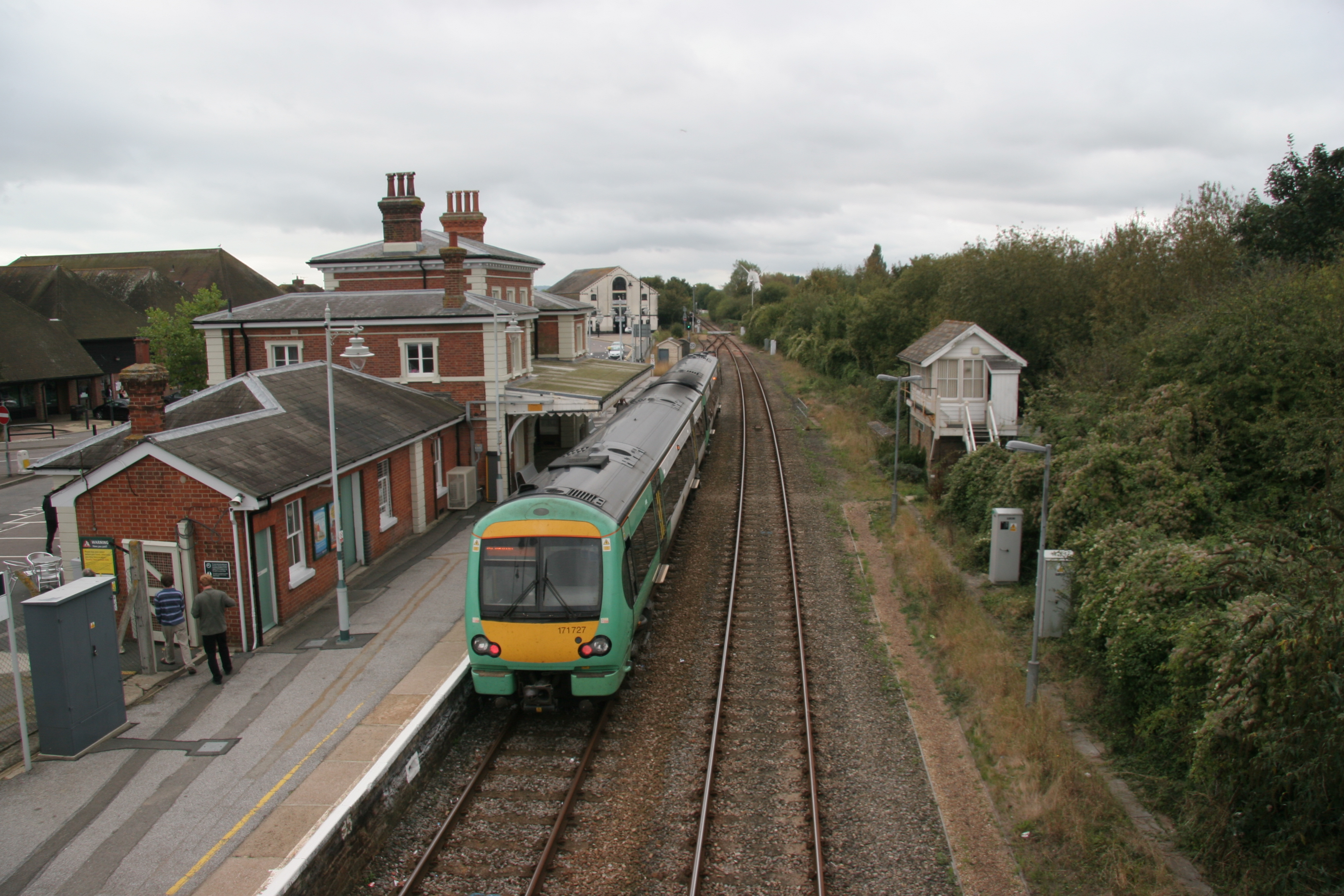
The surviving half of this station at Ryde is what the Southern Region used to look like,
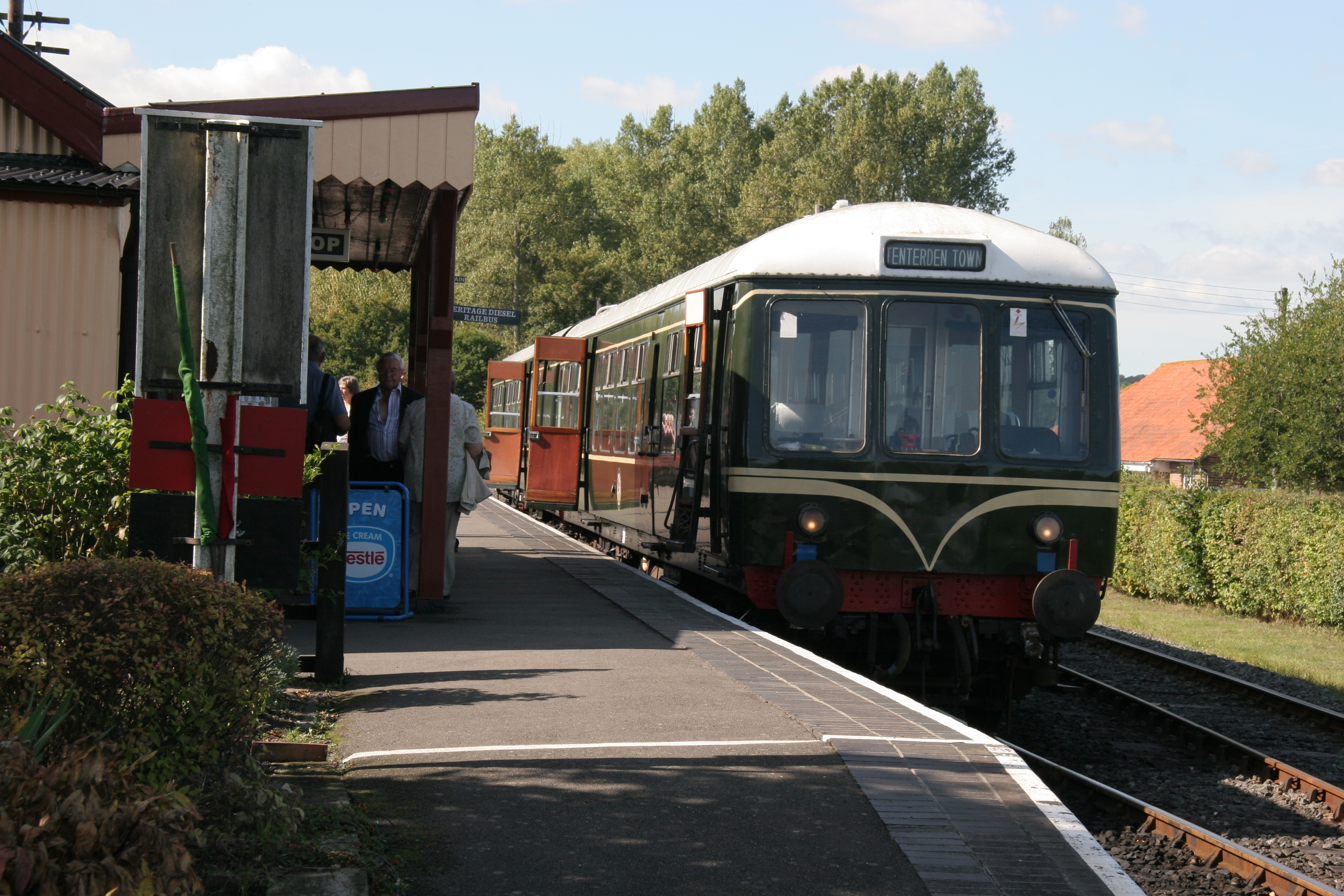
I remember those cat's whiskers on the very first DMUs to be introduced in the early sixties.
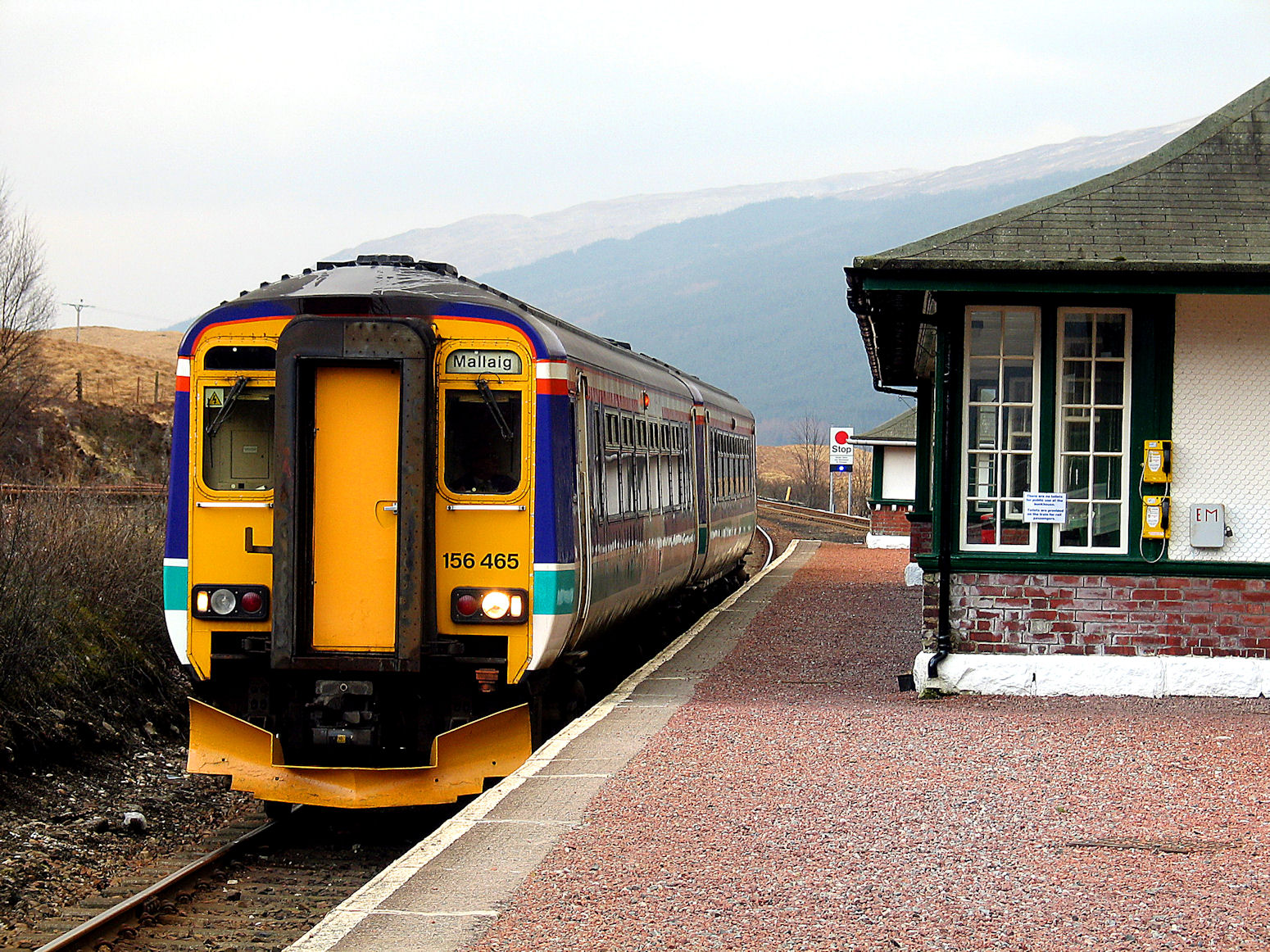
This is Bridge of Orchy on the West Highland line, not merely a station but also a hostel for walkers. The Glasgow to Mallaig train has just dropped off a few hill walkers. Perhaps they are going to go up the nearby Beinn Dorain or Beinn an Dothaidh, two Munros that tower over this section of the railway line, or they could be setting off along the west Highland Way, the long distance footpath between Glasgow and Fort William that runs parallel to the railway here.
A good day out is to walk between Bridge of Orchy and the next station down the line at Tyndrum on the West Highland Way, a very easy seven miles, then get the train back. If it is a bitterly cold day and there is some wind, it might make quite a difference to your enjoyment of the day if wind direction informs your choice of which way round to do the walk. (He reflects, with some bitterness.)
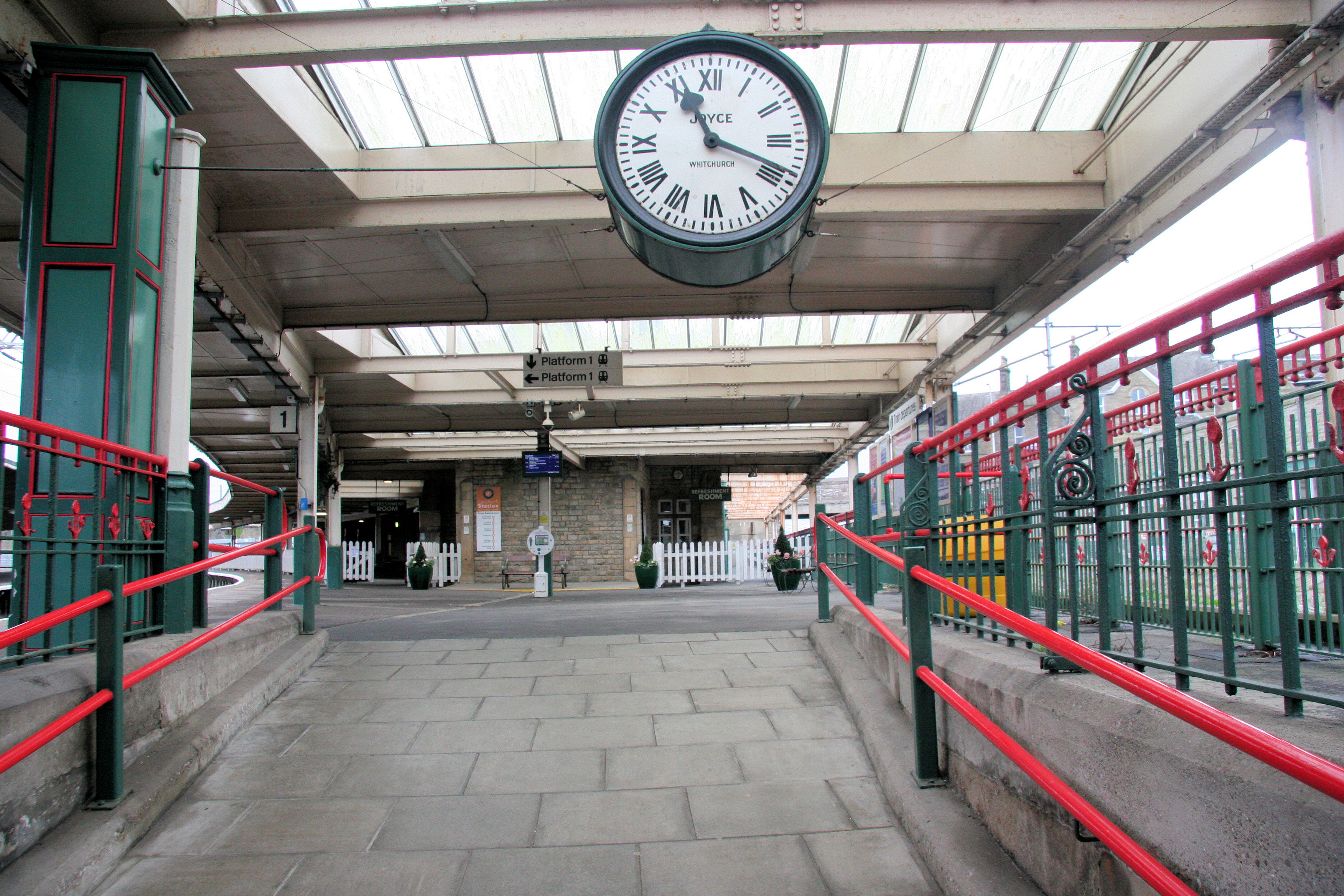
This is where the most famous "brief encounter" on a small station took place. This is Carnforth and it was under this very clock that Celia Johnstone and Trevor Howard embraced.
